






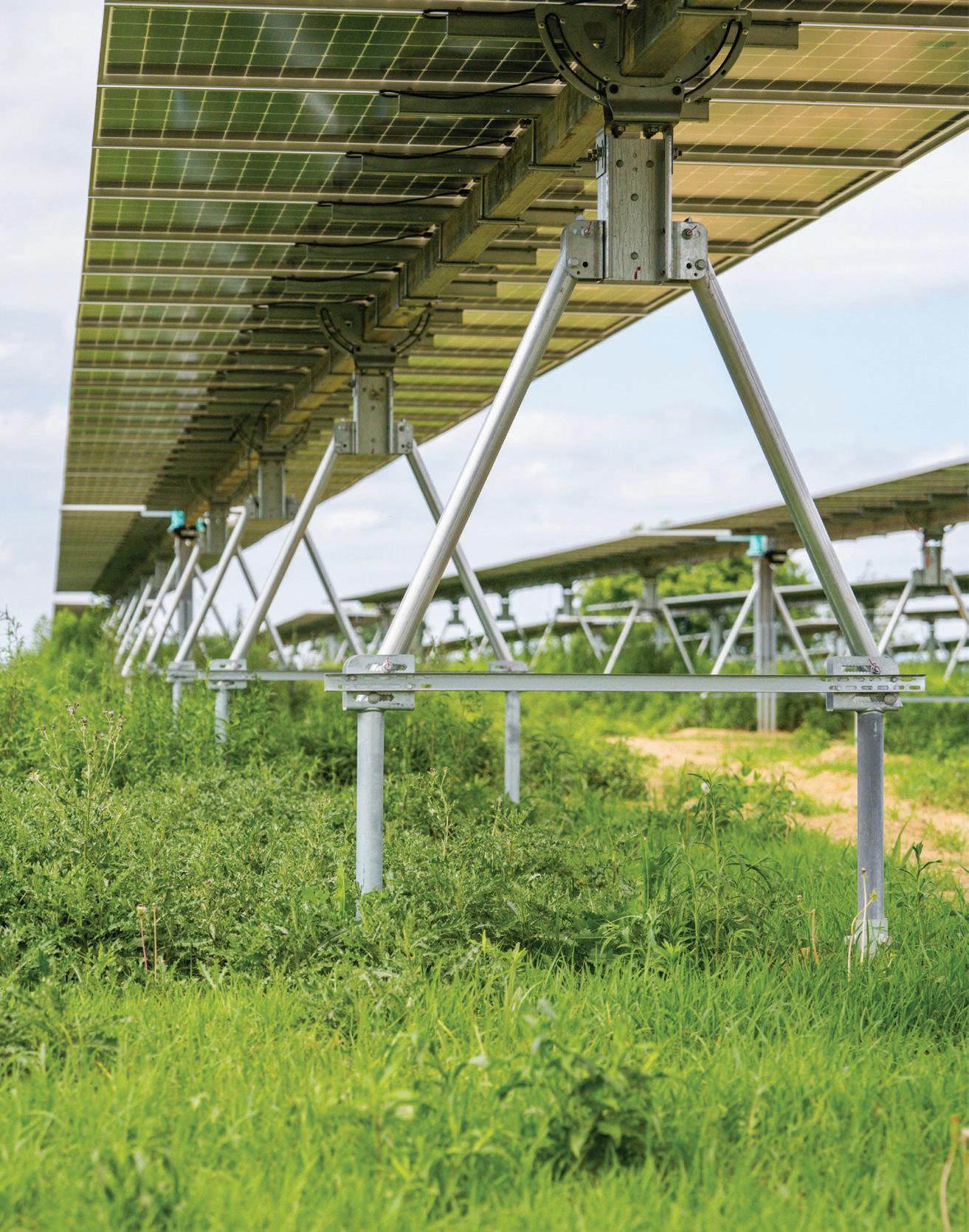



















Paige Renewable Energy’s kitting and logistics solutions save time, cut costs, and keep your projects running smoothly:
• Save Time: Pre-packaged kits organized by quadrant, mean less time searching and more time installing
• Efficient Installs: Custom kits delivered to specific areas ensure faster, safer installations
• Quality You Can Trust: Products packaged in a controlled environment with engineering support when you need it
• Tailored Services: Strategically coordinated deliveries and customized solutions keep your project on track and running smoothly
The result? Lower labor costs and higher productivity for your project.
Ready to boost productivity and cut installation time?
Contact Paige Renewable Energy today!


SVP, SALES & STRATEGY
Courtney Nagle
440.523.1685 cseel@wtwhmedia.com
EDITORIAL
Editor in Chief
Kelly Pickerel kpickerel@wtwhmedia.com
Managing Editor Kelsey Misbrener kmisbrener@wtwhmedia.com
Senior Editor Billy Ludt bludt@wtwhmedia.com

CREATIVE SERVICES & PRINT PRODUCTION
Art Director
Allison Washko awashko@wtwhmedia.com
AUDIENCE DEVELOPMENT
Director, Audience Growth Rick Ellis rellis@wtwhmedia.com
Audience Growth Manager Angela Tanner atanner@wtwhmedia.com
MARKETING
VP of Operations
Virginia Goulding vgoulding@wtwhmedia.com
Webinar Manager Lindsey Harvey lharvey@wtwhmedia.com
CUSTOMER SERVICE
Customer Service Manager
Stephanie Hulett shulett@wtwhmedia.com
Customer Service Representative
JoAnn Martin jmartin@wtwhmedia.com
Customer Service Representative Tracy Powers tpowers@wtwhmedia.com
Customer Service Representative
Renee Massey-Linston renee@wtwhmedia.com
Customer Service Representative
Trinidy Longgood tlonggood@wtwhmedia.com
LEADERSHIP
CEO
Matt Logan mlogan@wtwhmedia.com
SALES
Ashley N. Burk
737.615.8452 aburk@wtwhmedia.com
Jami Brownlee
224.760.1055 jbrownlee@wtwhmedia.com
Jim Powers
312.925.7793 jpowers@wtwhmedia.com
Danny Glazier
773.835.0800 dglazier@wtwhmedia.com



The United States installed 50 GW of new solar capacity in 2024, the largest single year of new capacity added to the grid by any energy technology in over two decades. More than 16 GW was installed in the fourth quarter alone. The companies behind those huge numbers? All right here on the 2025 Top Solar Contractors List Working in the solar industry has never been easy; it sometimes feels like two steps forward, one step back. A record-breaking installation year, then a new round of lobbying Congress to save our progress. That’s why we must celebrate when we can, and Solar Power World is happy to present the 2025 class of the best installation companies in the country. Over 400 contractors make up this year’s list, installing solar in every state and also Washington, D.C., Puerto Rico and Guam. While the commercial and residential markets are the most



popular for our Top Solar Contractors, there are quite a few who participate in all four core markets. It’s great to see that diversification among our listees. It will help when adapting to the latest market conditions to keep all our hardworking solar installers employed in this vital energy industry.
That’s who we’re really celebrating on the 2025 Top Solar Contractors List — the thousands of Americans behind the company names. Your work is valued and appreciated, and we hope you enjoy learning the stories of other successful individuals featured in this magazine.
We can’t wait to celebrate another year of tenacity in the solar market with our 2026 List — our 15th edition! See everyone soon. SPW





Kelsey Misbrener
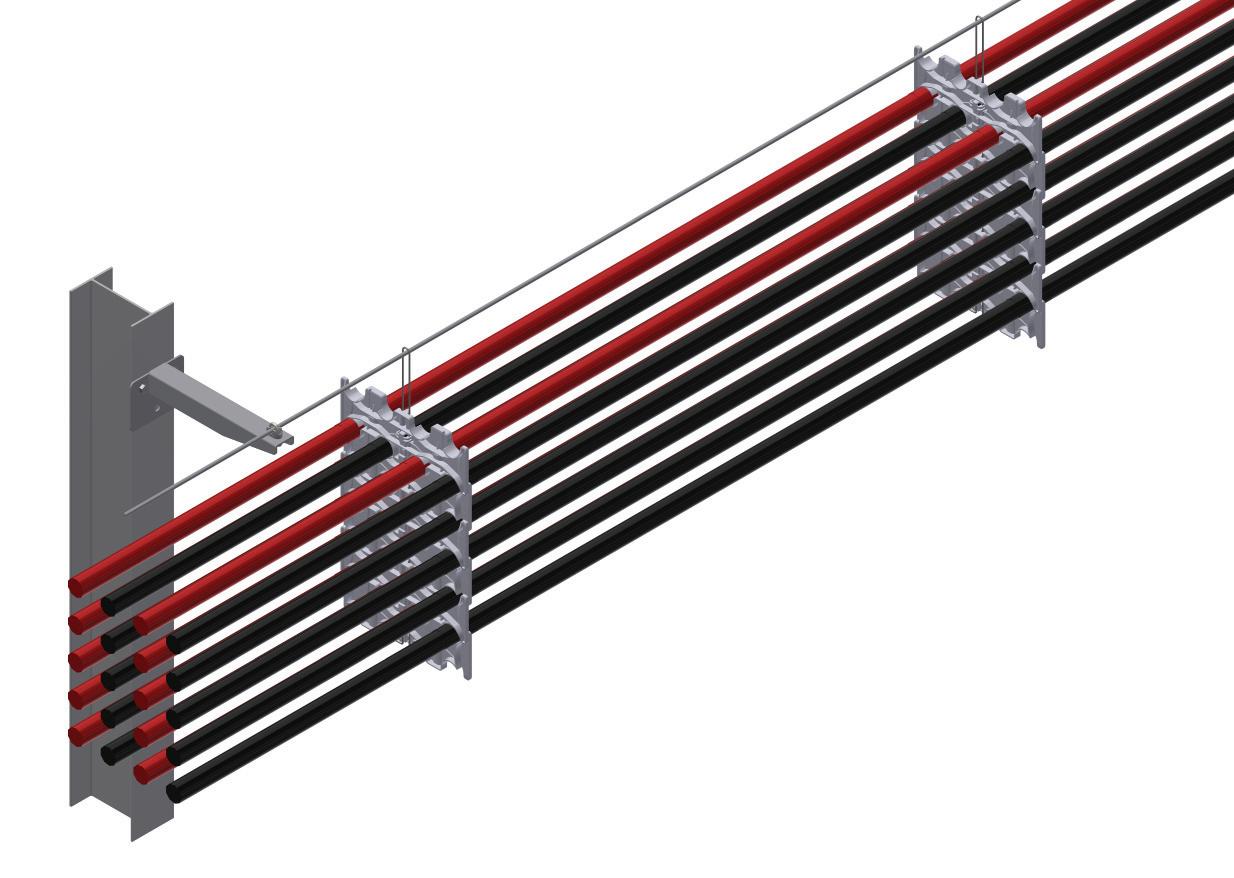
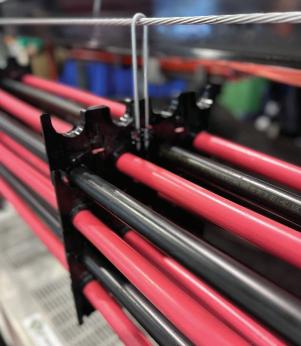
The Solar Snake Max for Single Messenger Wire is our new innovative cable management system for AC and DC cables. The clicks maintain NEC 310.15 free air separation allowing the cables to operate efficiently and yield up to 30-watt hours per meter more energy, far surpassing that of trenched or bundled cables.
• Above ground, free air design requires no bundle or raceway derating of cable, saving large amounts of copper or aluminum
• Adjustable clicks can accommodate any size cables up to 1250 Kcmil
• Each tier of cables can accommodate a different cable size, facilitating voltage drop cable size step-ups
• The ample cable separation also makes the system IPC compatible for trunk-bus applications
• Snap-together components require no tools to facilitate easy installation, inspection and maintenance

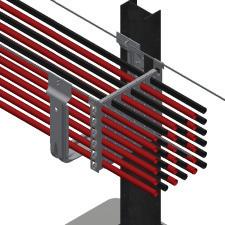

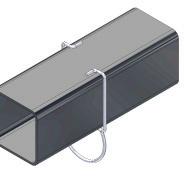
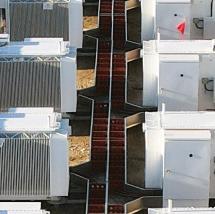
Snake Tray® products are covered by one or more of the following patents: #8783628, #8985530 , #10944355 B2, #10666029, #11271519 B2, #20210194419 A1, #2020030461, #20190229507, #8985530 B2, #20210126445 A1, #20200403390, #10666029 B2, #US 2024/0275152 A1. Other Patents Pending.





In this issue, we celebrate the over-400 companies on the 2025 Top Solar Contractors List. Check out all the rankings on the main list, explore the sub-lists for markets, services and states and read our special features on some standout contractors in the pages that follow.
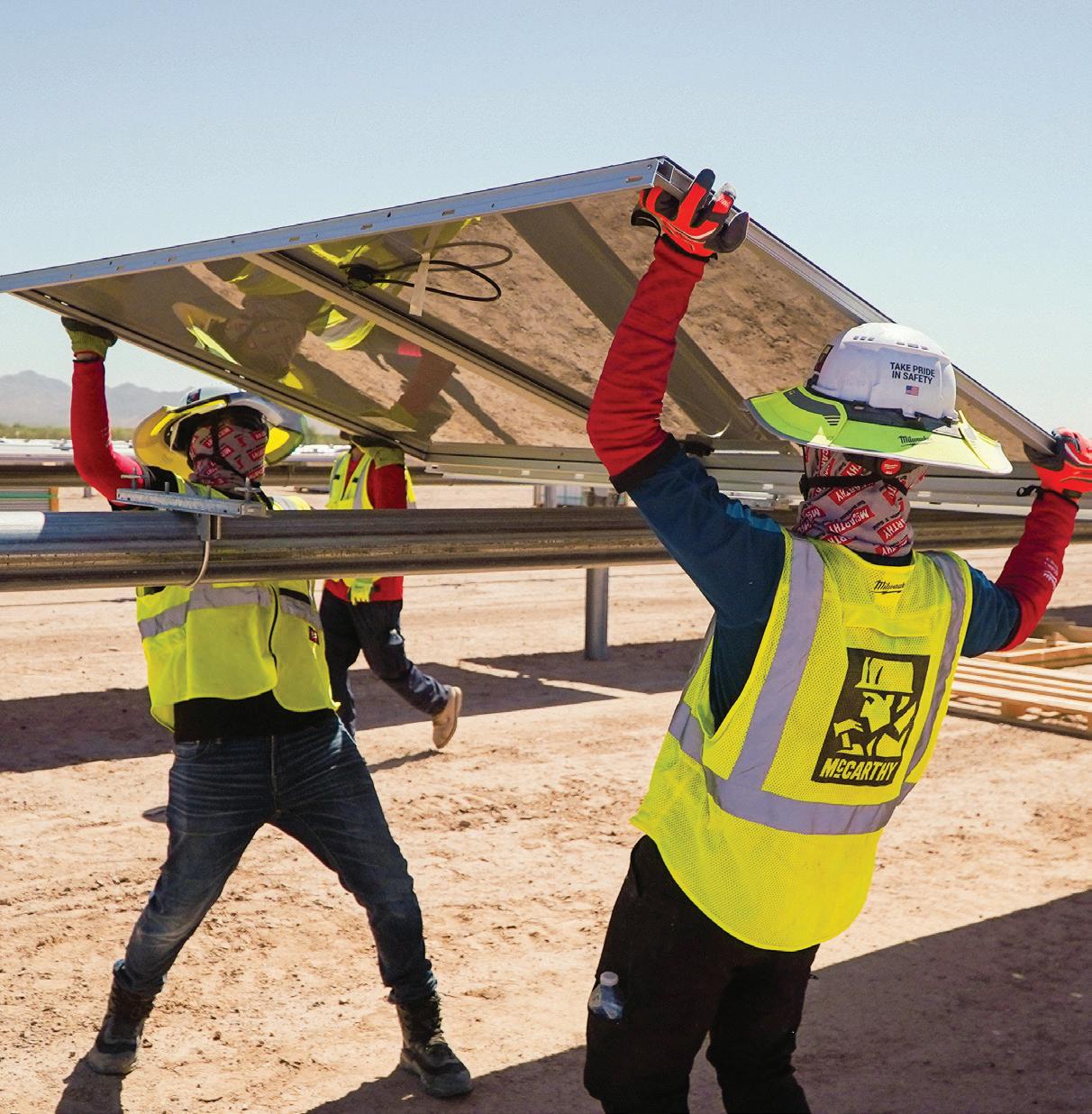
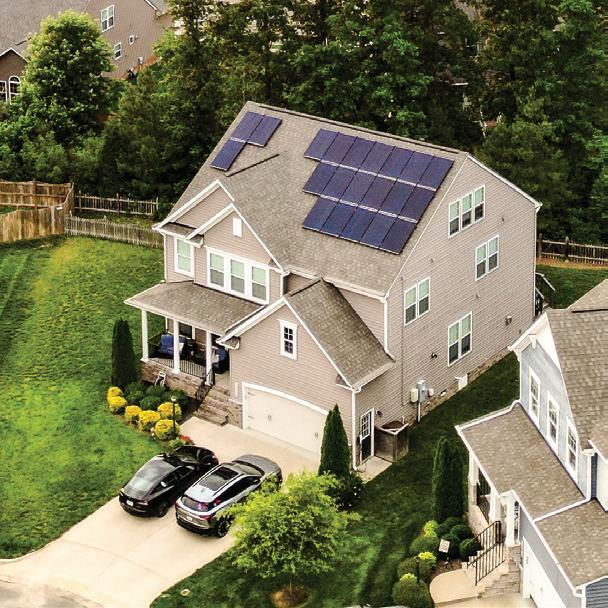
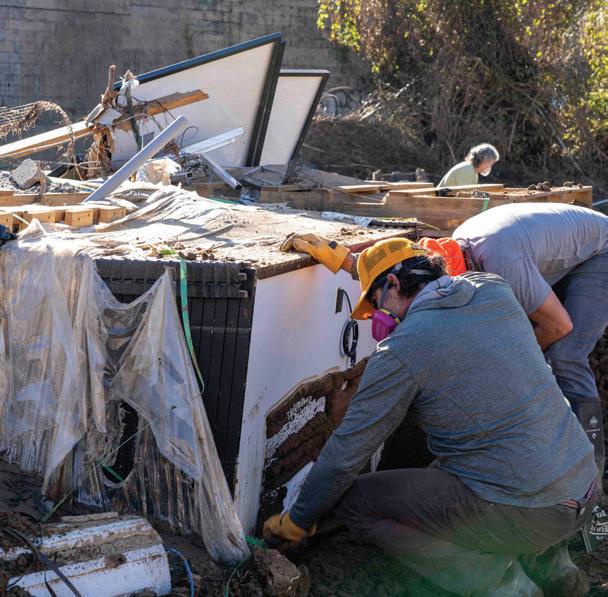


When every second counts, Aurora AI is here for you.
The next evolution in solar design is here just in time. Powered by 4X more data, Aurora AI v2 generates high-resolution 3D models in under 10 seconds and detects 25% more rooftop obstructions. For sales, design, and strategy—Aurora AI v2 is your advantage.












This year’s Top Solar Contractors class installed PV in every state, Washington, D.C., Puerto Rico and Guam in 2024.
Top Solar Contractors are headquartered in every state except Mississippi, North Dakota and Oklahoma.
Top HQ by State
More than one-quarter of Top Solar Contractors are based in the West. Top HQ by


Installed in 37 states

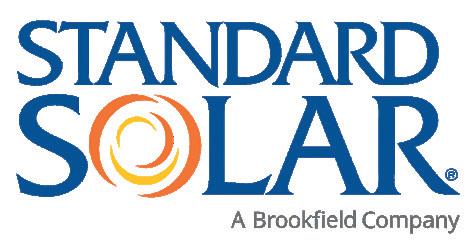
Installed in 15 states Installed in 14 states Installed in 32
Installed in 13 states
Installed in 13 states
Contractors first broke the 1-GW installation mark in 2014. This past year, our No. 1 contractor reached 10 GW of annual installs.
TSC-listed companies installing 1 GW or more:



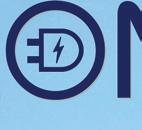
















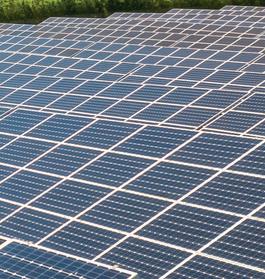

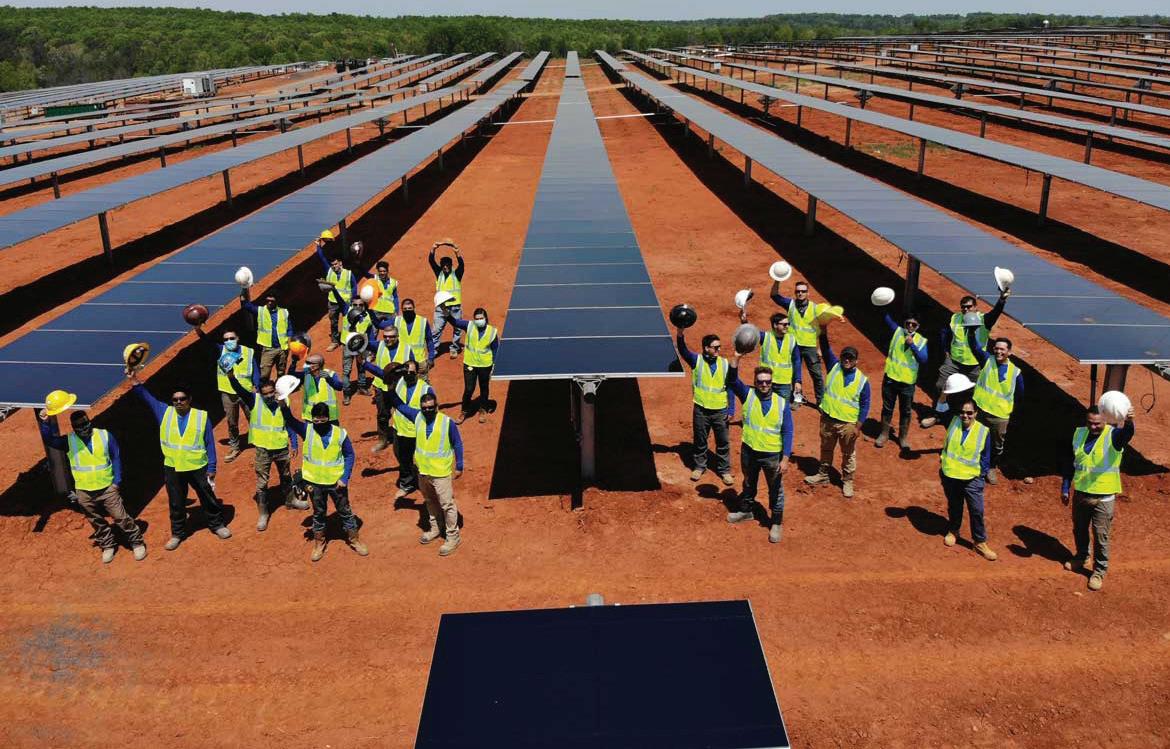


It

It
We






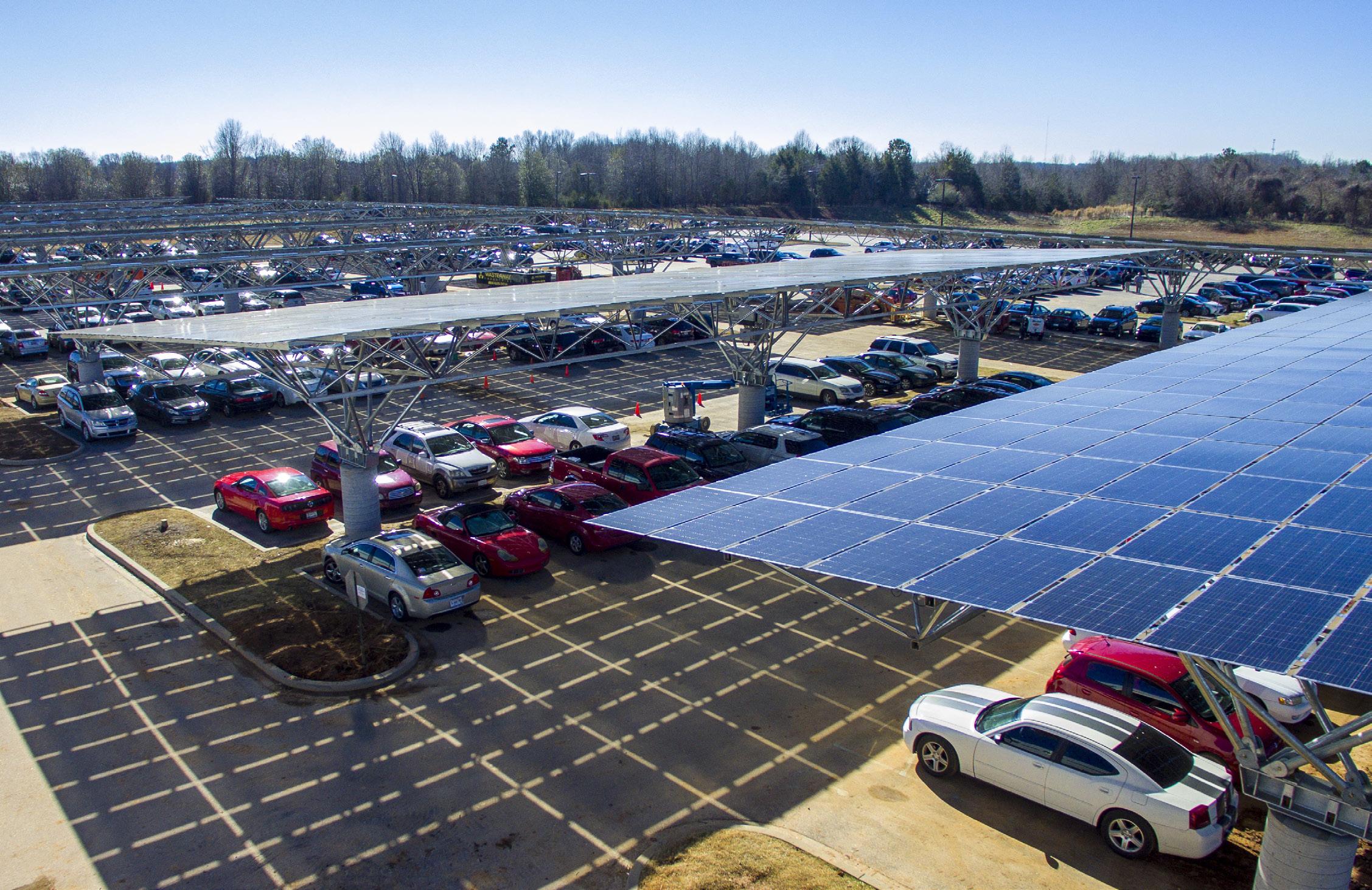
Upgrade Your Roof with Top·Rack™ Streamline Your Solar Projects. Maximize Your Profits. At Top Rack Technology, we design and manufacture cutting-edge solar racking systems that help contractors save time and money--- while ensuring long-term reliability.
Why Contractors choose
Top Rack Technology:
Durability, Efficiency, Versatility, Fewer SKUs, Longer Warranty
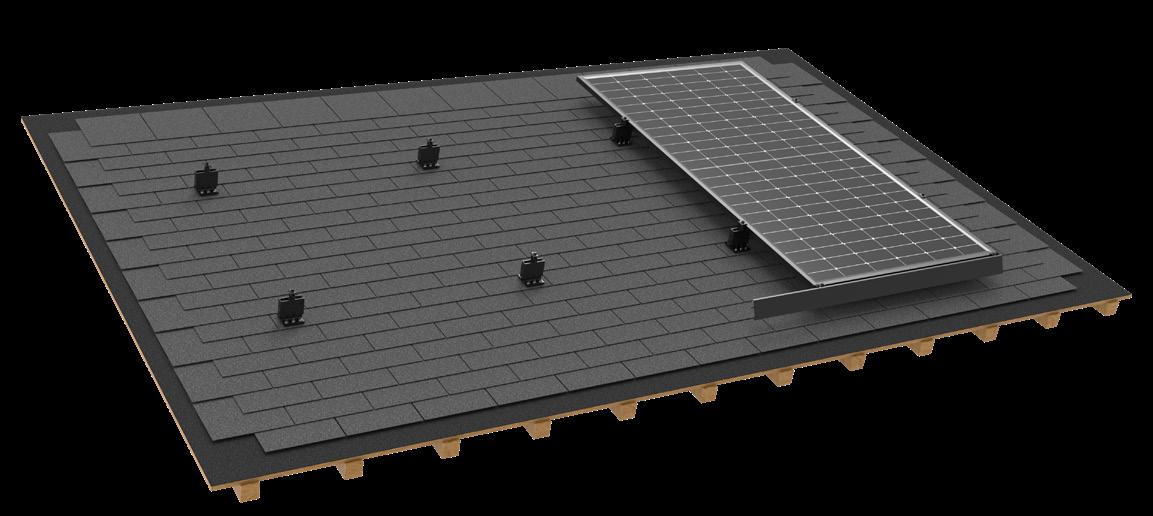
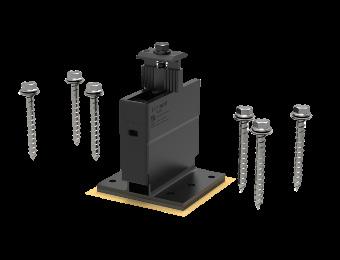
Rail-less System(TRT™-01):
• Sleek, modern design – no rails required
• Cost-effective solution.
• Lightweight and easy to carry, reducing installation risk.
• Adjustable base height accommodates uneven roof.
• No need to locate truss - install anywhere on the roof.
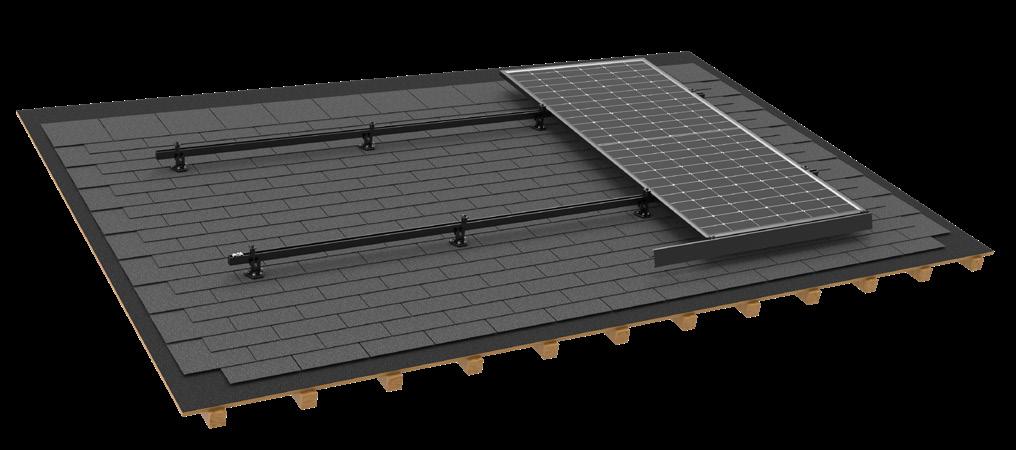
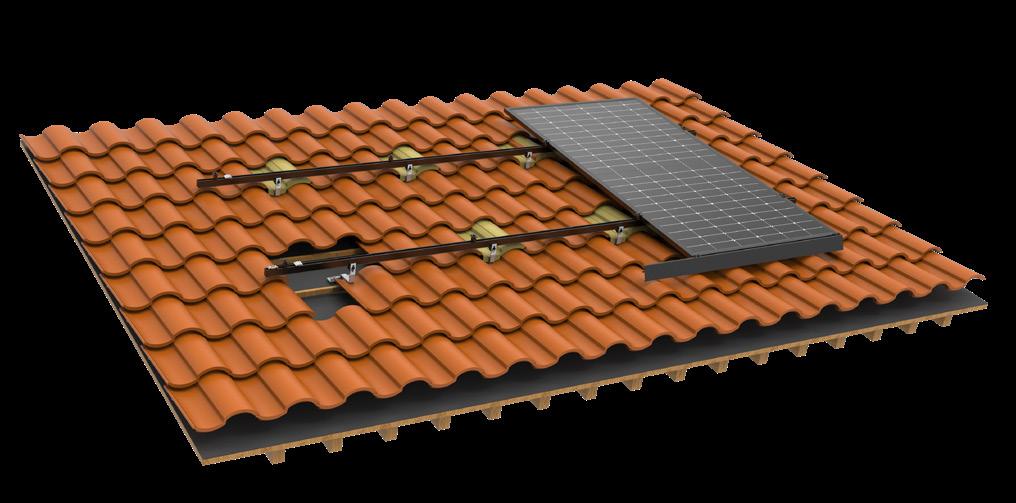

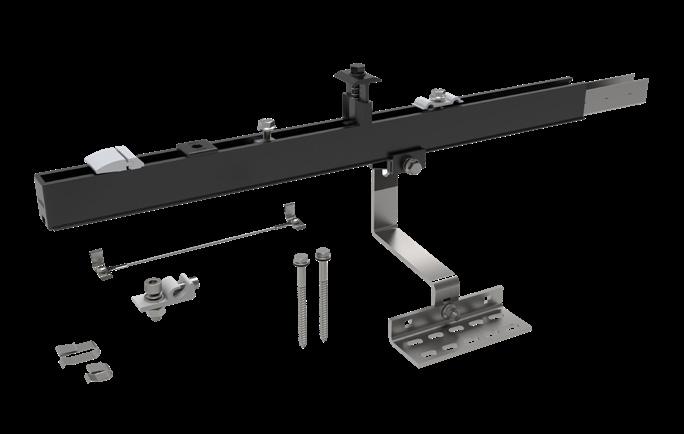
Rail System(TRT™-02 and TRT™-03):
• Innovative base design with pre-assembled screw enables fast installation, reducing labor and improving rooftop safety.
• Rotatable mid-clamp and wire-manageable rail and streamline installation and enhance convenience.
• Quick-connectors ensure faster and more efficient assembly.
• Easily supports complex configurations with minimal hassle.
Let’s build your growth plan—smart,

and

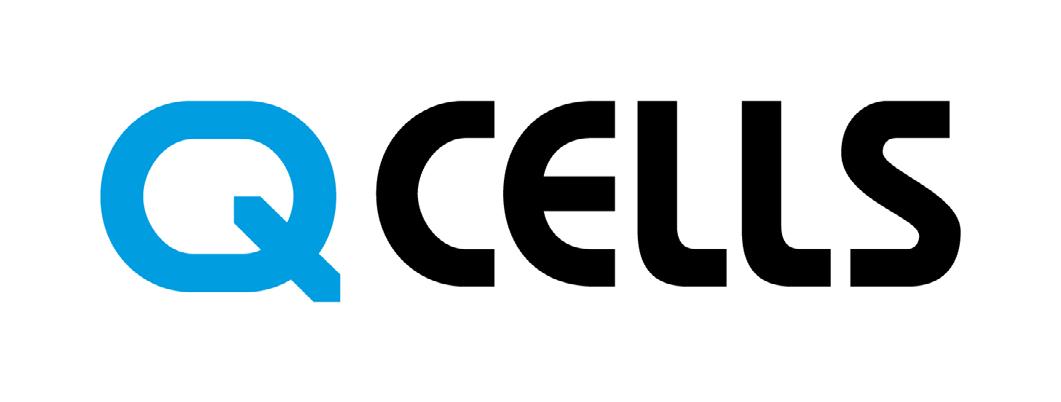
Runners-up: REC, Jinko, Silfab, Canadian Solar & Trina (tie)

Runners-up: IronRidge, Unirac, Array Technologies, K2 & SnapNrack (tie), Nextracker

Runners-up: HelioScope, OpenSolar, Solargraf, Scanifly

Runners-up: SolarEdge, Tesla, SMA, CPS

Runners-up: Enphase, FranklinWH, SolarEdge, EG4
Runners-up: BayWa r.e., Krannich, Platt Electric, Wesco
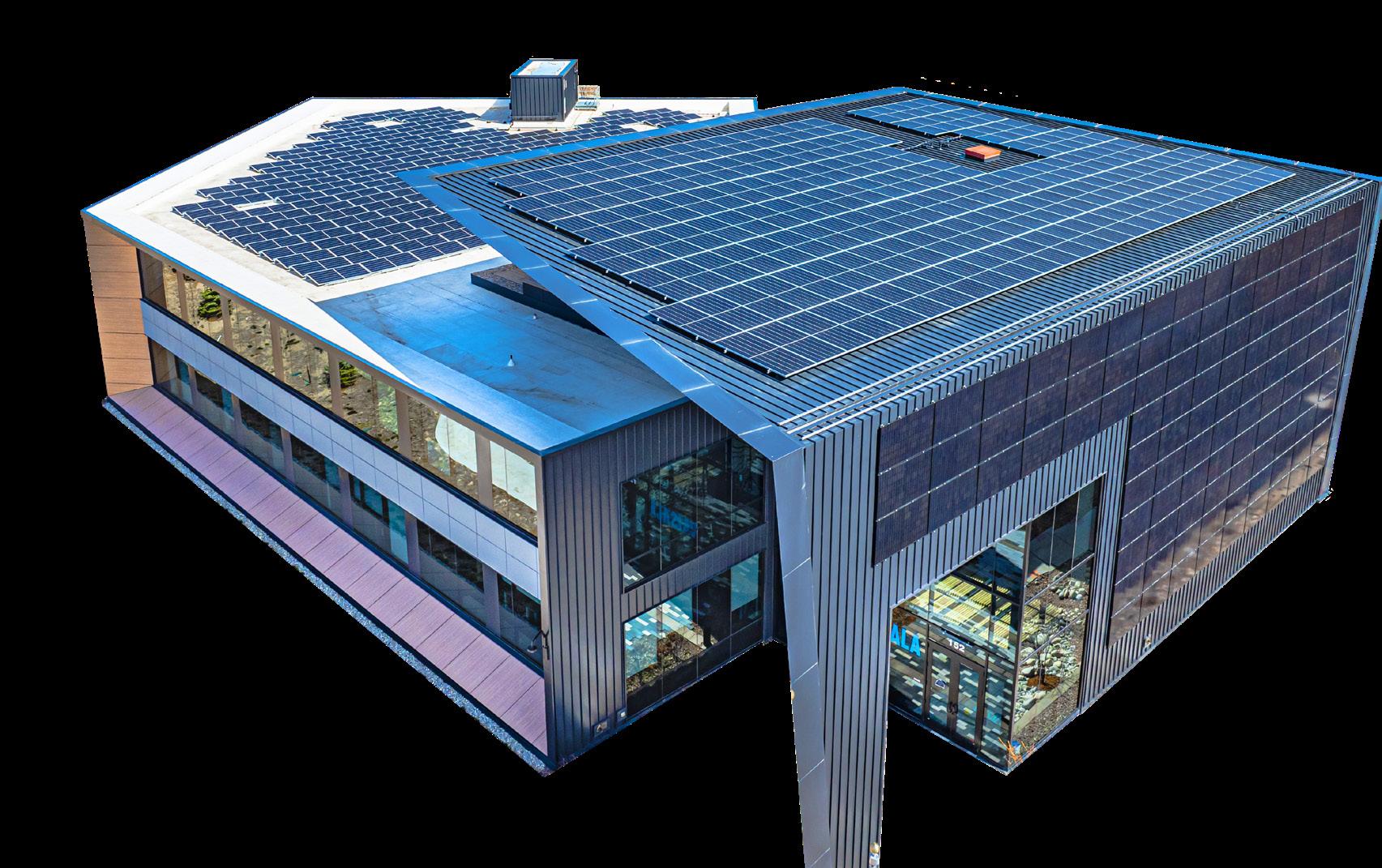




Are VPP opportunities helping with sales?

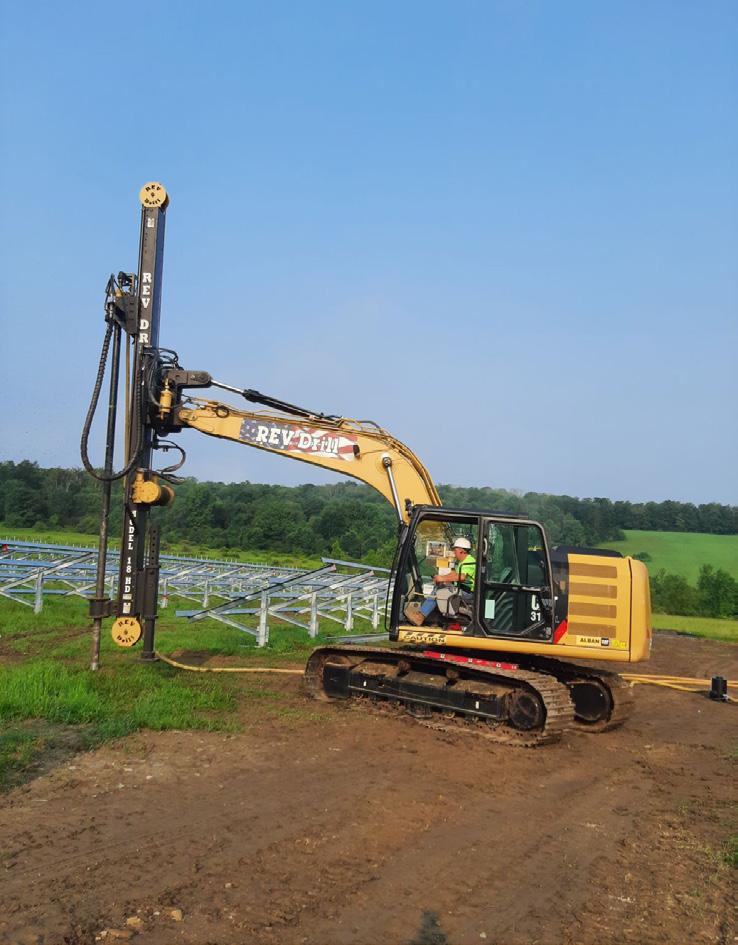




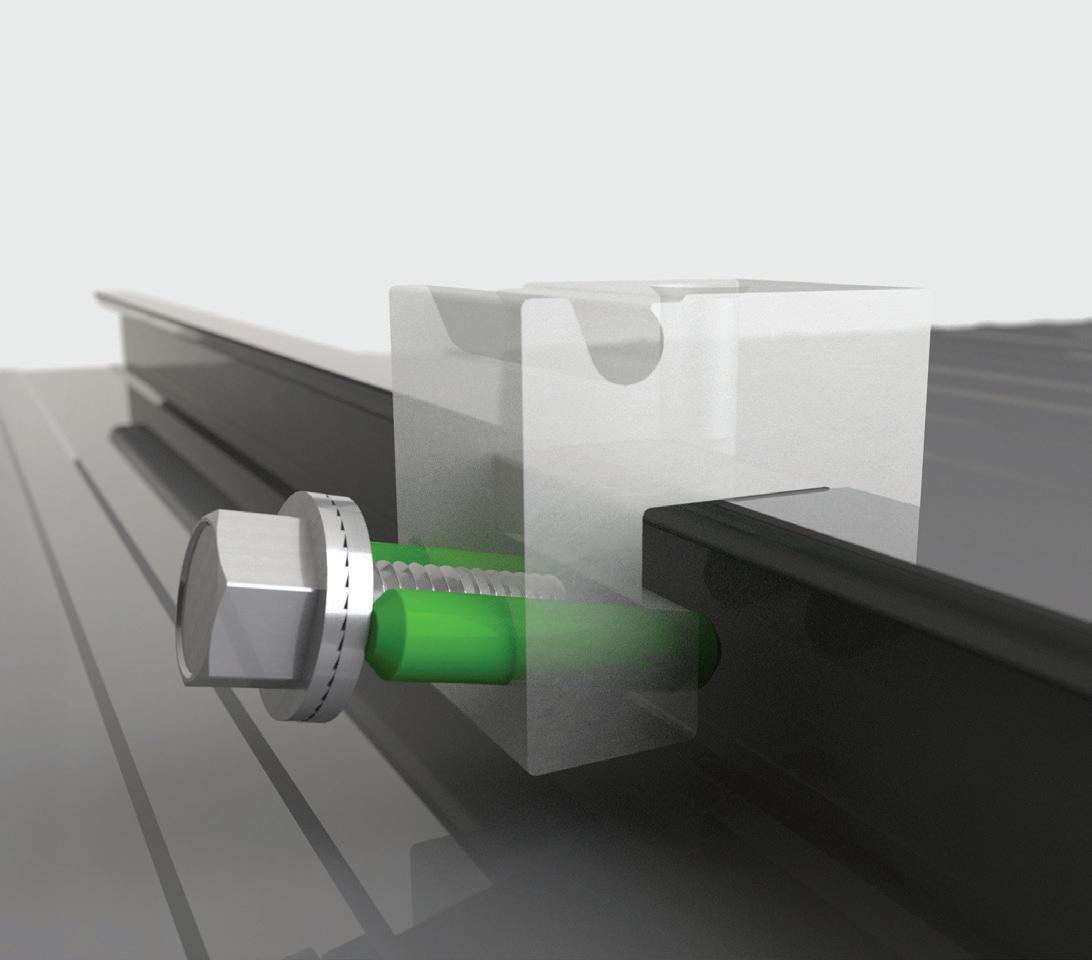








































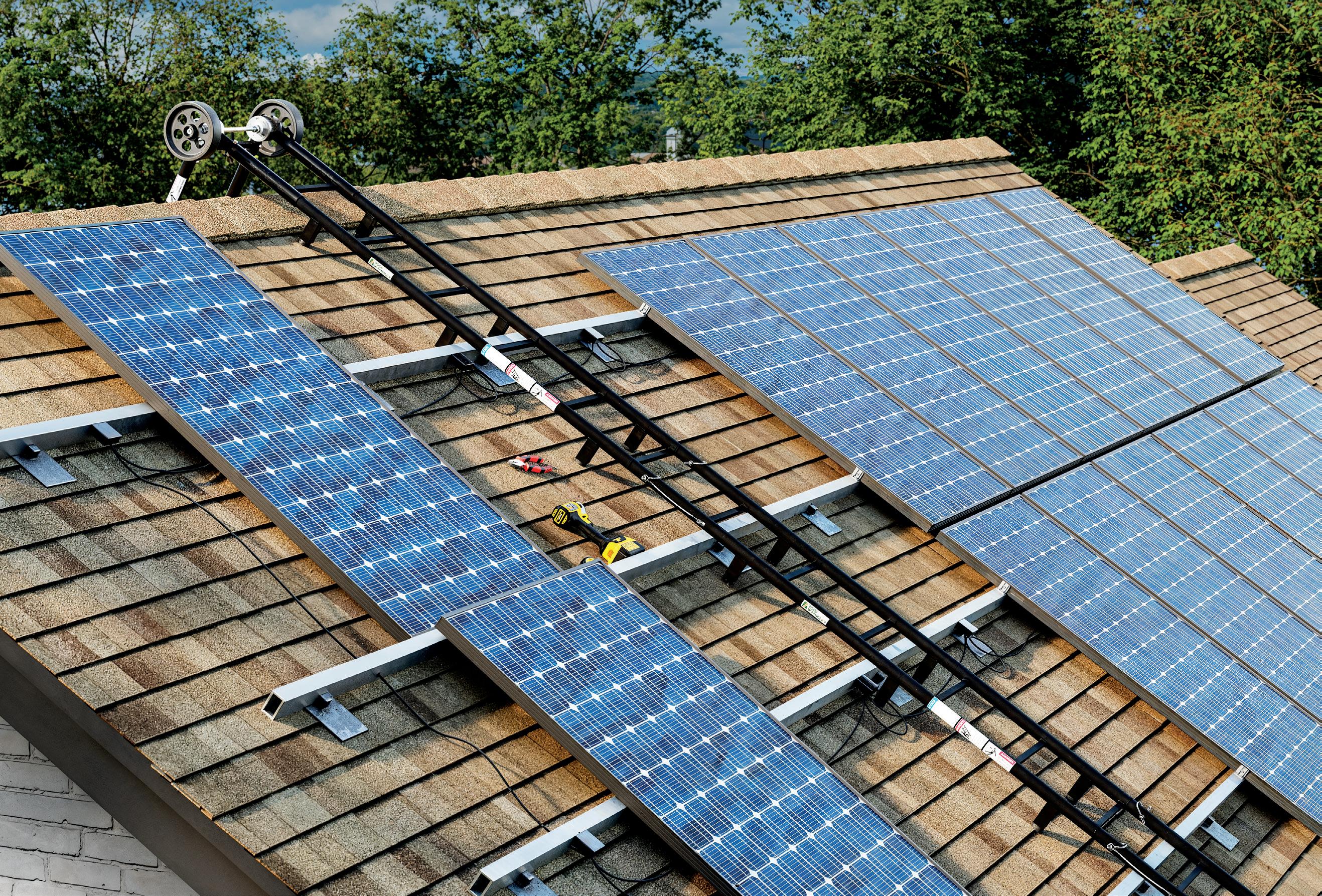

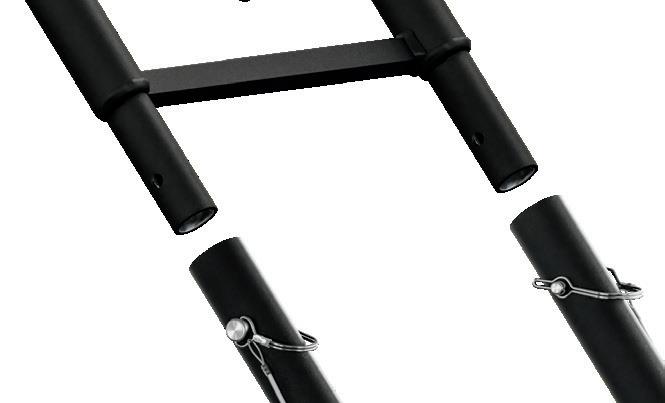
• Fast and easy placement with 7" scratch resistant wheels.
• Head adjusts for pitches 7/12 to 18/12. Folds flat for easy storage.
• Lengthen by adding 6' ladder sections. 12" rung spacing.
• Fully OSHA compliant when using a proper safety harness.
• 3" toe engagement. Replaceable rubber bumpers.
• Powder-coated aluminum construction.
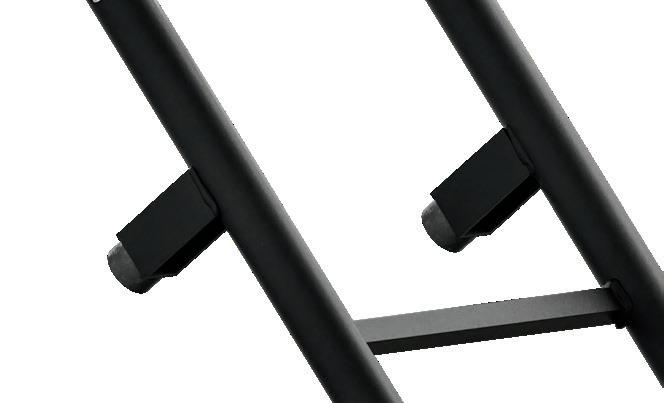













Designed for North American community solar and C&I projects, Sungrow’s SG200HX-US string inverter delivers advanced smart grid features and streamlined installation, ensuring reliability, reduced costs, and long-term performance.

When Solar Power World started the Top Solar Contractors List in 2012, the No. 1 contractor installed 400 MW of solar. This year, our No. 1 installed over 10 GW. The solar industry continues to grow at an unbelievable rate, despite political forces bringing uncertainty to the market. We’re proud to celebrate the past year’s solar achievements in the 2025 Top Solar Contractors List.

















UNLIKE ANY OTHER RAILLESS SYSTEMIT’S EASIER THAN RAIL.
LOWEST MATERIAL COST - FASTEST INSTALLATION TIME.
SNAP A LINE AT FRONT EDGE OF ARRAY. NO OTHER MEASURING REQUIRED.
MOST INSTALLATION WORK DONE ON THE GROUND - INCLUDING WIRE MANAGEMENT.
UL 3741 CERTIFIED.
OPTIONAL SKIRT AVAILABLE.


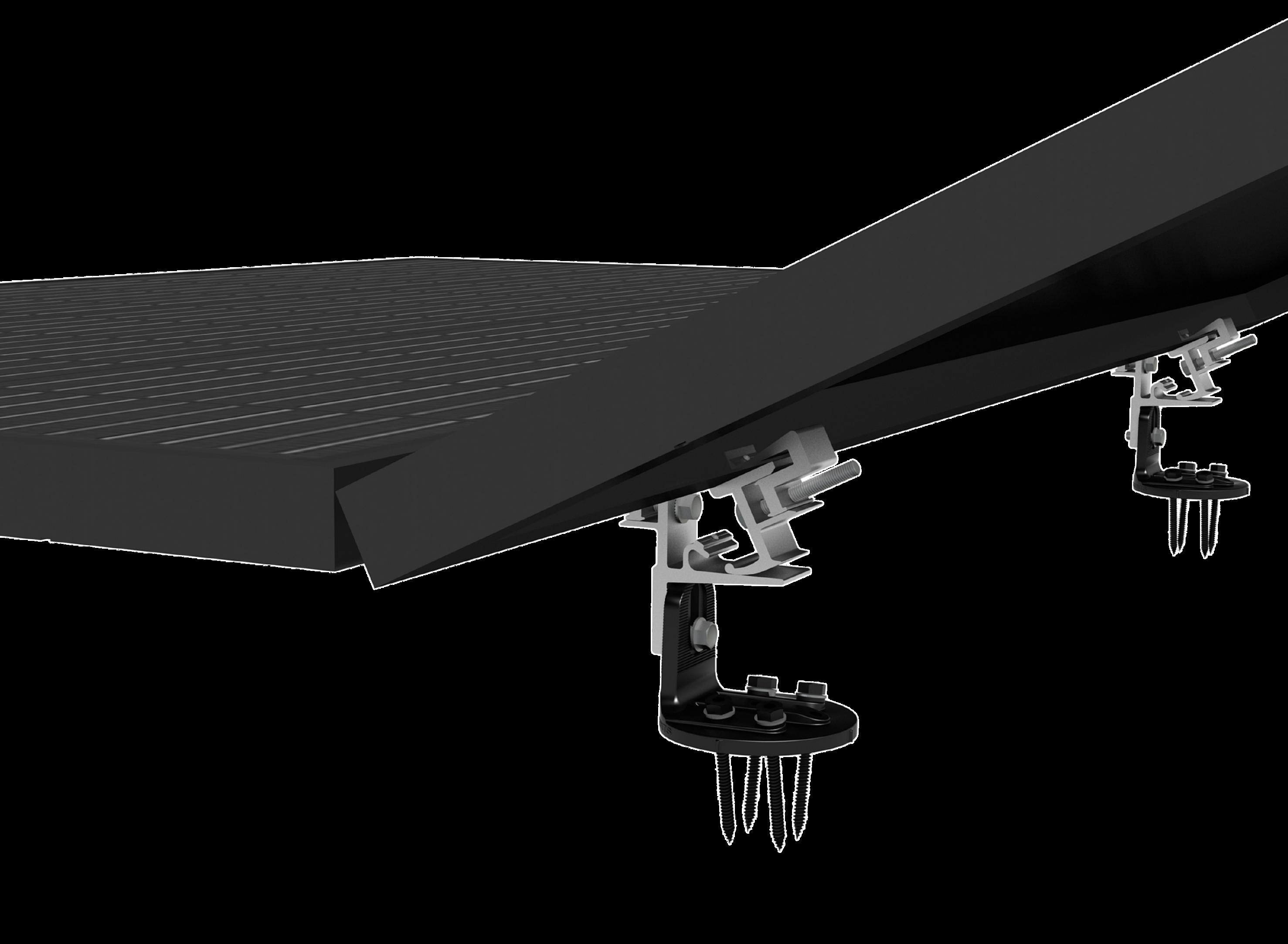






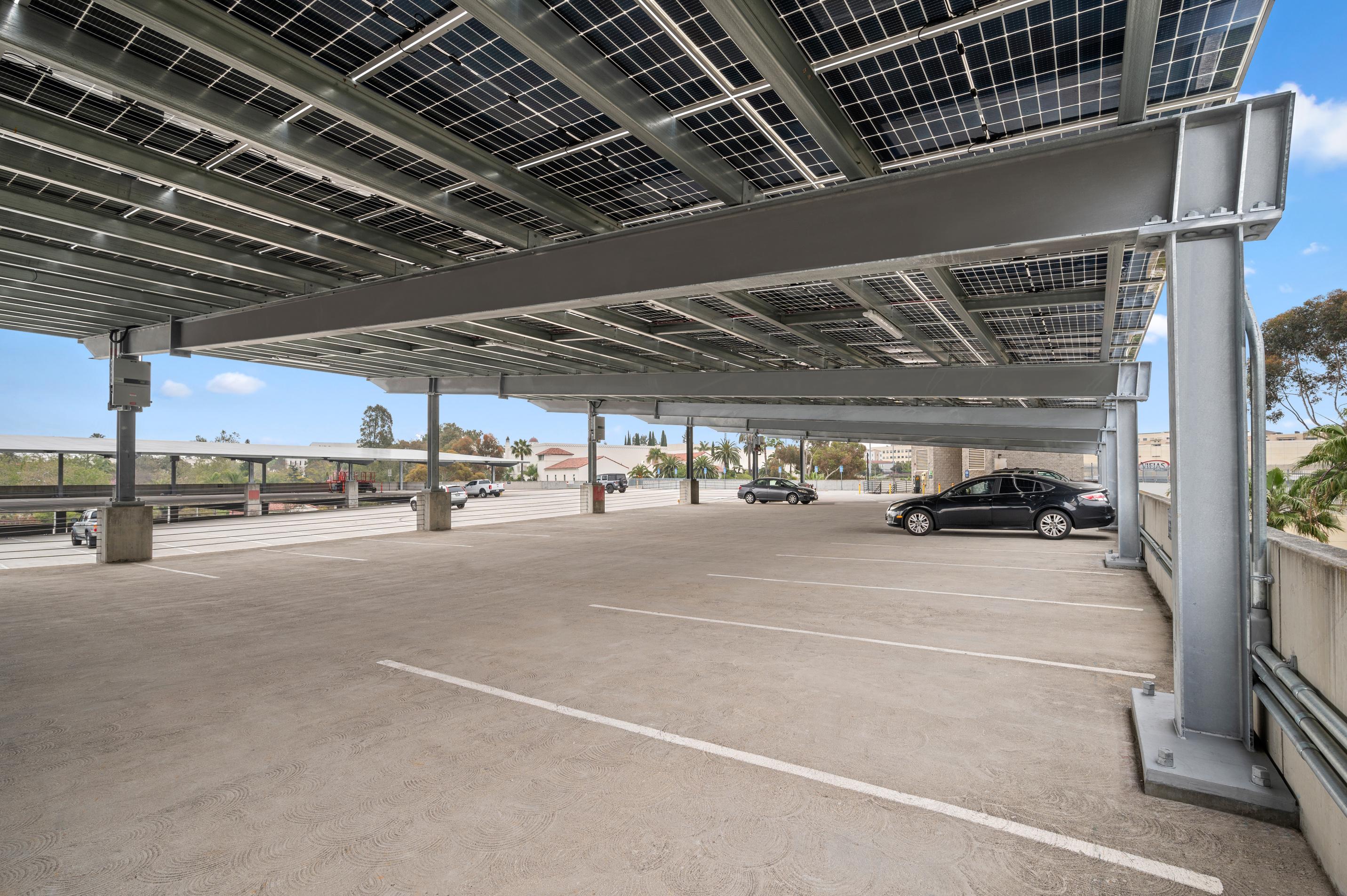


CAB® Solar is honored to have worked with so many of the Top Contractors over the past year. We are looking forward to our continued partnerships in the future and the installation of many great solar projects to come. We want to thank you for supporting the mission of the Cambria County Association for the Blind and Handicapped and individuals with disabilities. We appreciate you!
CAB® Solar sources American materials and manufactures its products in Pennsylvania. CAB®’s reliance on domestic raw materials translates into reliable supply chains, on-time deliveries, and stable pricing.

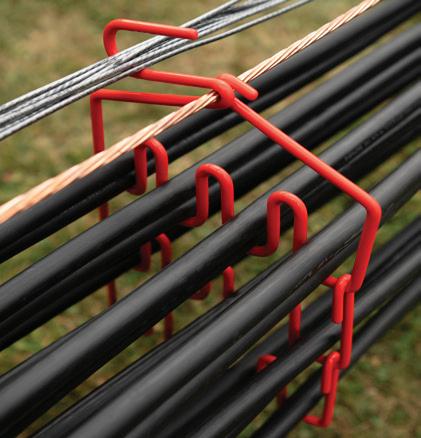


A tiered system that improves airflow, optimizes performance, and eliminates derating. Uses a messenger wire to serve as an equipment grounding conductor and to support hangers and electrical cables. A narrow design that accommodates steep tilt angles. A locking arm that secures wire against livestock impact.

Contact our Solar Team at 814.472.5077 or visit CABSolar.com to learn more about our full range of CAB® Solar cable management products.

















Creating a sustainable future.




Boviet Solar combines over a decade of business stability, financial bankability, and technological expertise with manufacturing excellence and sustainable practices, offering top-performing solar modules and dependable solar energy systems you can trust, backed by traceable supply chains and international trade confidence.


Top Performing PV Modules
Tier 1 Module Manufacturer




















































Making the installation of PV systems on roofs easier, faster, and safer for installers! We are a master stocking distributor of SolarBOS components, including PV connectors, tools, wire, and wire management solutions. Additionally, we manufacture DC wiring harnesses, overmolds, jumpers, and adapters at our US-based facilities. Our Mission toward the











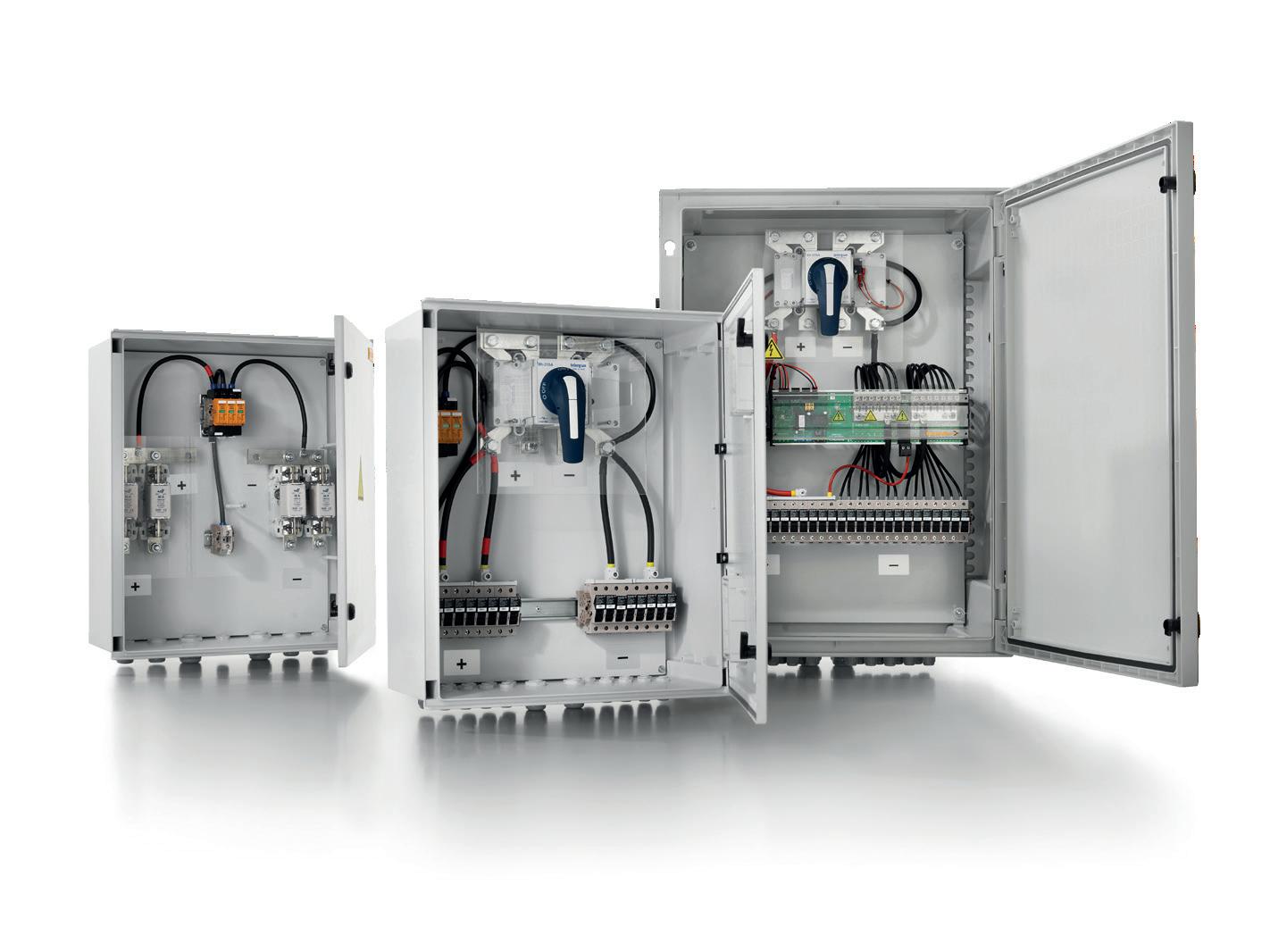

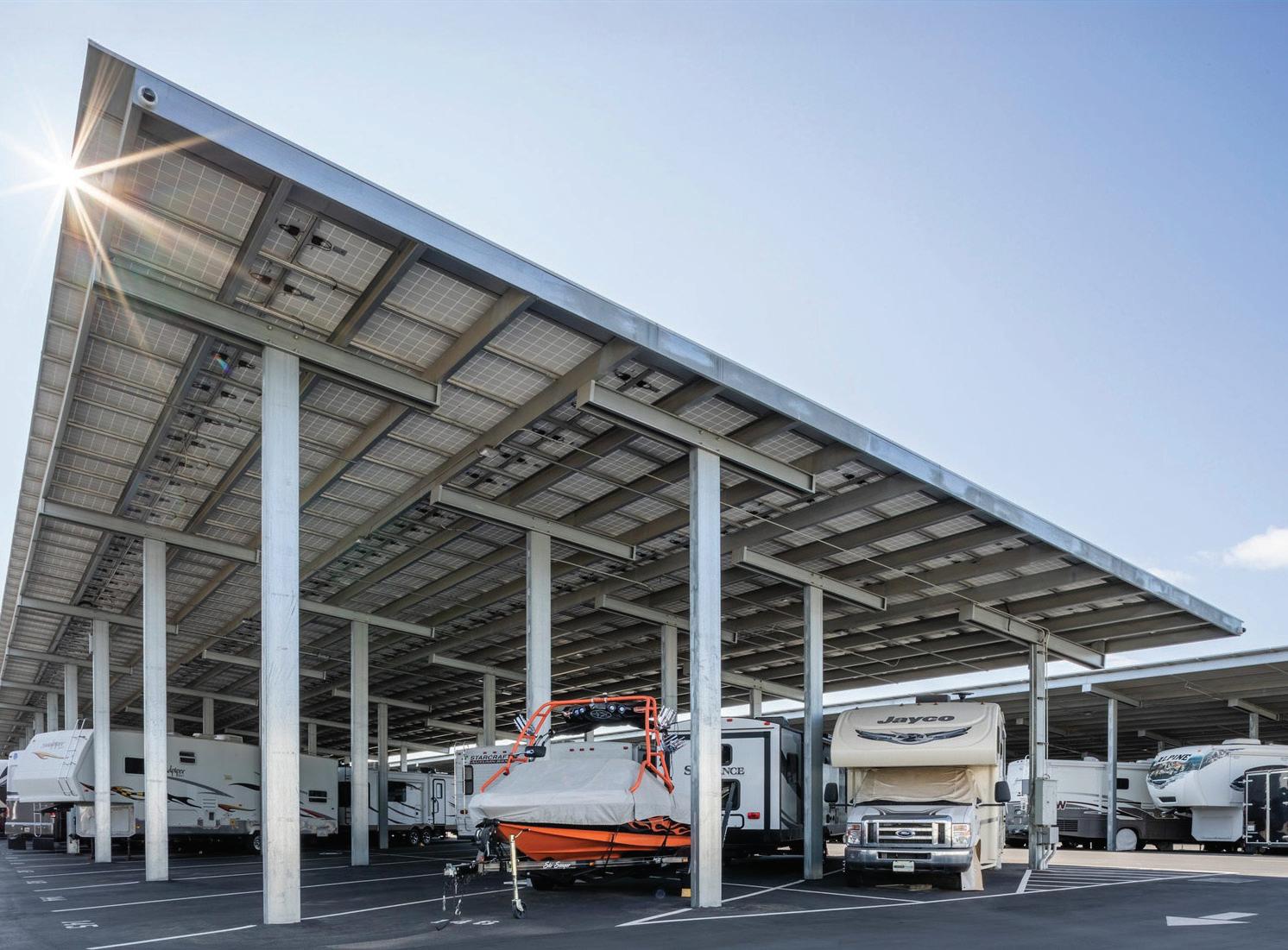
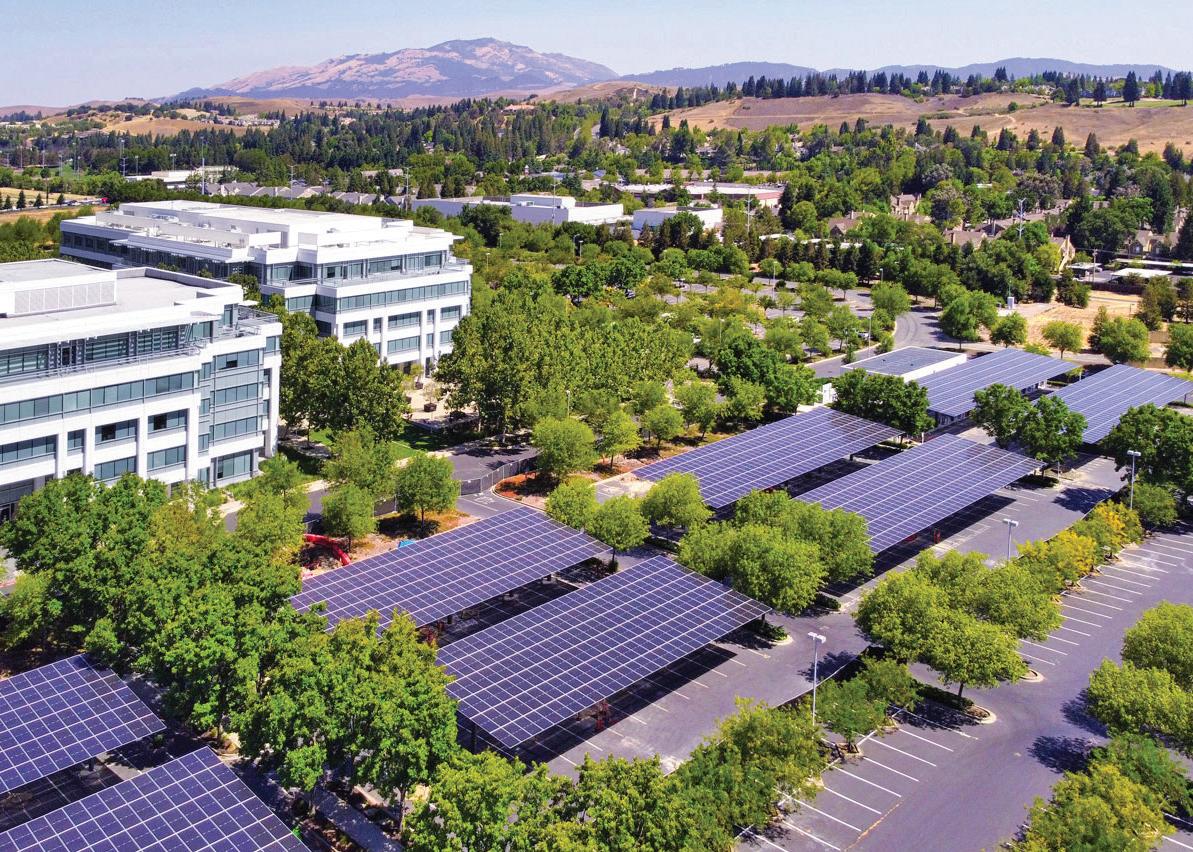
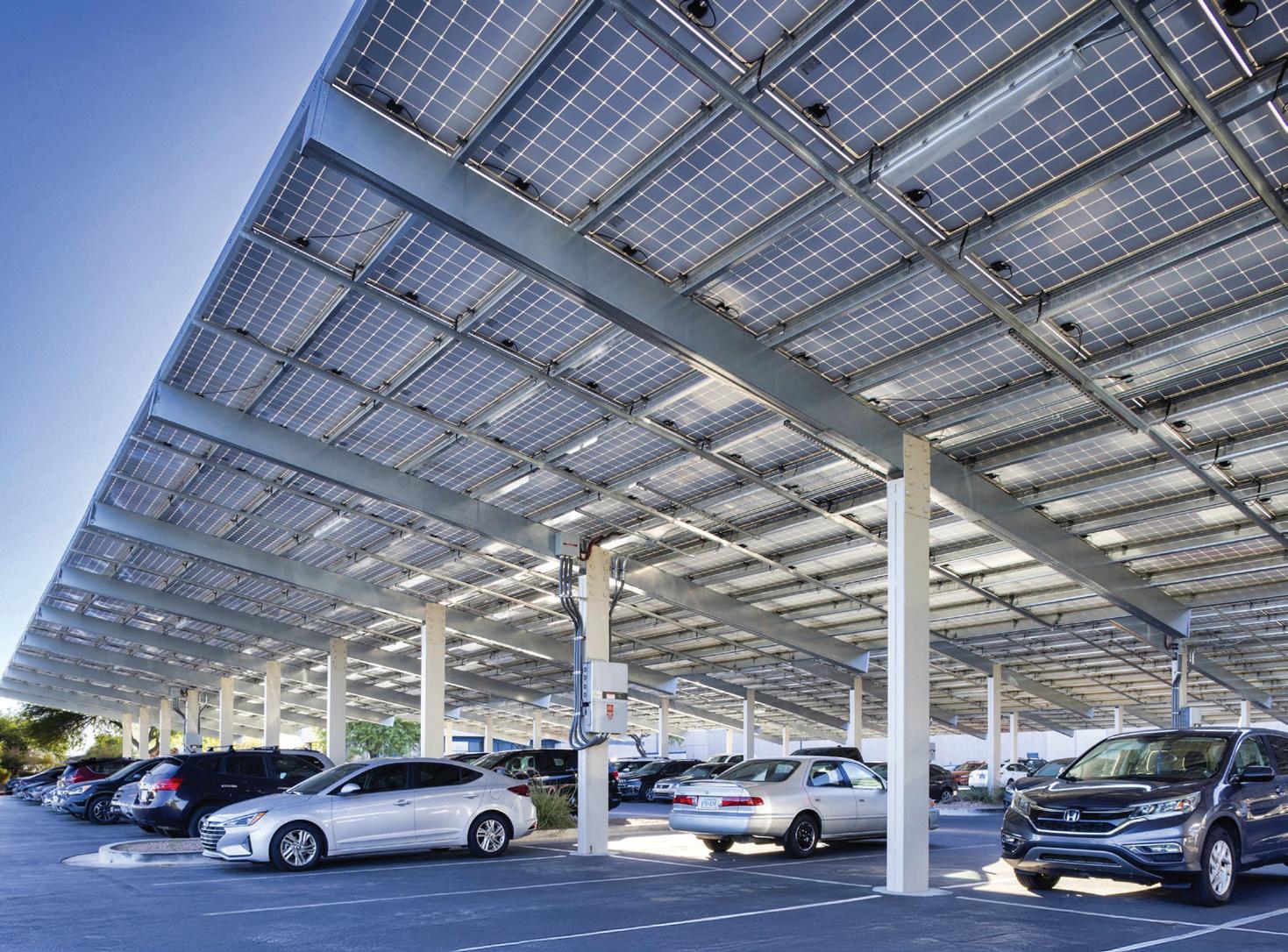





























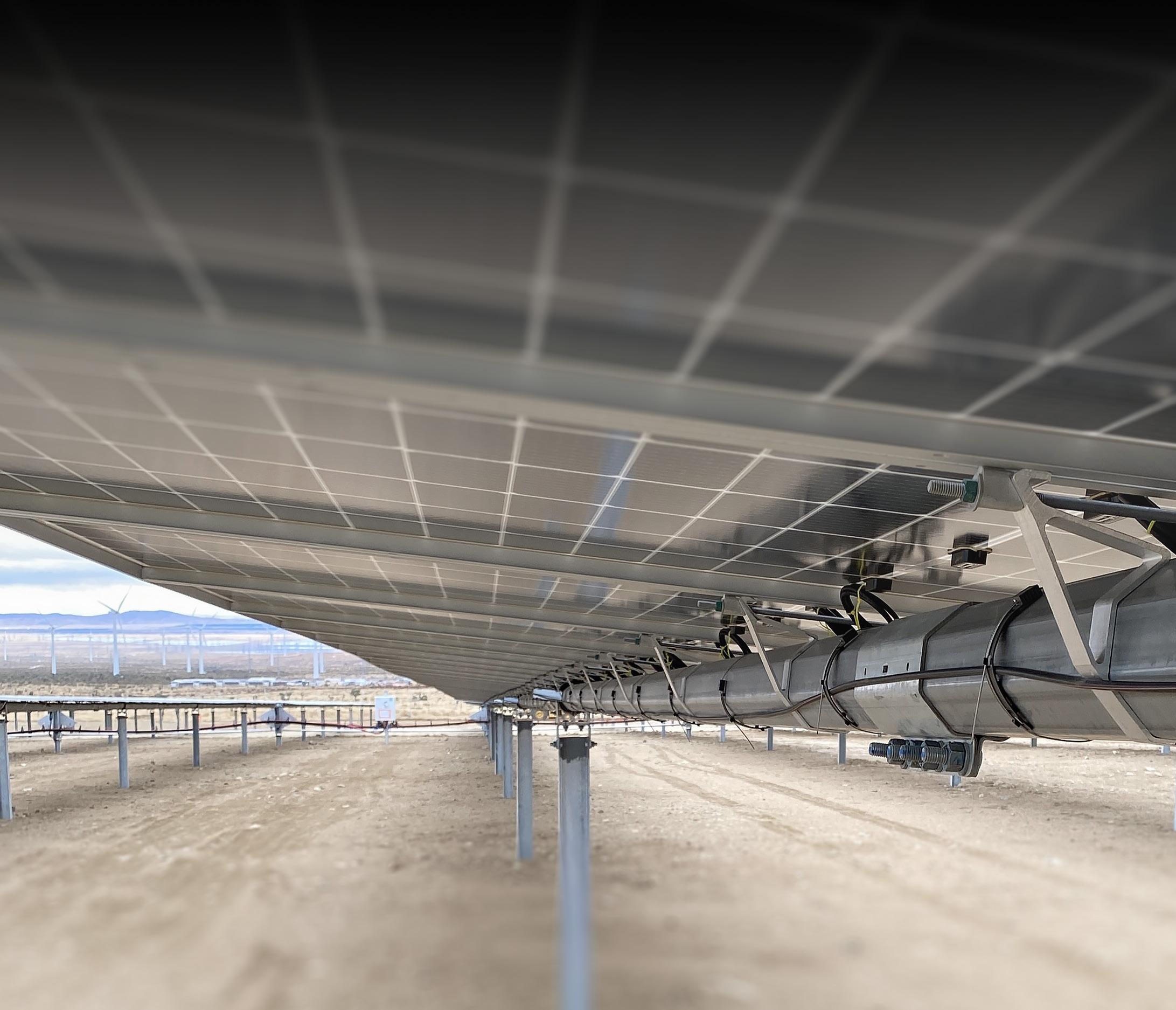


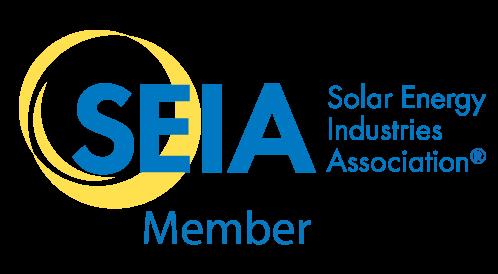




























ABB Installation Products for renewable energy applications are designed to be safer, more reliable, and hardened against the elements. Our UV-resistant Ty-Rap® cable ties and full product line are built to outlast whatever Mother Nature and Father Time might throw at them. Learn more.



















































































































































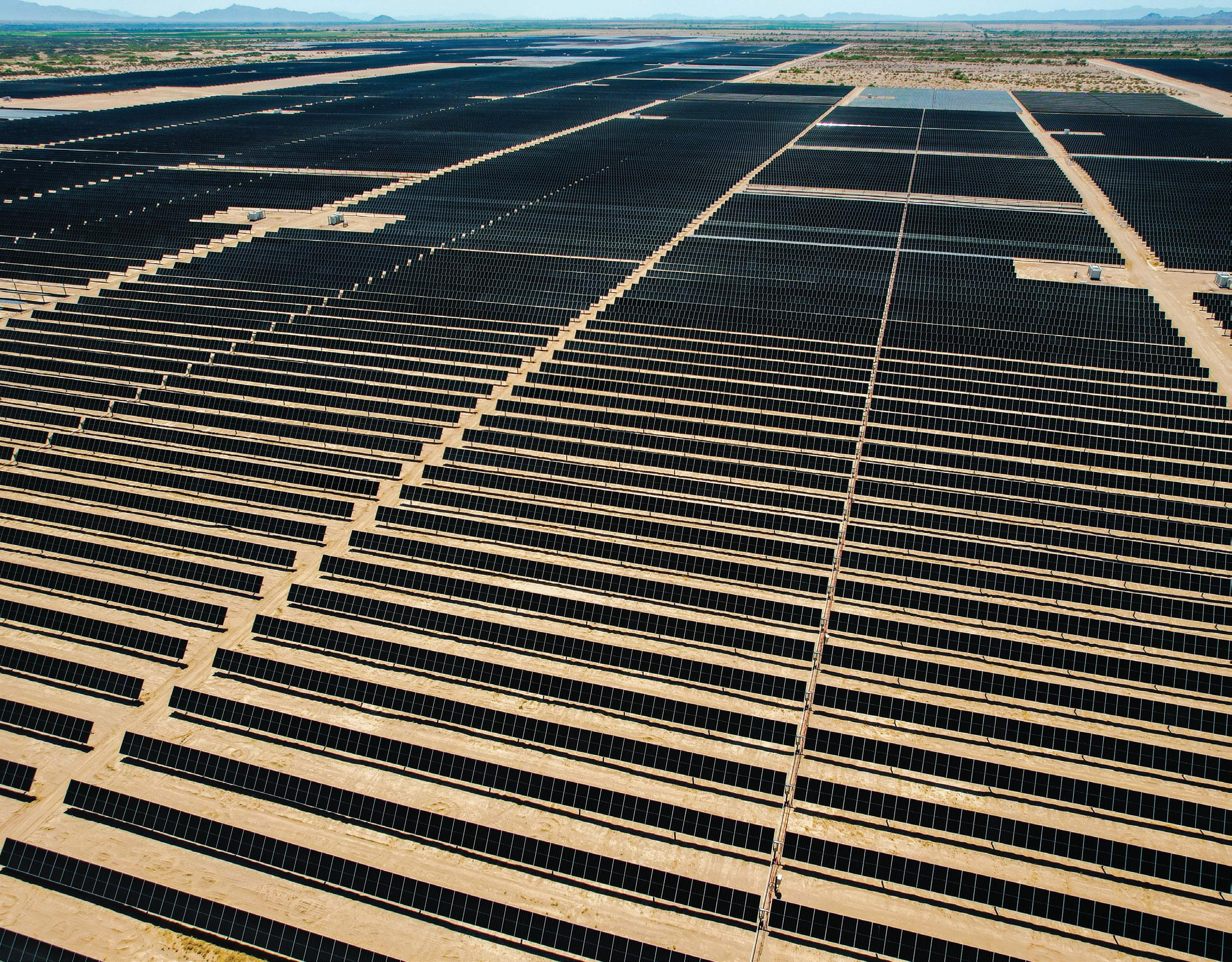













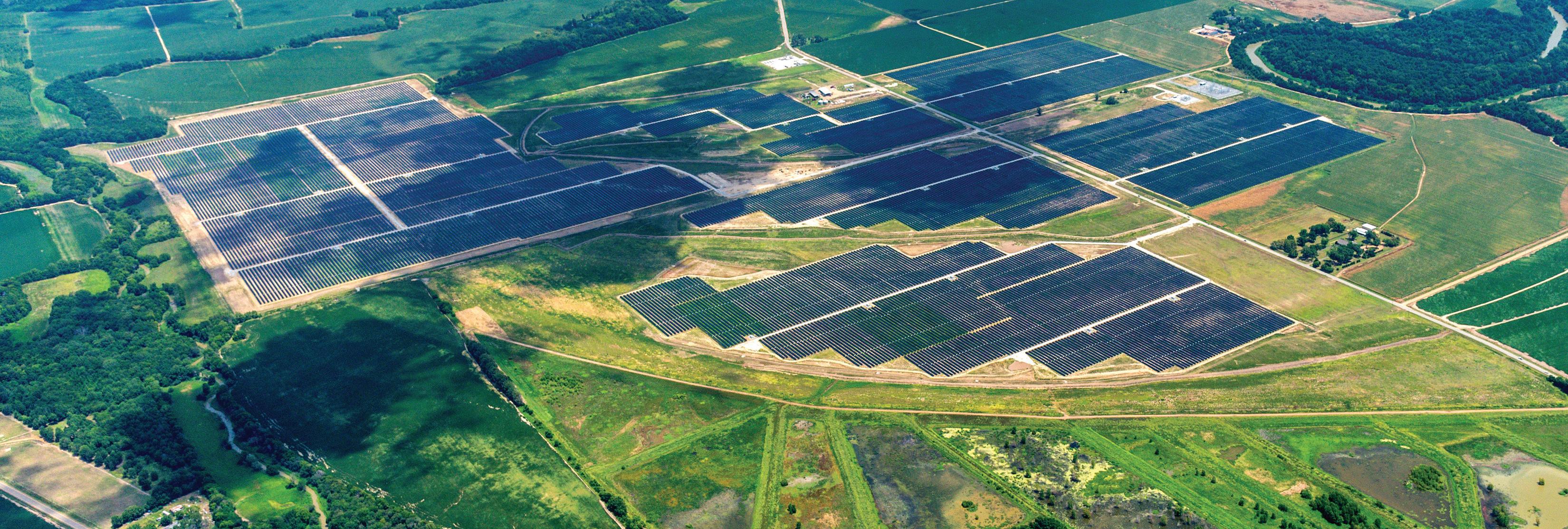
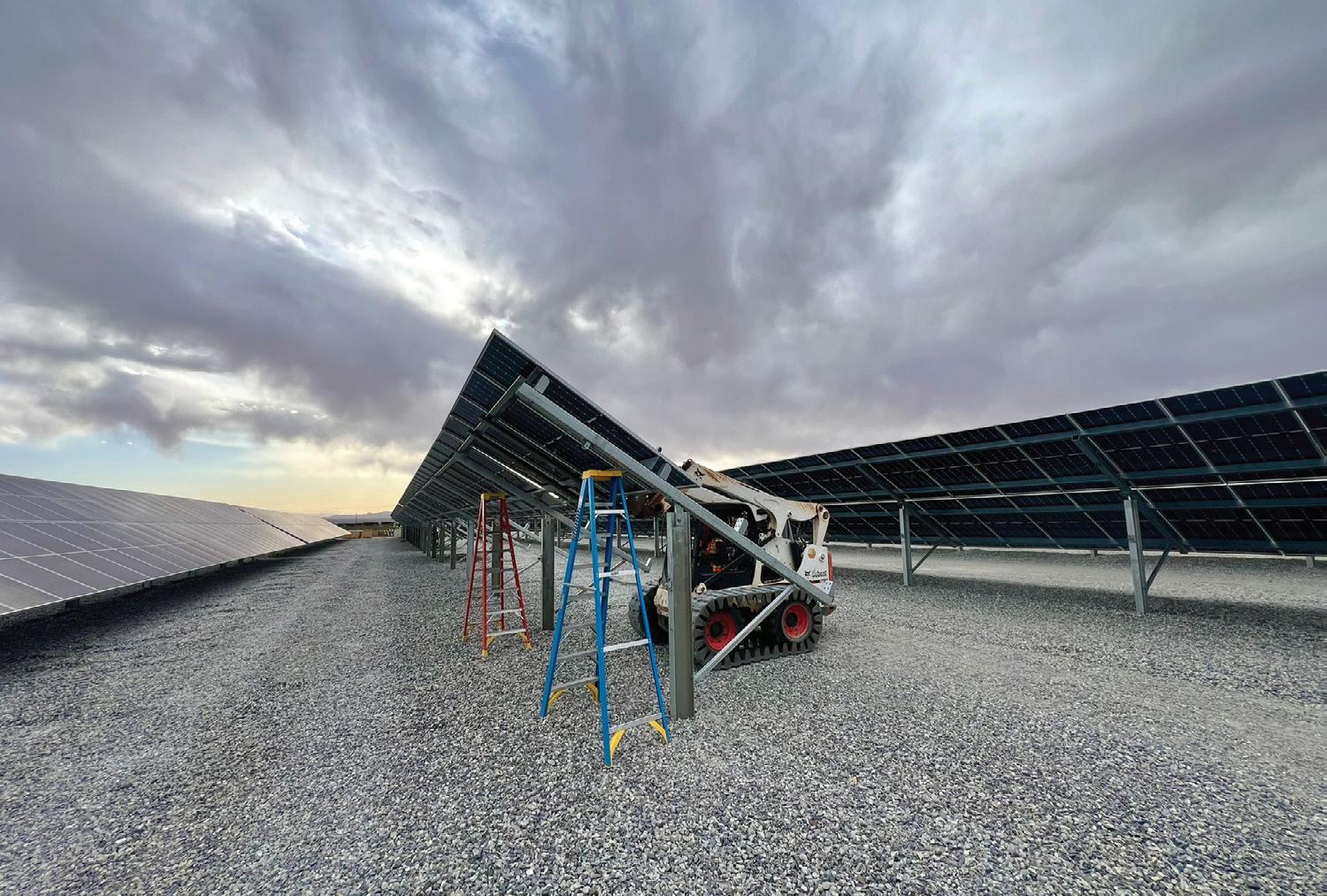
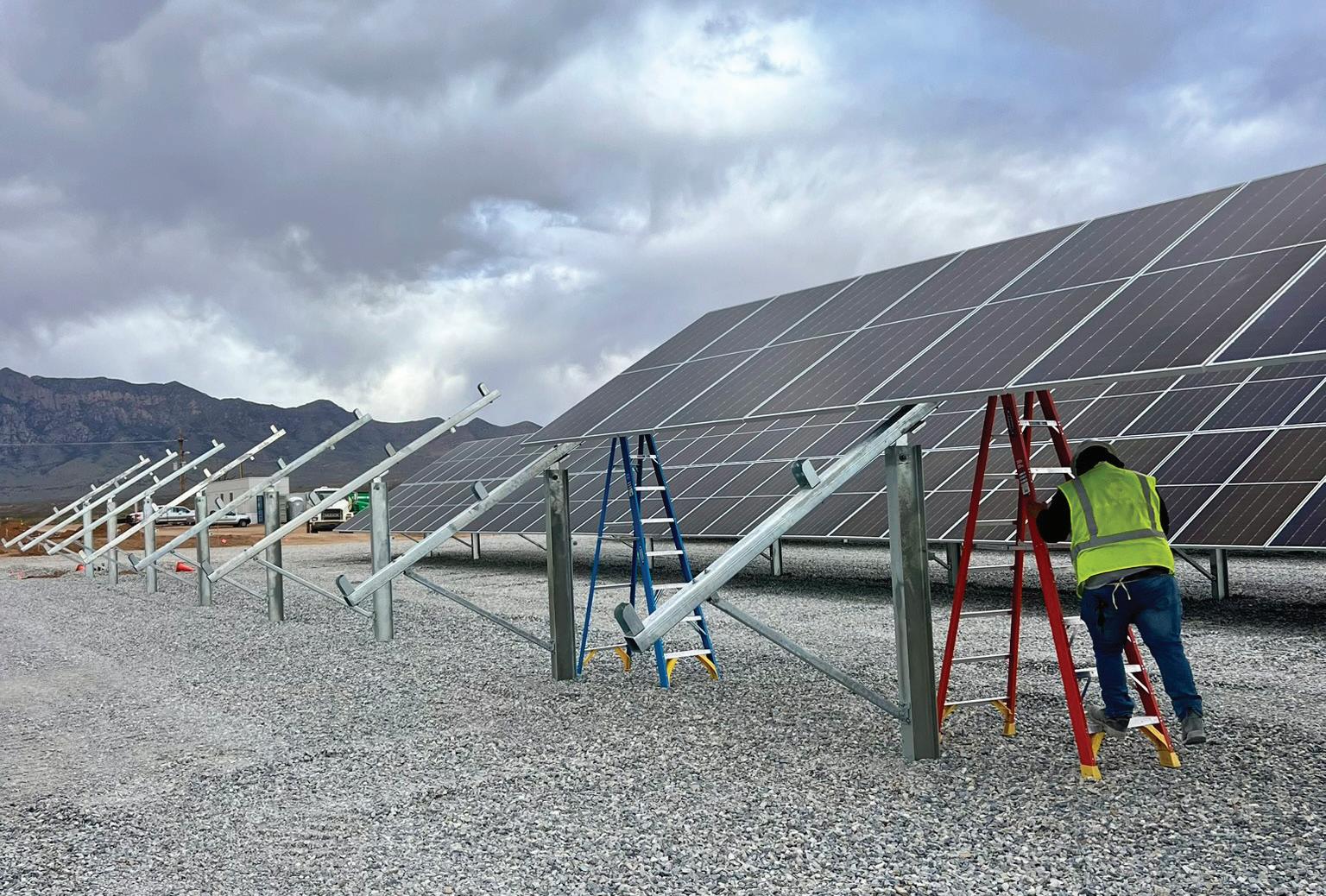

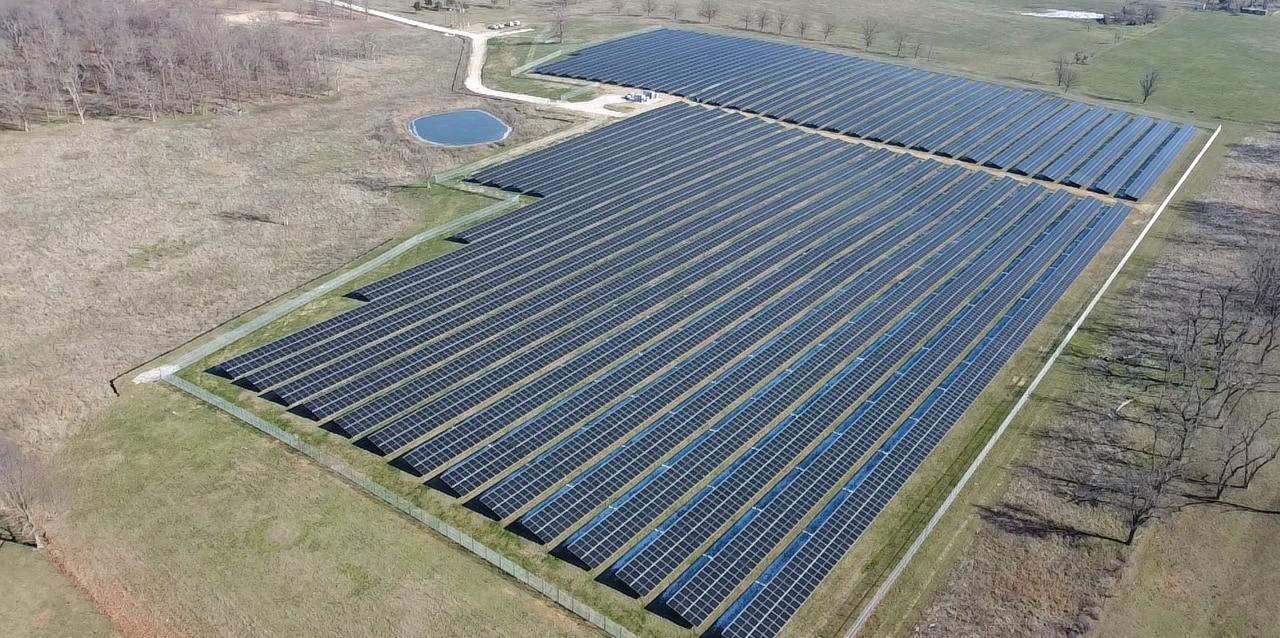
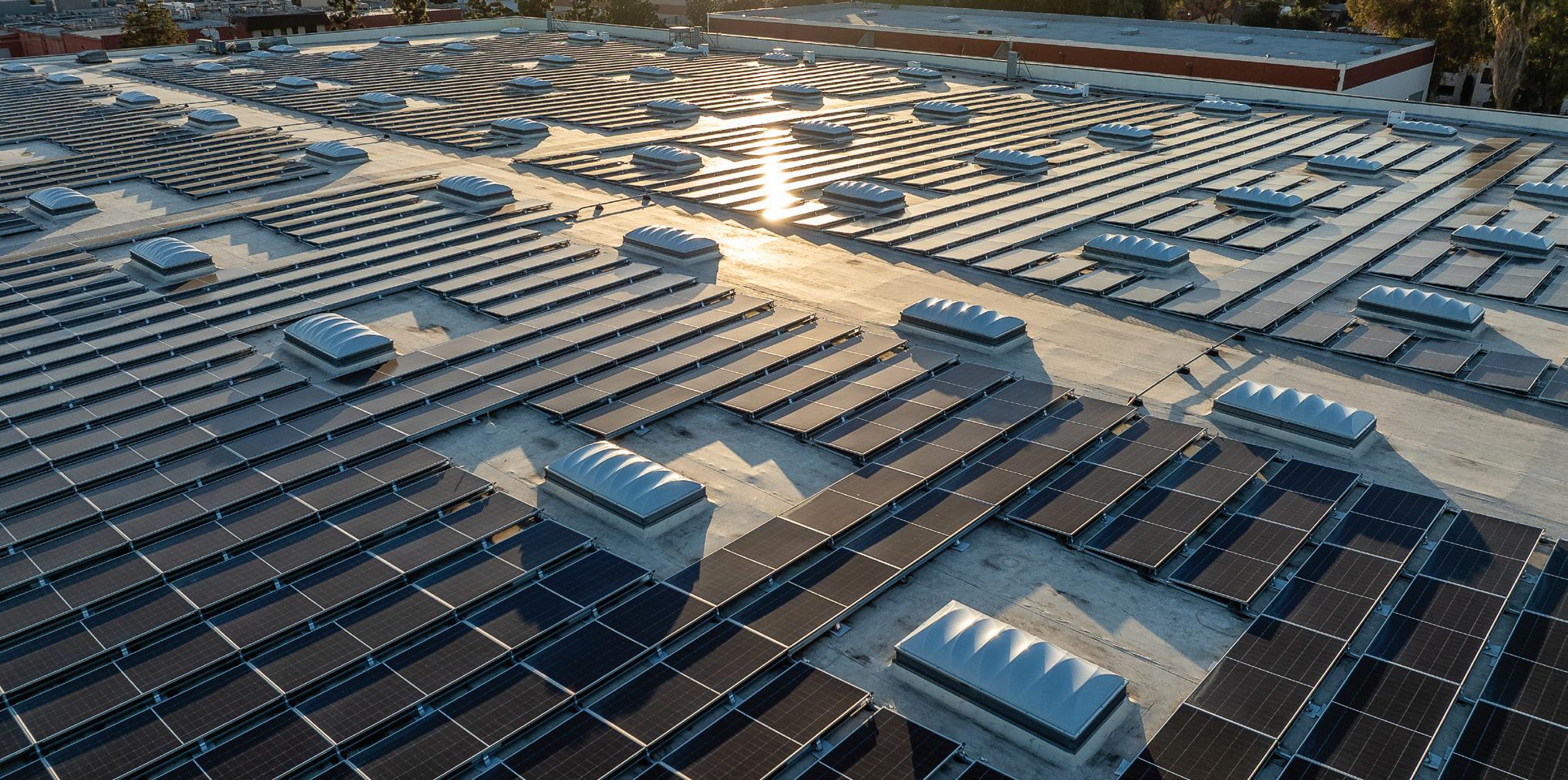
How does prefabrication help on a commercial rooftop install?

Prefabrication has become an essential component of our solar installation process, especially for commercial rooftop projects. By assembling racking systems, wiring harnesses and even module groupings ahead of time, we reduce labor hours onsite, minimize safety risks and maintain greater quality control. On the rooftop, this translates into faster installations, less disruption to building operations and fewer weatherrelated delays, ultimately improving project timelines and efficiency.
— Mike Sharble, VP of Operations, New Era Electric


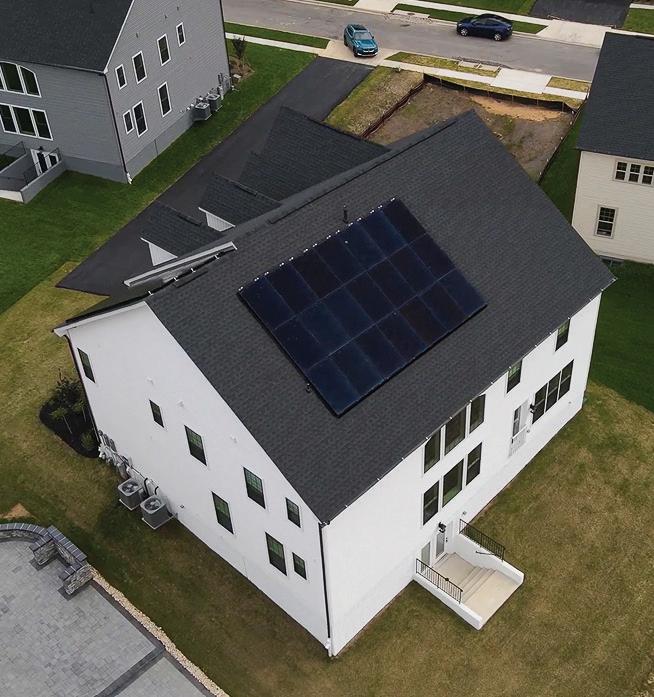
How are you instilling trust in your communities while larger, national brands close shop?
At Solar Energy World, we’ve continued to grow — benefiting from the scale of a leading regional installer — while staying rooted in the local communities we serve. Our success is built on a personal, customer-first approach that has earned the trust of thousands of homeowners since our founding in 2009.
New customers find confidence in our 100% in-house installation team, our industry-leading 30year warranty and the strength of our parent company, Comcast. Together, these factors provide peace of mind that their solar investment is secure for the long run — even as others exit the market.

— Peter Belman, CEO, Solar Energy World

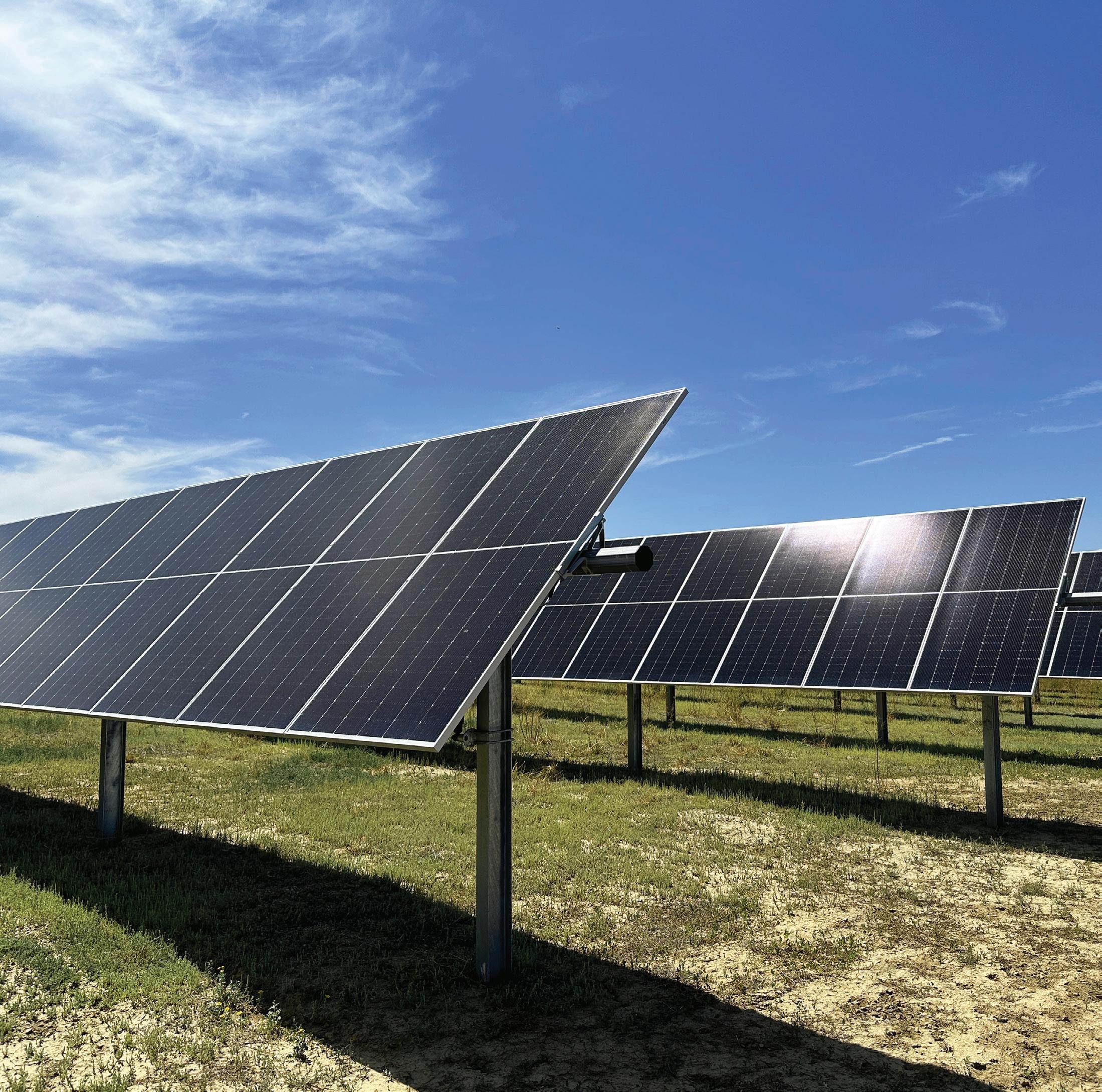

Have you found corporations are more open to the community solar model vs. traditional commercial?
Due to the variety of building types, configurations and number of buildings that a corporation may have, as well as upfront cost hurdles, Pivot Energy has found that corporations are more open to community solar subscriptions vs. on-site solar. Many corporations want to explore both, but community solar often offers utility bill savings from Day 1 and never requires an upfront cost.
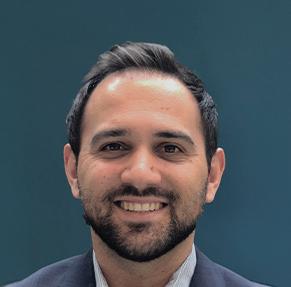
— Mat Elmore, SVP of Strategic Accounts, Pivot Energy


Cus antissim harum fugit, soluptaectem etusant maionsed magnatur aut
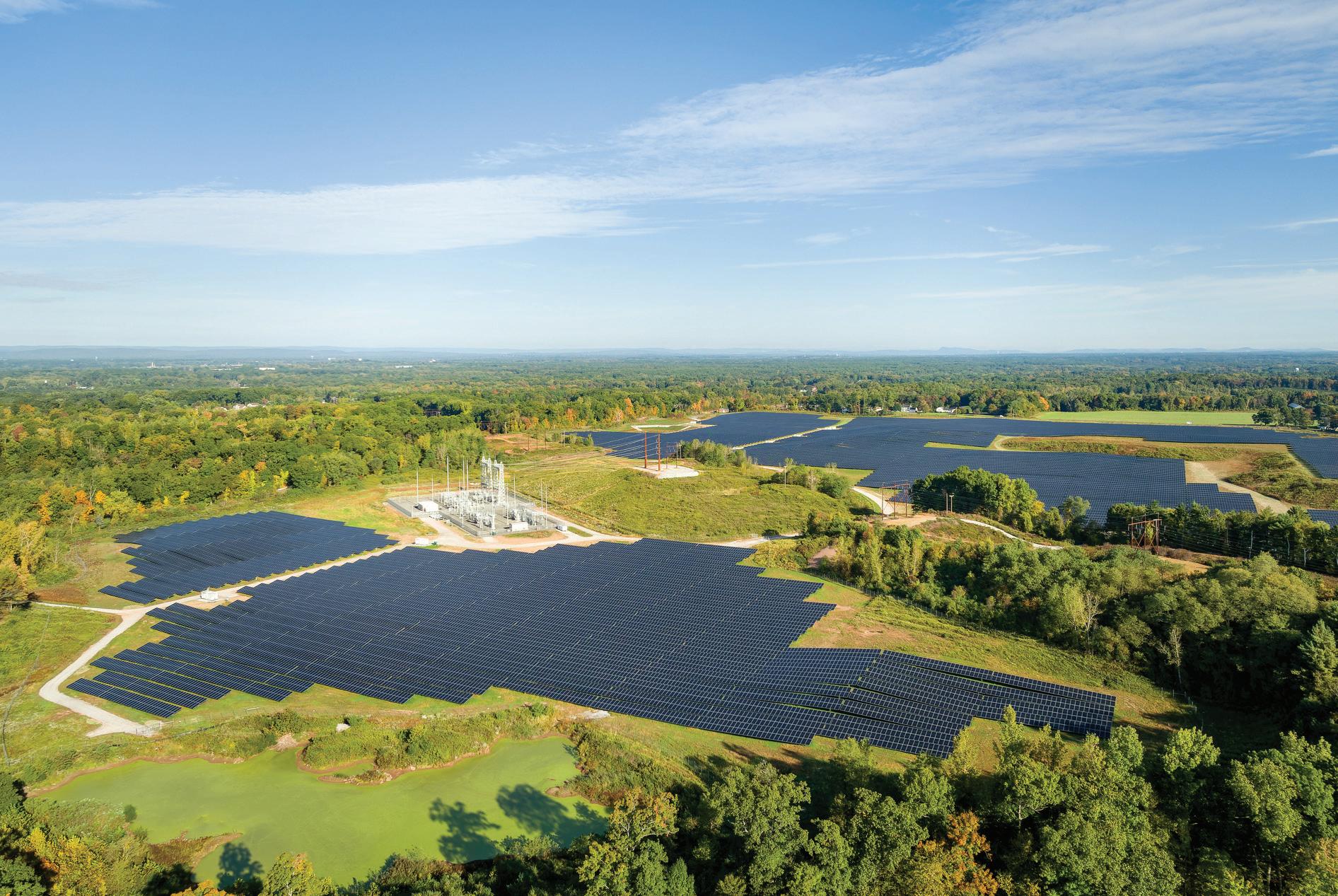

What's your best advice for cementing longterm partnerships with developers?
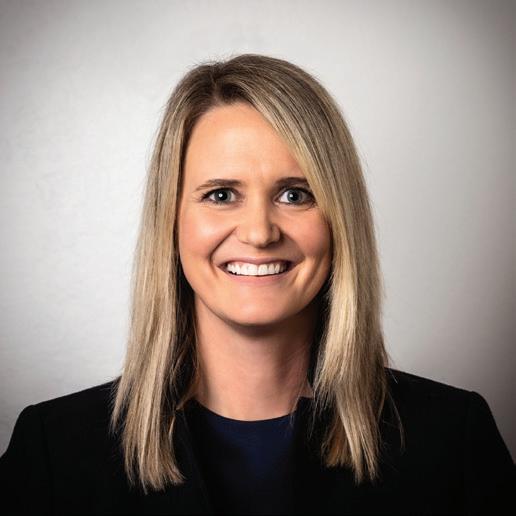
As projects are becoming increasingly larger and more complex across the U.S., the need for true partnership and transparency is paramount. At SOLV, we focus on long-term relationships and drive a repeat-customer mentality into all our interactions. We ask developers to collaborate with us on value-engineering, cost optimization and performance output at a project’s onset, which creates trust and reliability. In addition, we are finding that customers benefit from services across their portfolio outside of purely PV and BESS, whether that be in HV, O&M or repower. SOLV is uniquely positioned as a full lifecycle provider, and that’s helped us to grow organically within our valued partnerships.


— Helena Kimball, SVP of Business Development, SOLV Energy


188 MW | St. Joseph County, Indiana









The United States hosts over a quarter of the world’s data centers, with rapid expansion expected in the years ahead. Utility-scale solar and energy storage stands out as a premier solution to meet the escalating electricity demand in this sector — offering shorter development cycles and more competitive economics compared to other energy sources.
As one of the largest utility-scale solar and energy storage developers in the U.S., Lightsource bp is at the forefront, enabling data center operators to secure reliable, costeffective and American-made electricity through strategic power purchase agreements. Our work exemplifies how solar and energy storage can power growth in one of the most energy-intensive industries for decades to come.
— Emilie Wangerman, Chief Operating Officer and Head of U.S., Lightsource bp

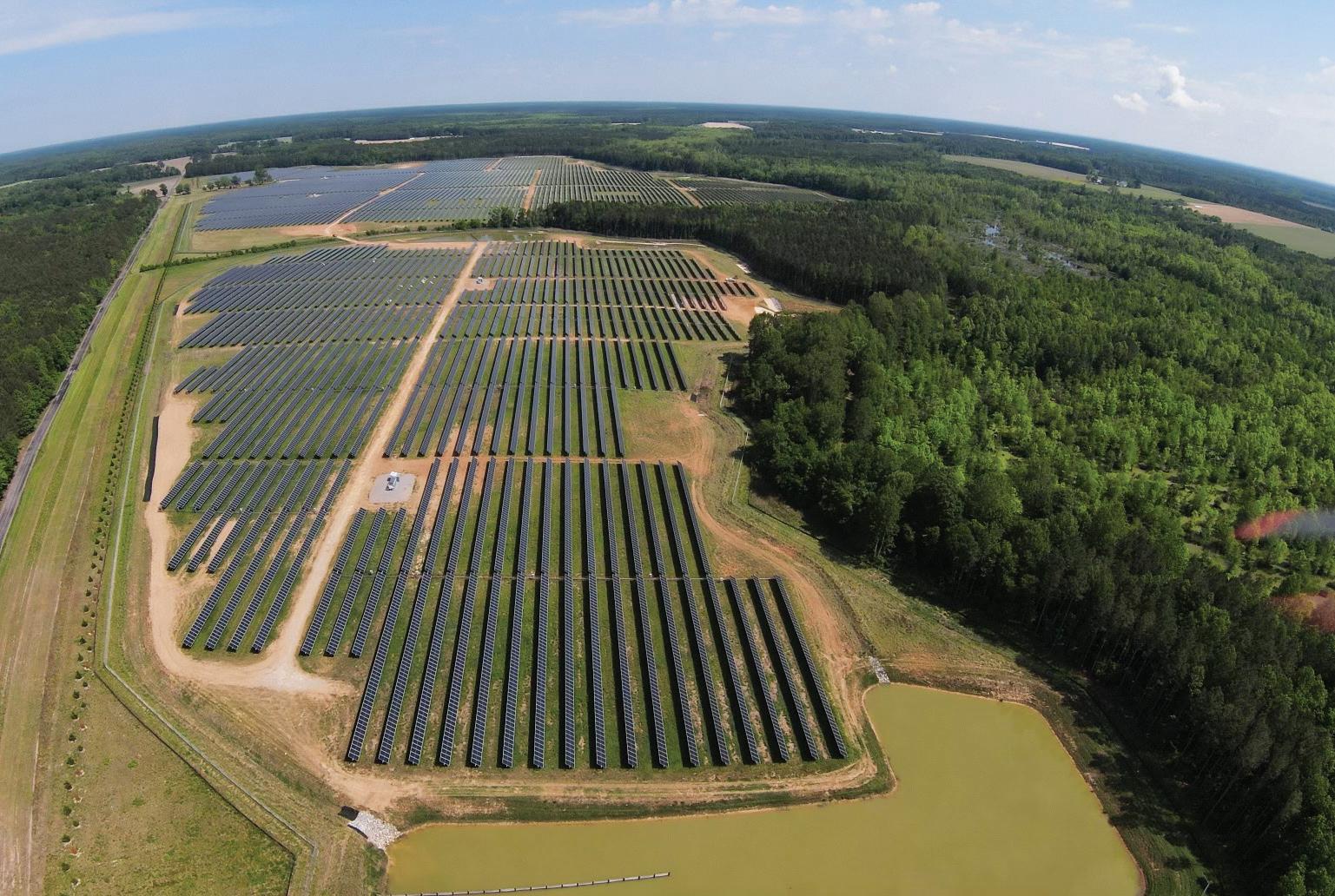






How does your company prioritize safety on highvoltage solar projects?
At Cinterra, safety is not just a checklist — it’s a competitive advantage built into the foundation of every high-voltage solar project we deliver. We design for safety from the start, with layouts and processes that proactively minimize human exposure to risk. Through real-time monitoring and predictive analytics, we identify and neutralize hazards before they impact the field. Our commitment extends beyond protocols — it’s a culture where every person is empowered to speak up and take action. Backed by an industry-leading EMR and thousands of incident-free hours, Cinterra has earned a reputation for excellence that few, if any, can match. We don’t just meet safety expectations — we redefine them.

— Alex Sierra, Health, Safety & Environment Director, Cinterra


Bluebird
The Clary Group
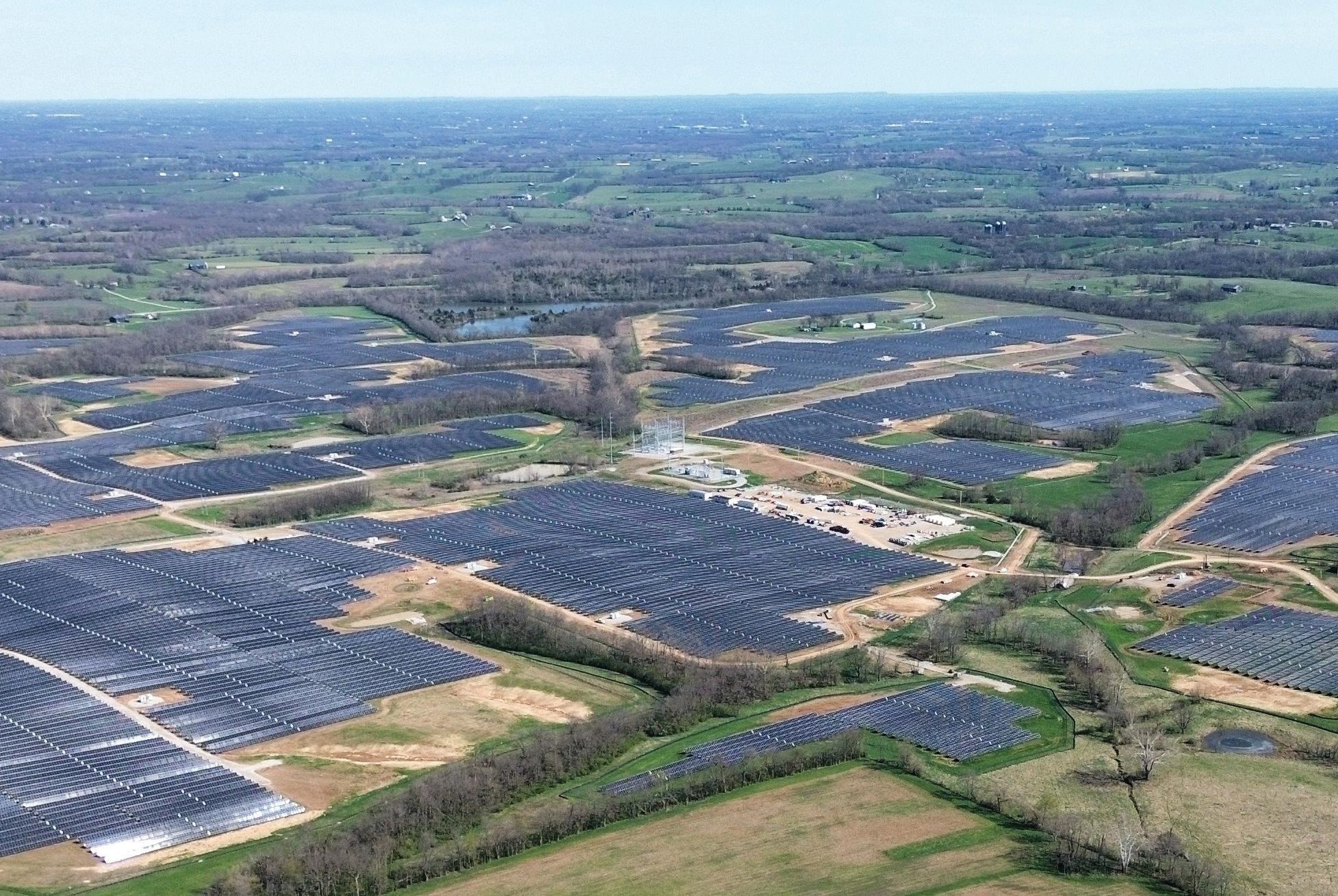


How does your team stay on tight work deadlines on large-scale solar projects?
I wish we could say there’s a secret, but it really comes down to careful planning and consistent execution. From the start, we tailor each strategy to the project’s unique site, schedule and design. Our teams follow proven processes shaped by real experience, including lessons learned from failure. What sets us apart is how we lead: we anticipate challenges, stay ahead of roadblocks and keep projects moving — ultimately, helping our clients stay on schedule and under budget.



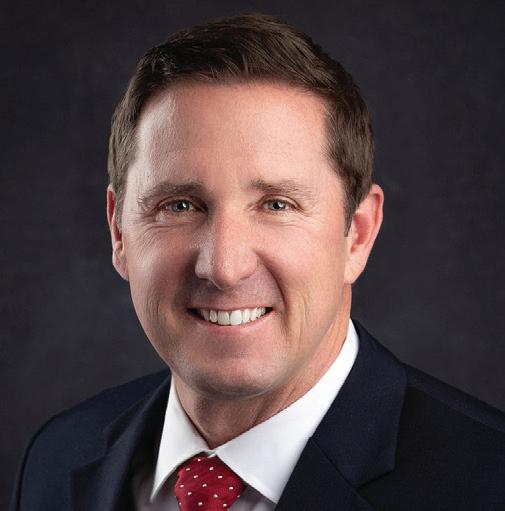
— David Clary, President, The Clary Group

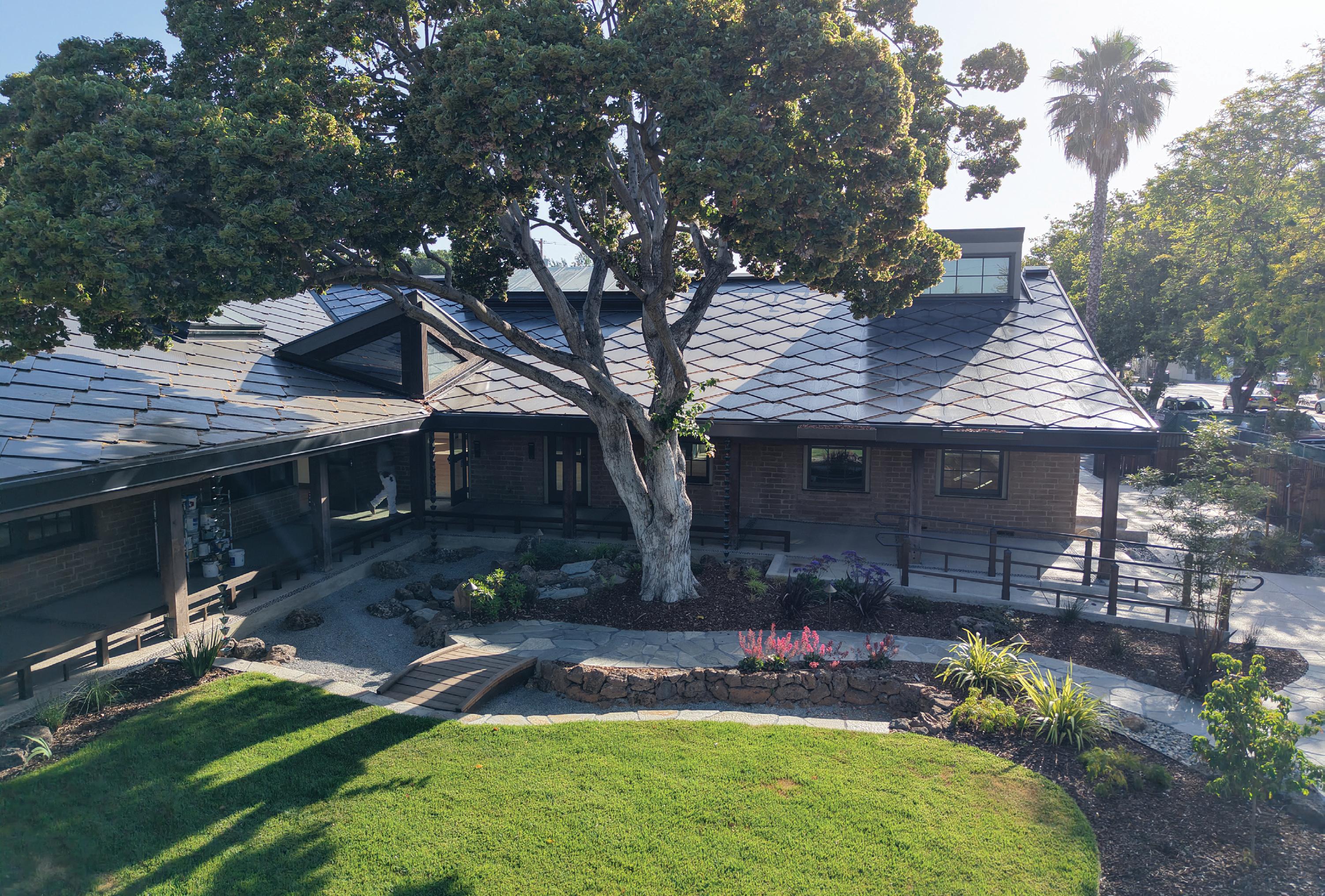




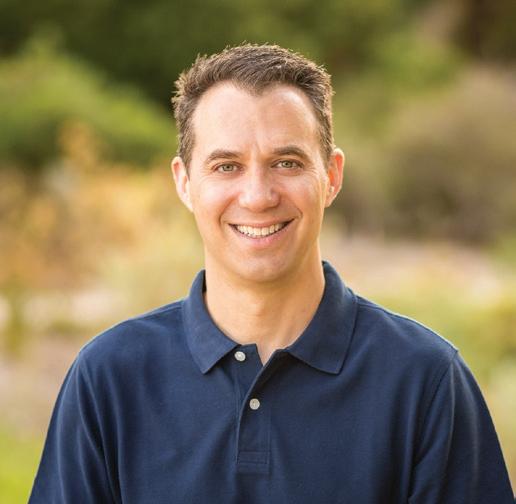



When homeowners choose a company that does both roofing and solar, the process is simpler from start to finish. At Citadel, we know how these systems work together, and we build every solar system with the roof integrity in mind. That means smarter designs, smoother timelines and no surprises. There’s no need to coordinate between contractors or worry about miscommunication. Whether you’re just installing solar or tackling both projects together, choosing a company with expertise in solar and roofing is a smarter, simpler path to longterm savings and peace of mind.
— Aaron Nitzkin, EVP of Solar, Citadel Roofing & Solar
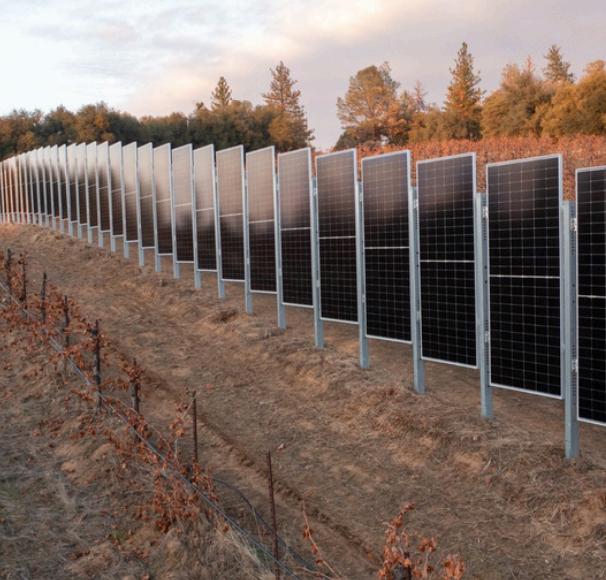






With California NEM rules now placing more importance on batteries, how has your business model changed?


We’ve pivoted to prioritizing solar + storage systems in our offerings. Due to our already-strong partnership with Tesla and Enphase, our ability to meet this demand was plug and play. In addition to the solar + storage approach, our sales and marketing strategies have also changed due to NEM 3.0. We’ve adopted an education-first approach whereby our sales teams have been trained to discuss the complexities of energy management and provide the benefits of battery storage to the consumers. Also, our marketing efforts highlight “Energy Peace of Mind” that comes with battery backup during unexpected outages and blackouts — a constant and growing concern for California homeowners.
— Rainier de Ocampo, EVP of Marketing, Solar Optimum

Longroad Energy Sun Streams 3 Project
285
McCarthy Building Companies
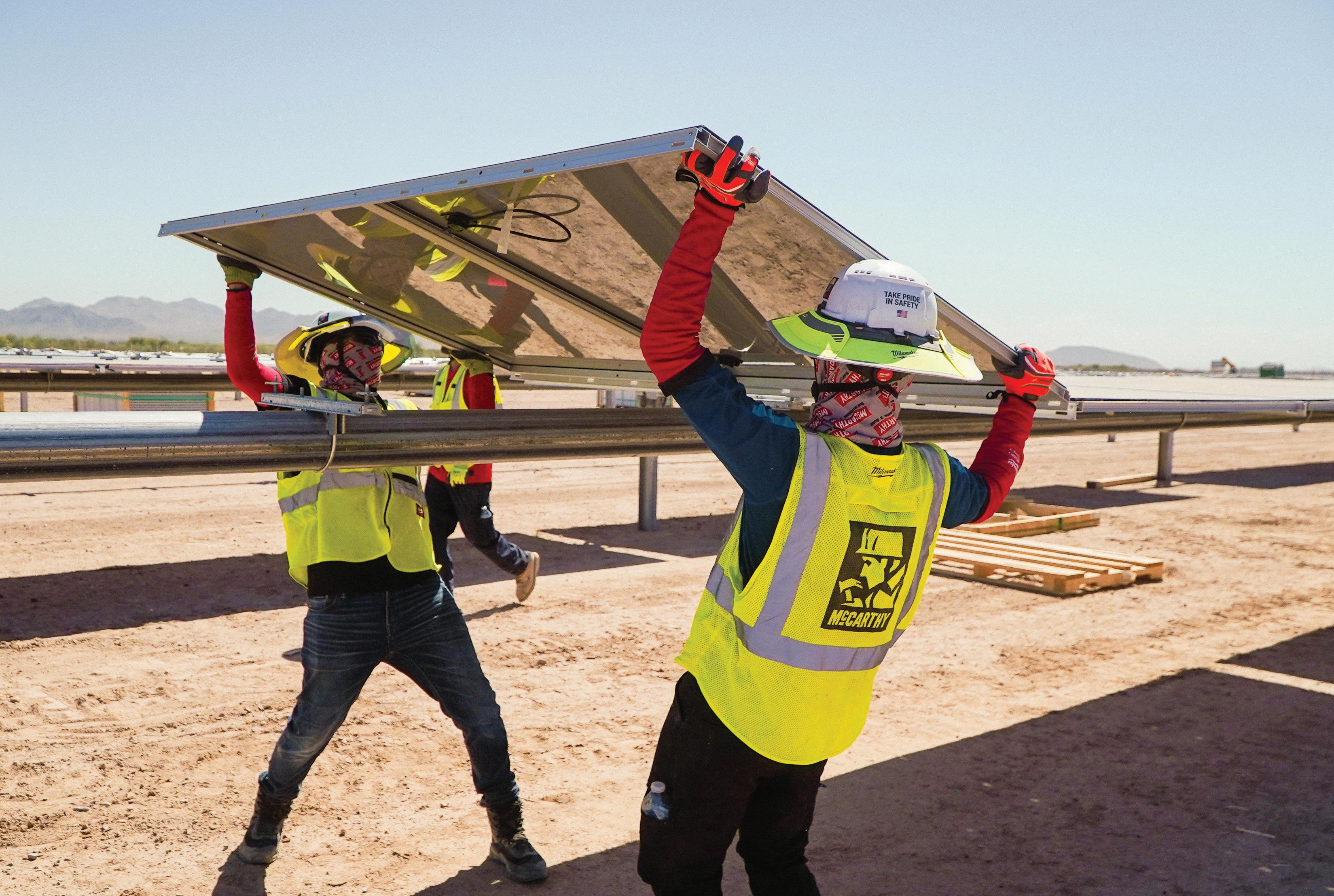

Is there a "right-size" utilityscale solar project that benefits from co-located energy storage?
There is no hard, fast rule of thumb for PV plant size when considering co-located storage. If you look at the storage market as a whole, the industry and McCarthy are installing a great deal of standalone storage, coupled storage and storage added to existing PV facilities after they’ve been operational for many years. When considering whether storage is right for your project, important factors include your energy output, the ratio of PV to storage, the type of technology being deployed and the power needs of the consumers being served. By accurately sizing your storage system, you maximize your project’s returns while delivering safe, reliable power to support our nation’s evergrowing power demand.
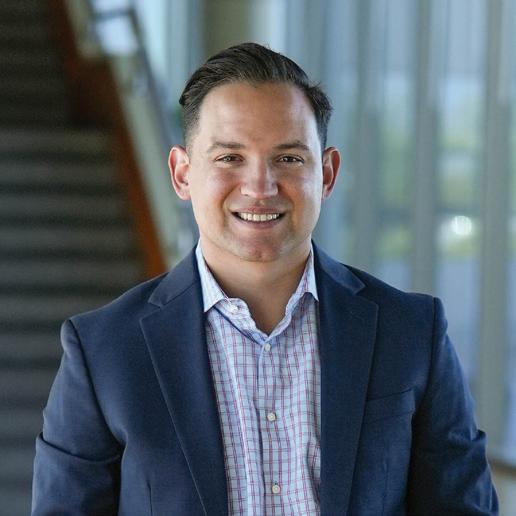
— Brett Foster, VP of Renewable Energy, McCarthy Building Companies

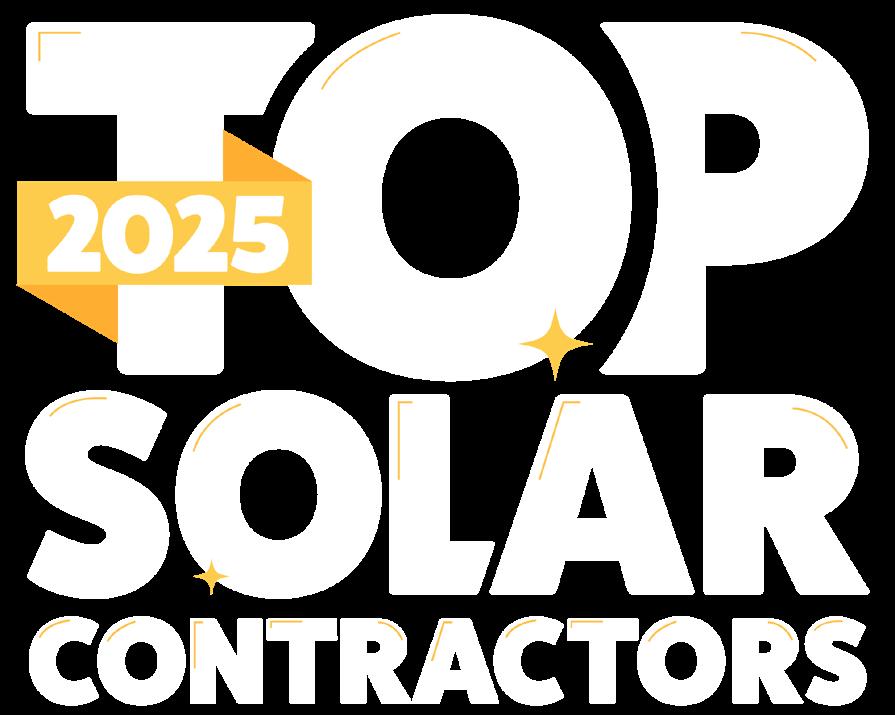

This

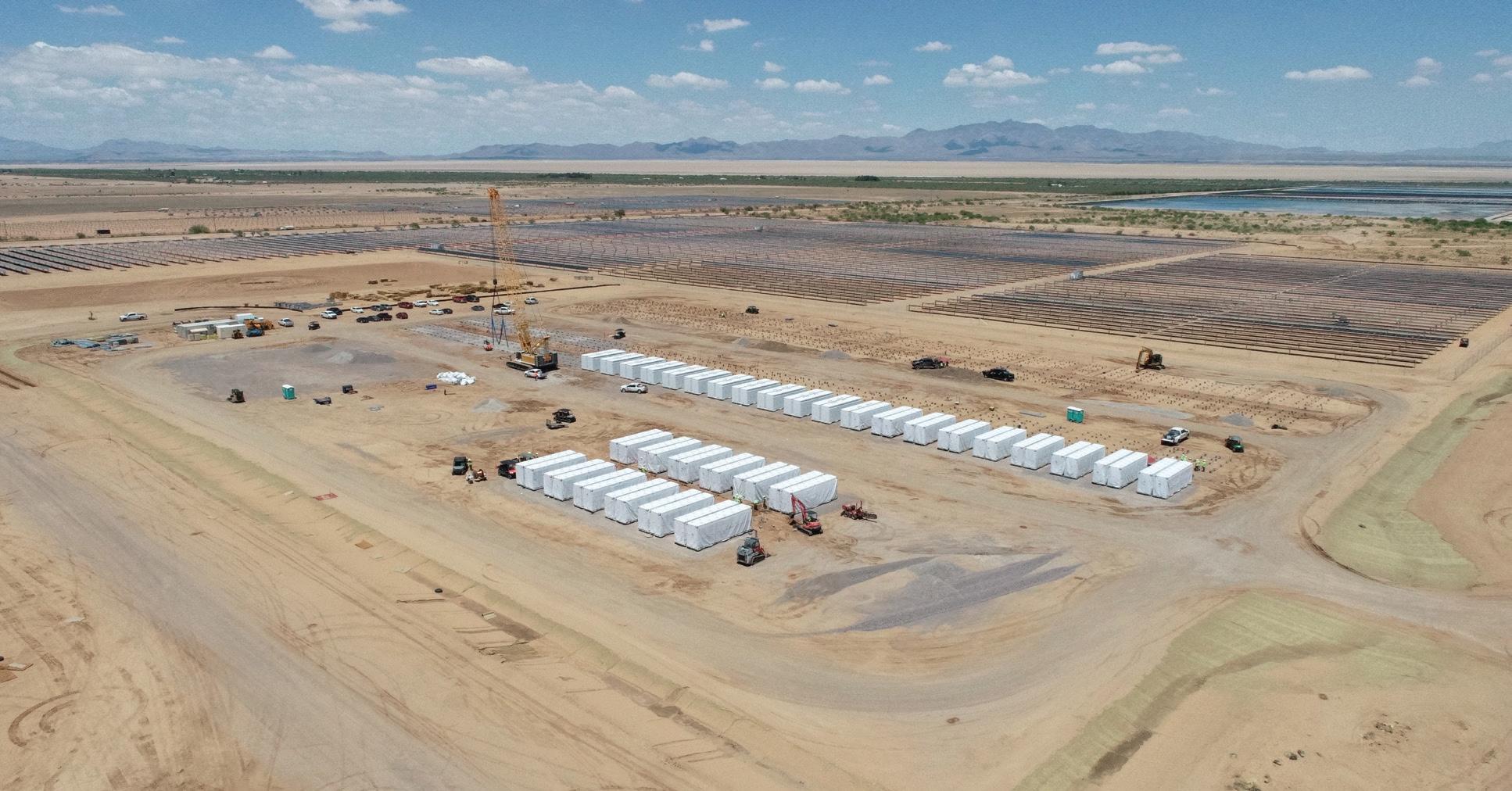
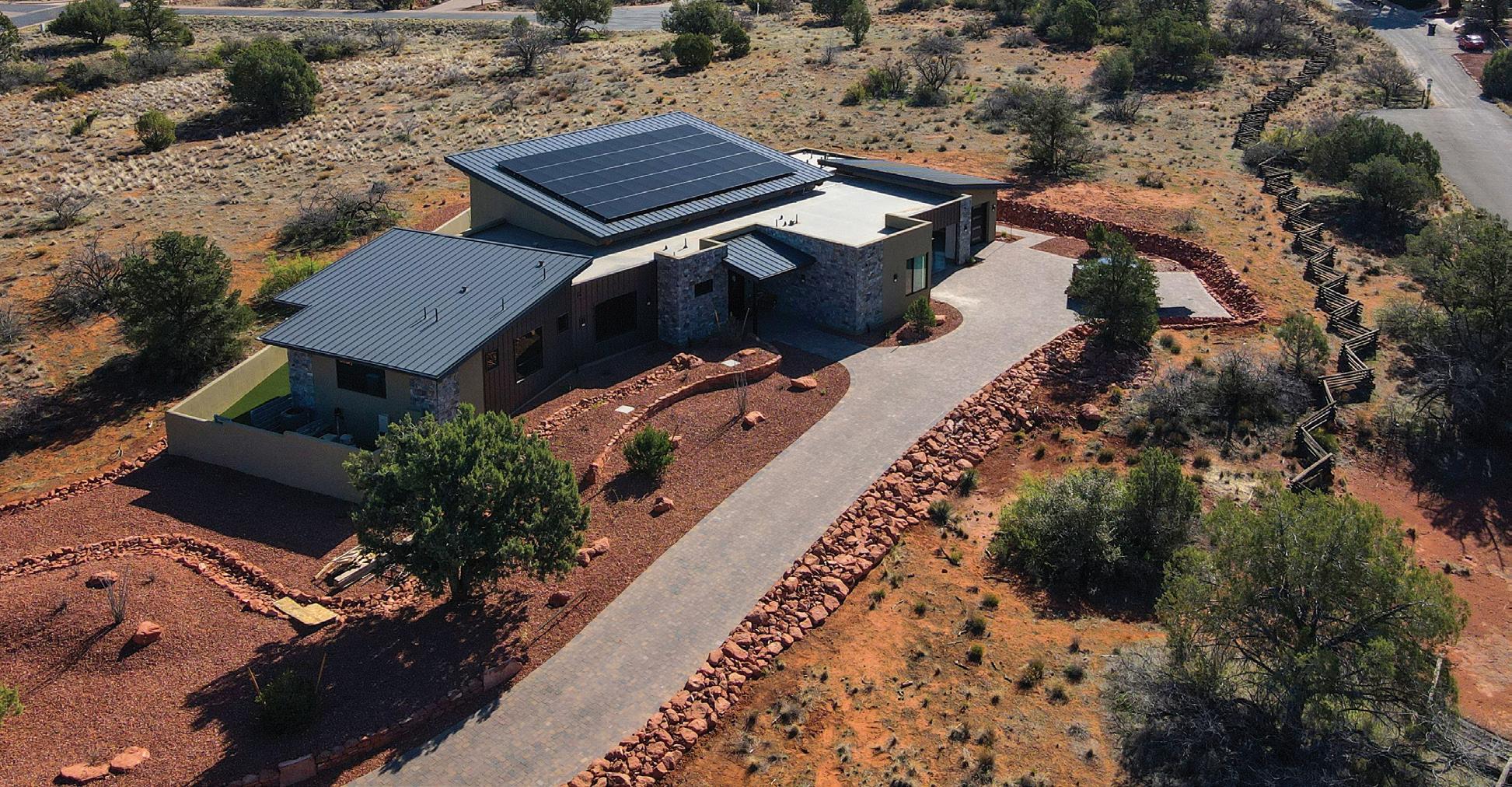

Has an increase in domestic manufacturing in the Southwest changed your solar product strategy?
We welcome any expansion of domestic manufacturing as a win-win for Signal Energy and the solar industry. Domestic manufacturing increases the value of our clients’ projects and mitigates supply chain risks such as tariffs and logistics. The increased manufacturing in Texas and the Southwest is ideal geographically given the location of many of our projects, providing additional cost and logistical benefits that are already paying dividends as we procure for more domestic content/ IRA-compliant projects across our portfolio.

— John Giardino, Executive VP of Client Solutions, Signal Energy
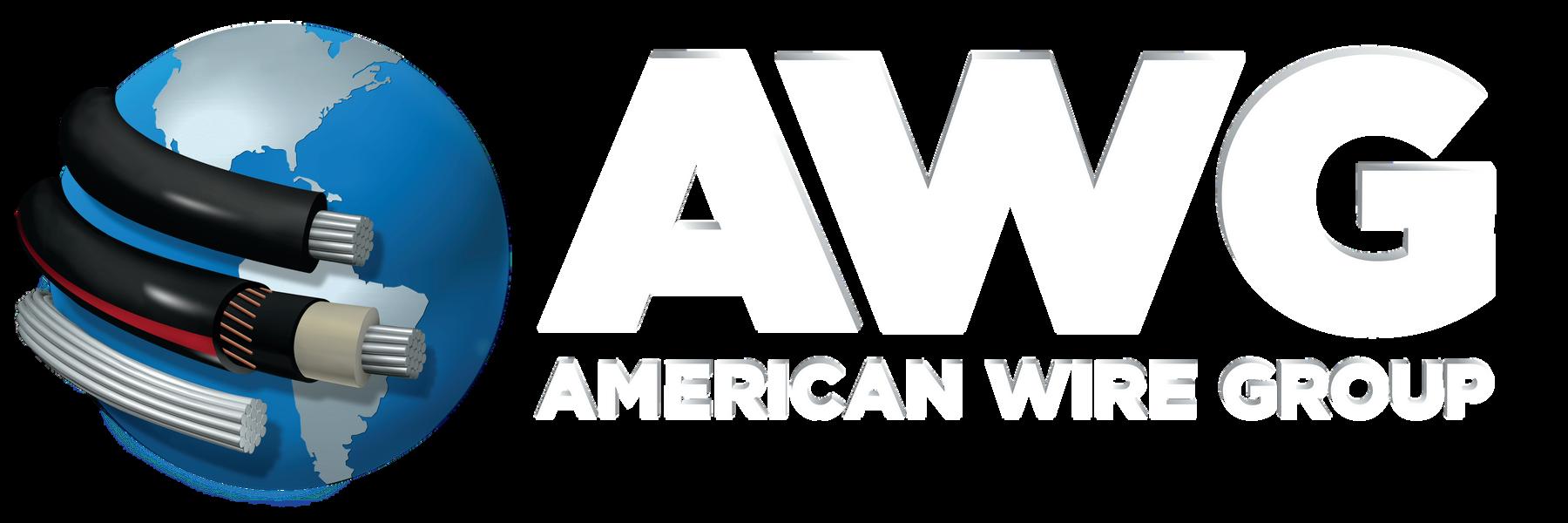



Kensington Station at Metro West 670.95 kW | Fremont, California
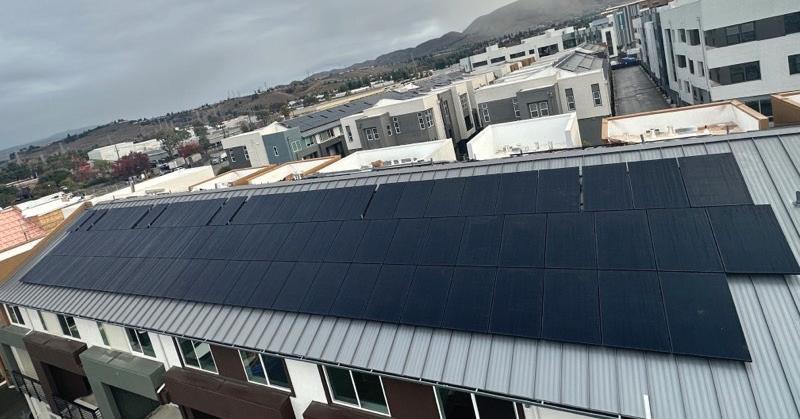
641 MW | Kern County, California
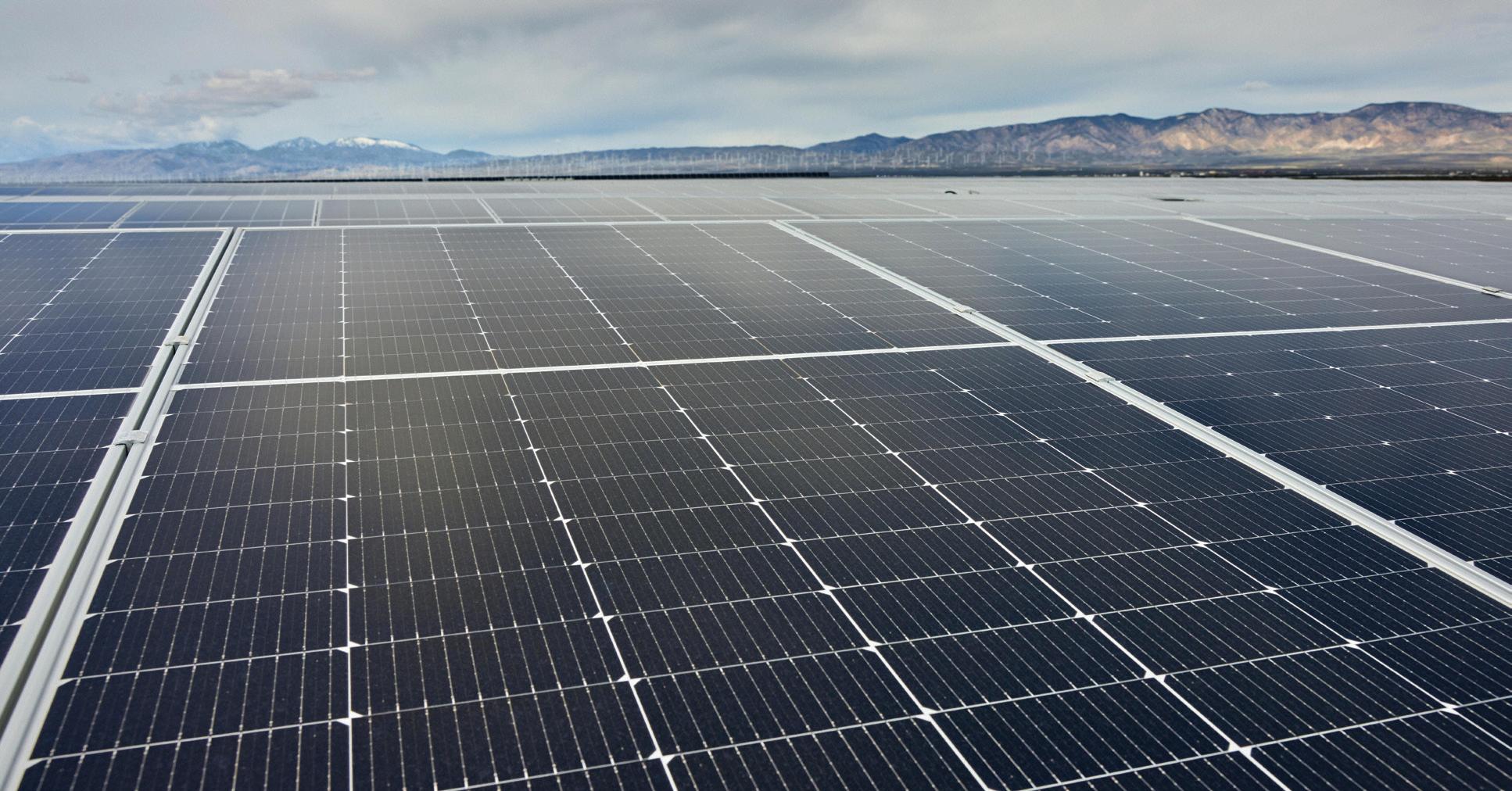
How are you working to educate customers on the latest state policy changes?
While most of our customers are quite knowledgeable on state and federal policies, we need to stay on point to help them navigate the cost and compliance impacts from budgetary project development stages through to project completion. Most questions we encounter relate to labor compliance regulations for renewable energy projects. Elite uses project-specific trackers to maintain visibility into labor compliance and reporting throughout project construction, providing data to the state and our customers. As an IBEW contractor, we have no issue providing skilled labor and meeting apprenticeship ratios. The best thing to do is read carefully and follow the rules.

— Carl Dawson, President and CEO, Elite Electric

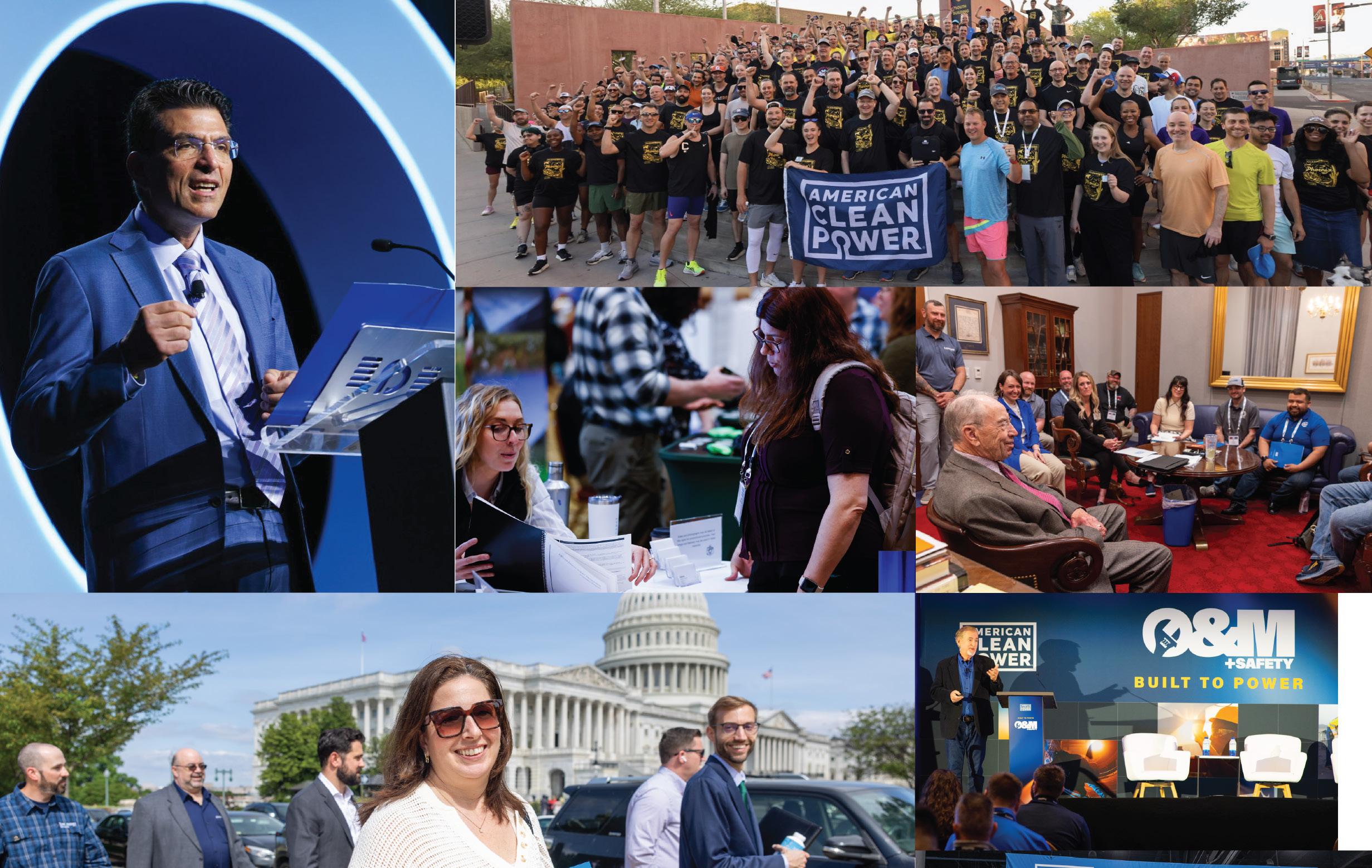
EmpowHER
August 6-8 2025 | Charlotte, NC
Offshore WINDPOWER Conference
October 6-8, 2025 | Boston, MA
ACP RECHARGE: Energy Storage Summit
October 2 7-29, 2025 | Austin, TX
ACP PEAK : Performance, Assessment & Modeling Conference
October 29-30, 2025 | Austin, TX
Operations, Maintenance and Safety Conference
March 4-6, 2026 | Orlando, FL
Siting and Permitting Conference
March 30 – April 1, 2026 | Aurora, CO
Clean Power on the Hill Members only event
April 2026 | Washington, DC
CLEANPOWER Conference & CLEANPOWER in Color
June 1-4, 2026 | Houston, TX
Register today for ACP’s upcoming conferences at cleanpower.org/events

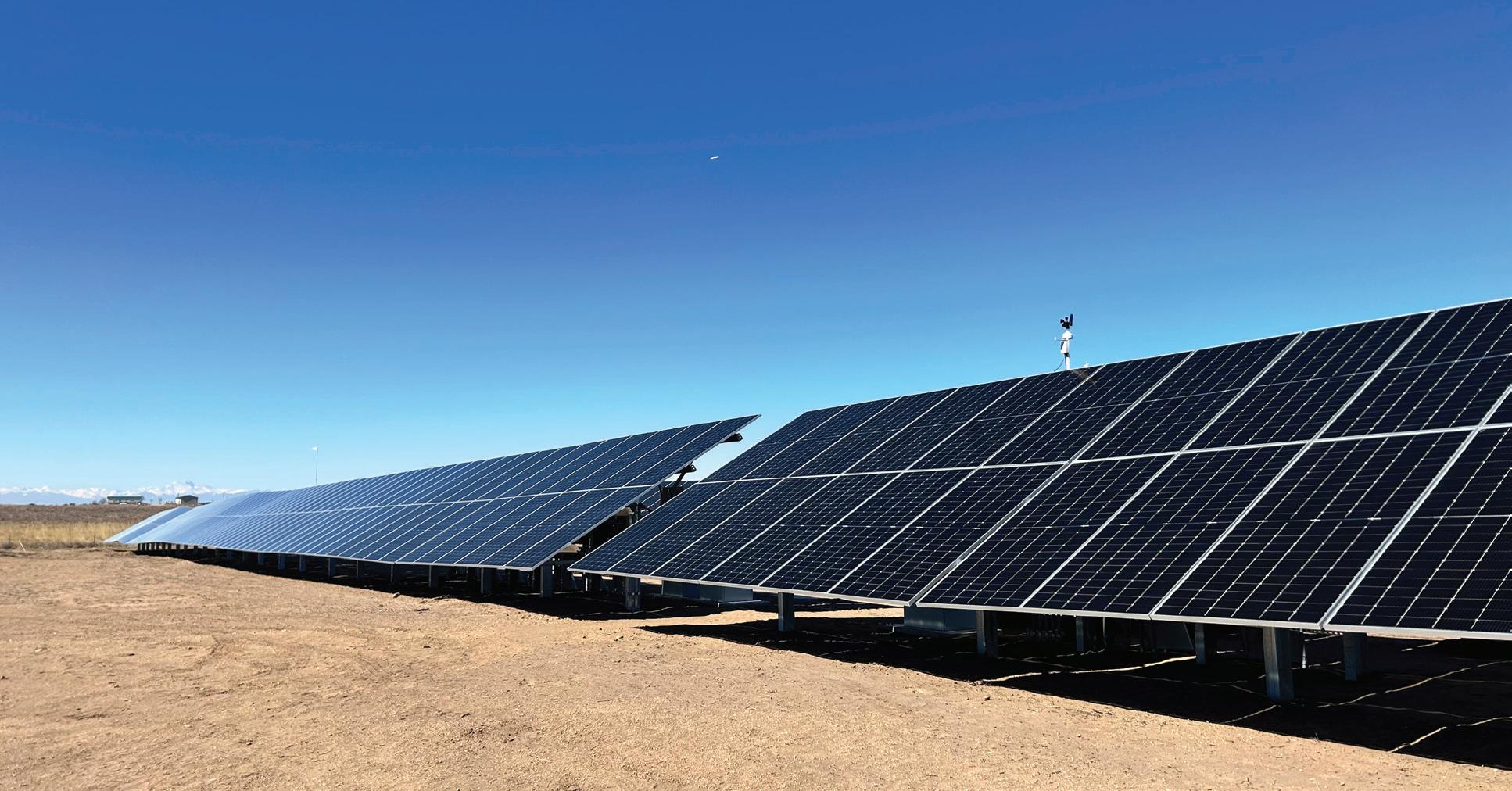
What is it like building projects across a biodiverse state like Colorado?


Building across Colorado’s diverse landscape definitely keeps things interesting. The Front Range and Eastern Plains are pretty straightforward, with mostly mild weather and predictable conditions. But the mountains are a different story. At higher elevations, environmental considerations like SWPPPs (stormwater pollution prevention plans) become especially critical because of the combination of sensitive terrain and surrounding agriculture. When you add winter conditions into the mix, you end up with quite the challenge! Thankfully, this is our home turf, so we’re well-equipped with the knowledge and resources to navigate this effectively.
— Lillian Bacon, Director of Solar & Energy Storage Division, Benchmark Electrical Solutions


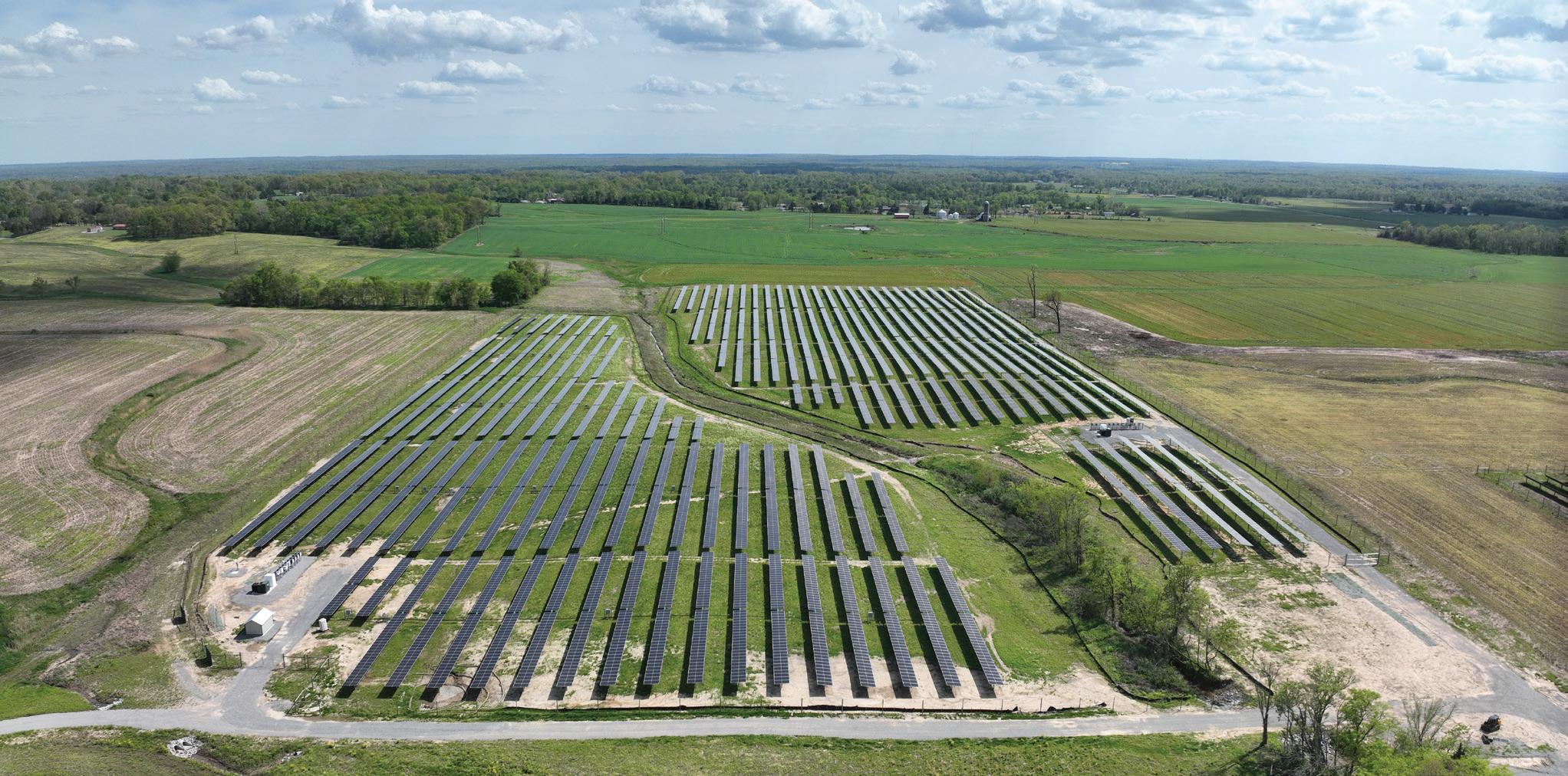


What is driving solar construction in Illinois?
The Illinois state legislature has demonstrated a significant commitment to solar PV construction, creating a robust market supported by forwardthinking policies. This commitment, combined with Illinois’s attractive prevailing wage rates, draws skilled professionals from both union and non-union backgrounds, resulting in a highly motivated and talented workforce dedicated to delivering quality projects.
— Terry Hamer, General Manager, Arch Electric


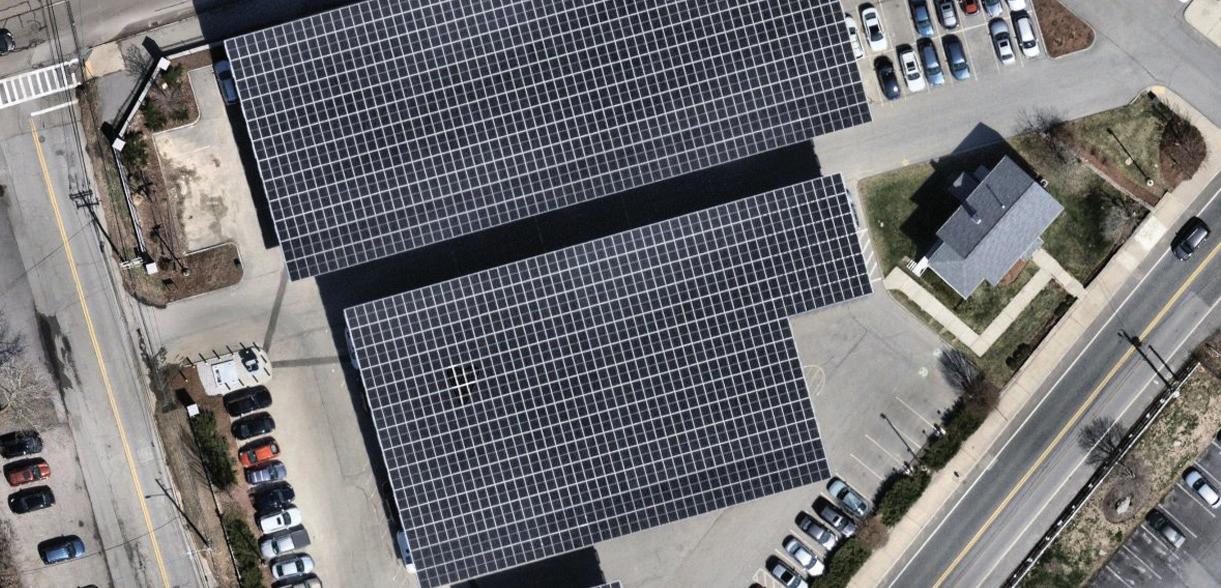
Framingham State University
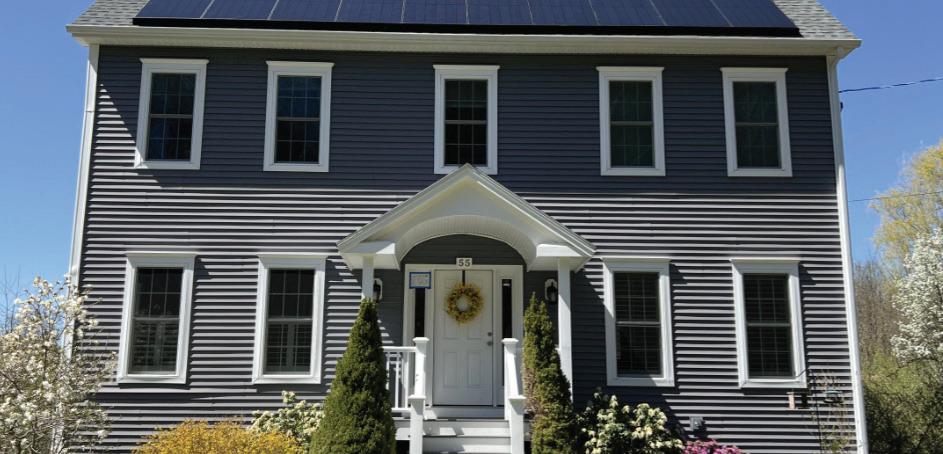
What difference does solar make in the lives of Massachusetts homeowners?
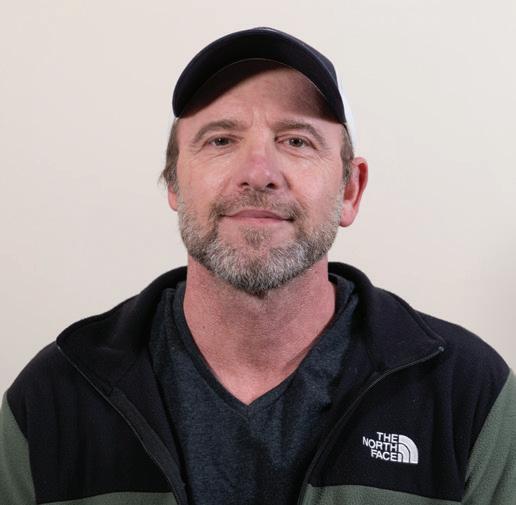
For Massachusetts homeowners, going solar is a powerful step toward energy independence and a more sustainable, resilient future — starting right on their own rooftops. The sunlight hitting your home is the cheapest source of energy available. Solar not only delivers real financial savings by lowering electric bills and guarding against some of the highest utility rates in the country, but it also helps reduce our reliance on fossil fuels and supports the Commonwealth’s ambitious climate goals — one home at a time.
— Marc Delucia, Solar Design Specialist, ReVision Energy


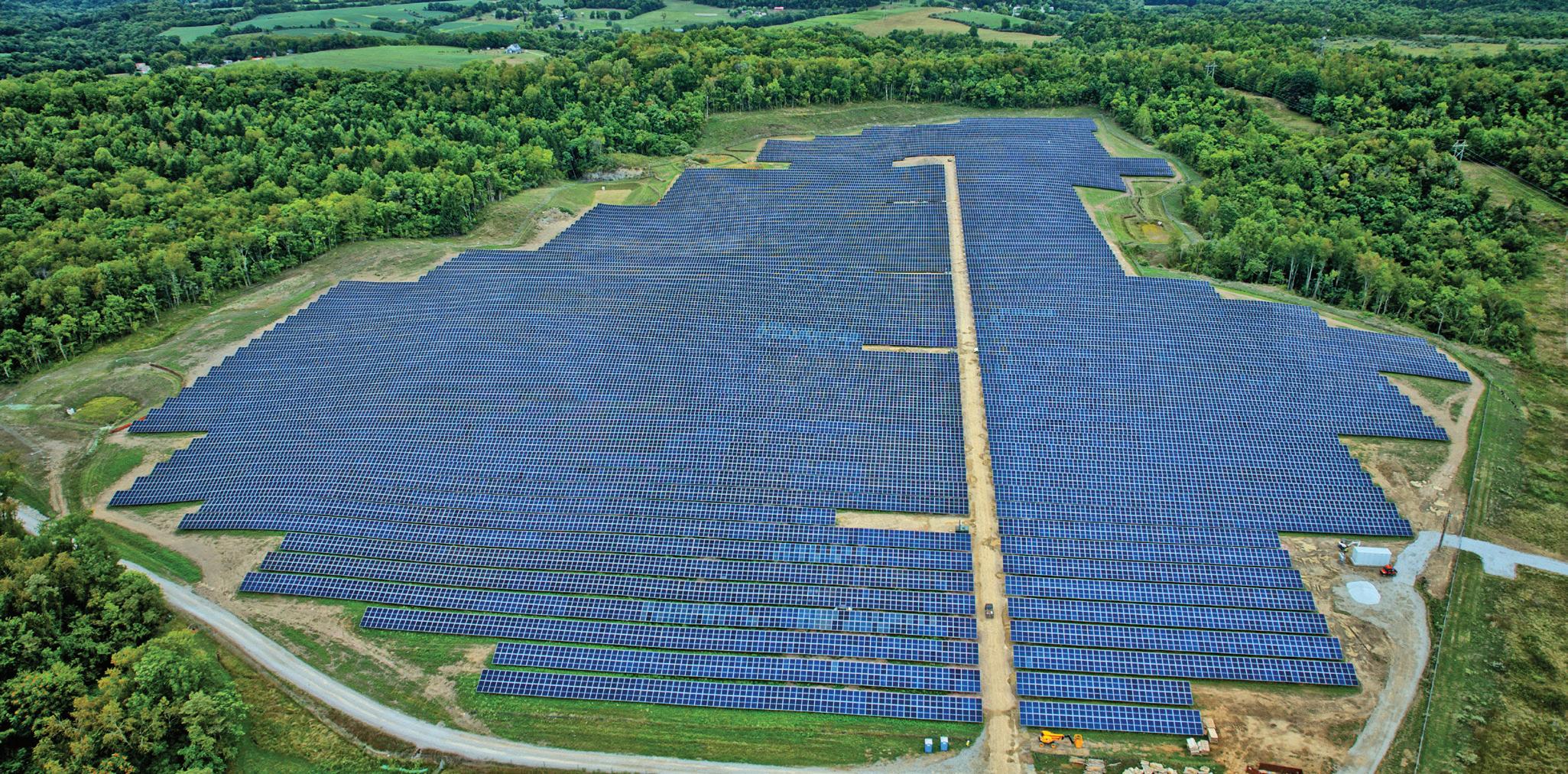


What impact can solar have in Pennsylvania, a state known for coal and natural gas production?

Pennsylvania has long been a leader in energy production and innovation. Today, the growth of solar energy continues that legacy by repurposing former mining lands, creating jobs for a rapidly expanding solar workforce and delivering muchneeded electricity to meet the state’s rising energy demands. United Renewable Energy — together with our many partners — is proud to play a role in driving Pennsylvania’s solar future.
— Keith Herbs, Executive VP of Sales, United Renewable Energy

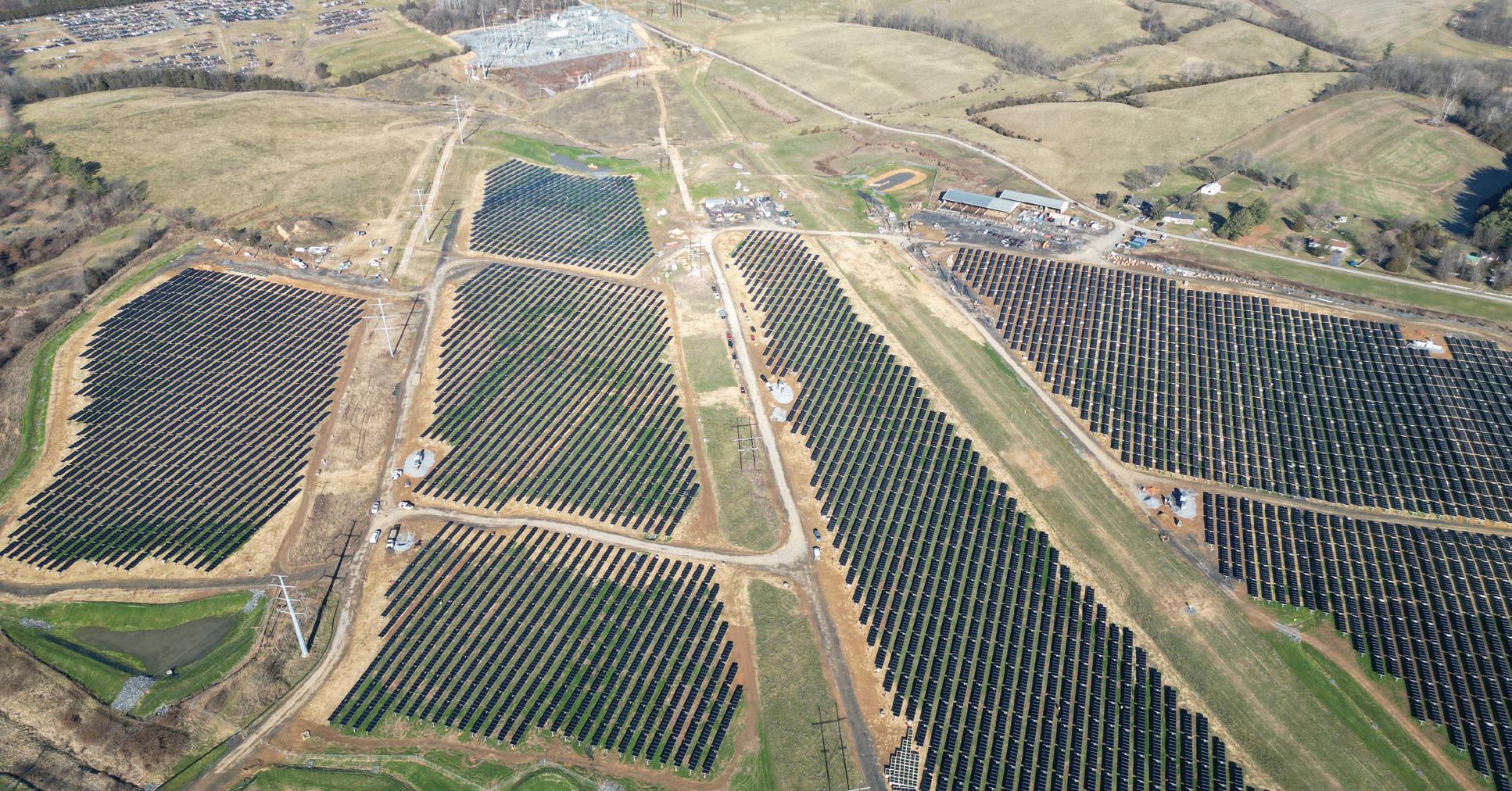
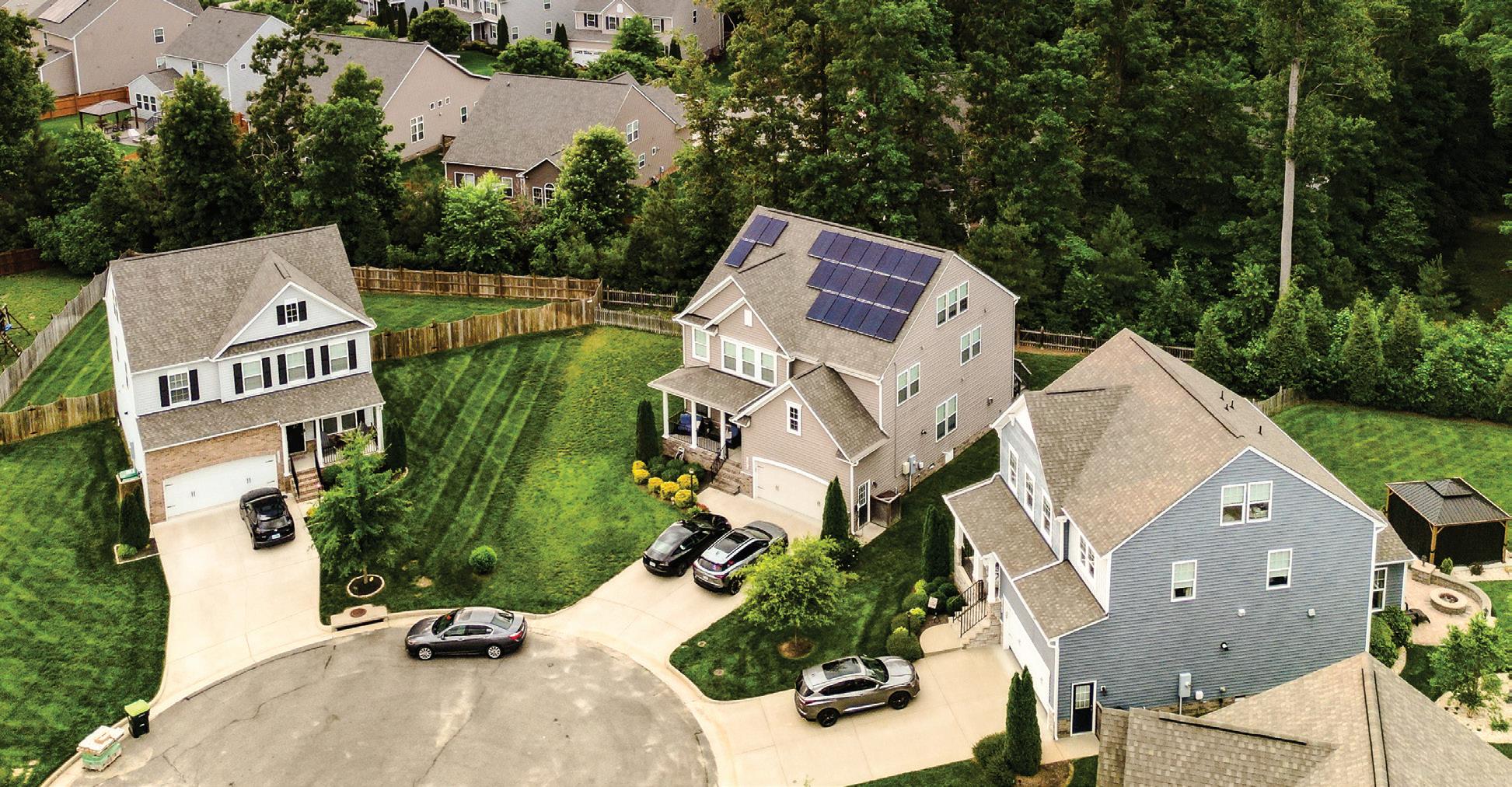

Virginia and the Southeast are emerging as viable solar markets due to a combination of strong solar resources, growing energy demand and increasingly favorable policy landscapes. Virginia, in particular, benefits from legislation like the Virginia Clean Economy Act, which mandates 100% clean electricity by 2050, driving utilityscale development. The region also offers large tracts of developable land, improving interconnection opportunities and a lower cost of doing business, making it attractive for investors. Additionally, major utilities are aligning with decarbonization goals, creating long-term stability and procurement demand — key ingredients for sustained solar growth.

— Josh Bessette, CEO, J&B Solar

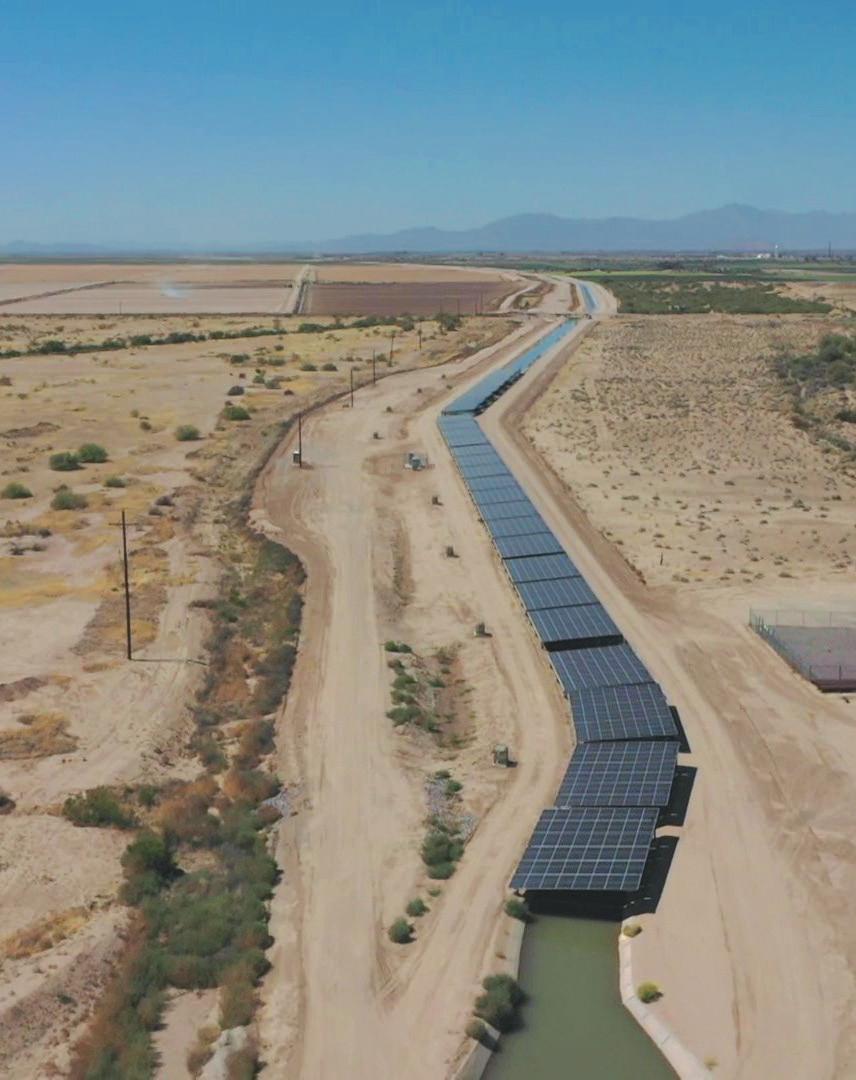

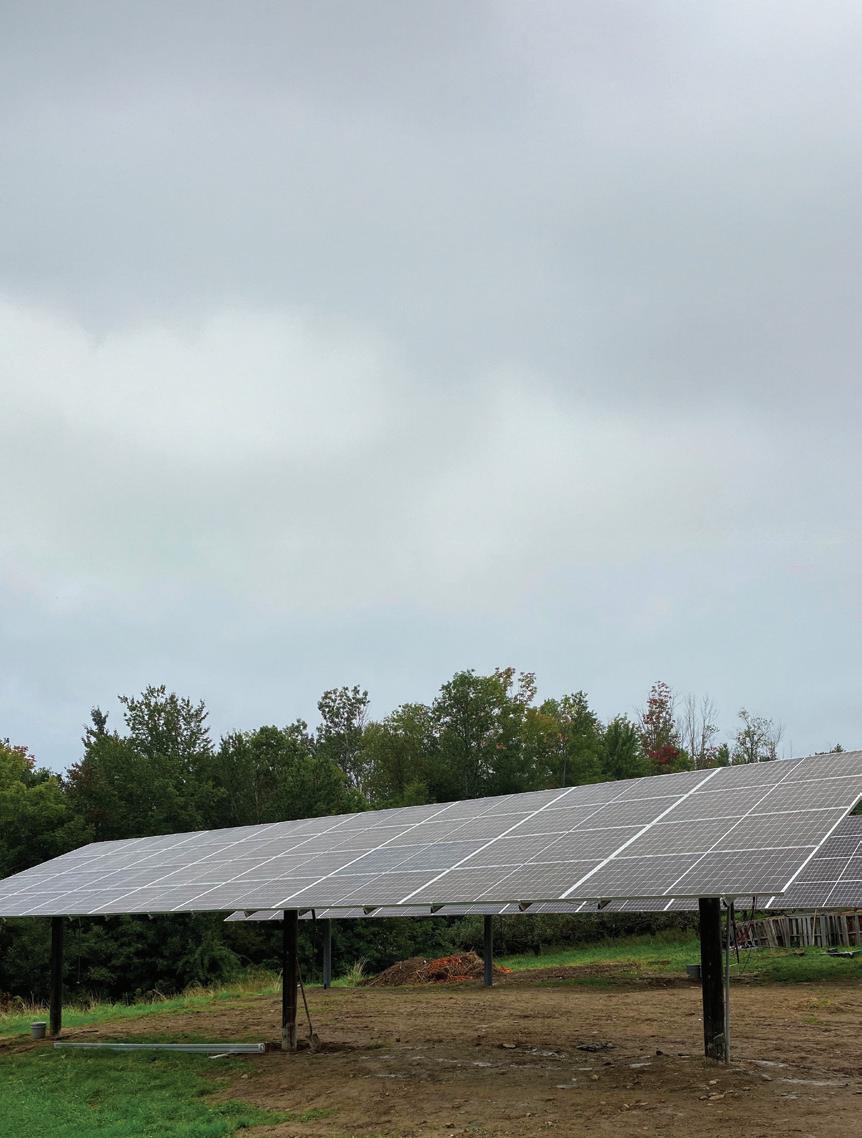
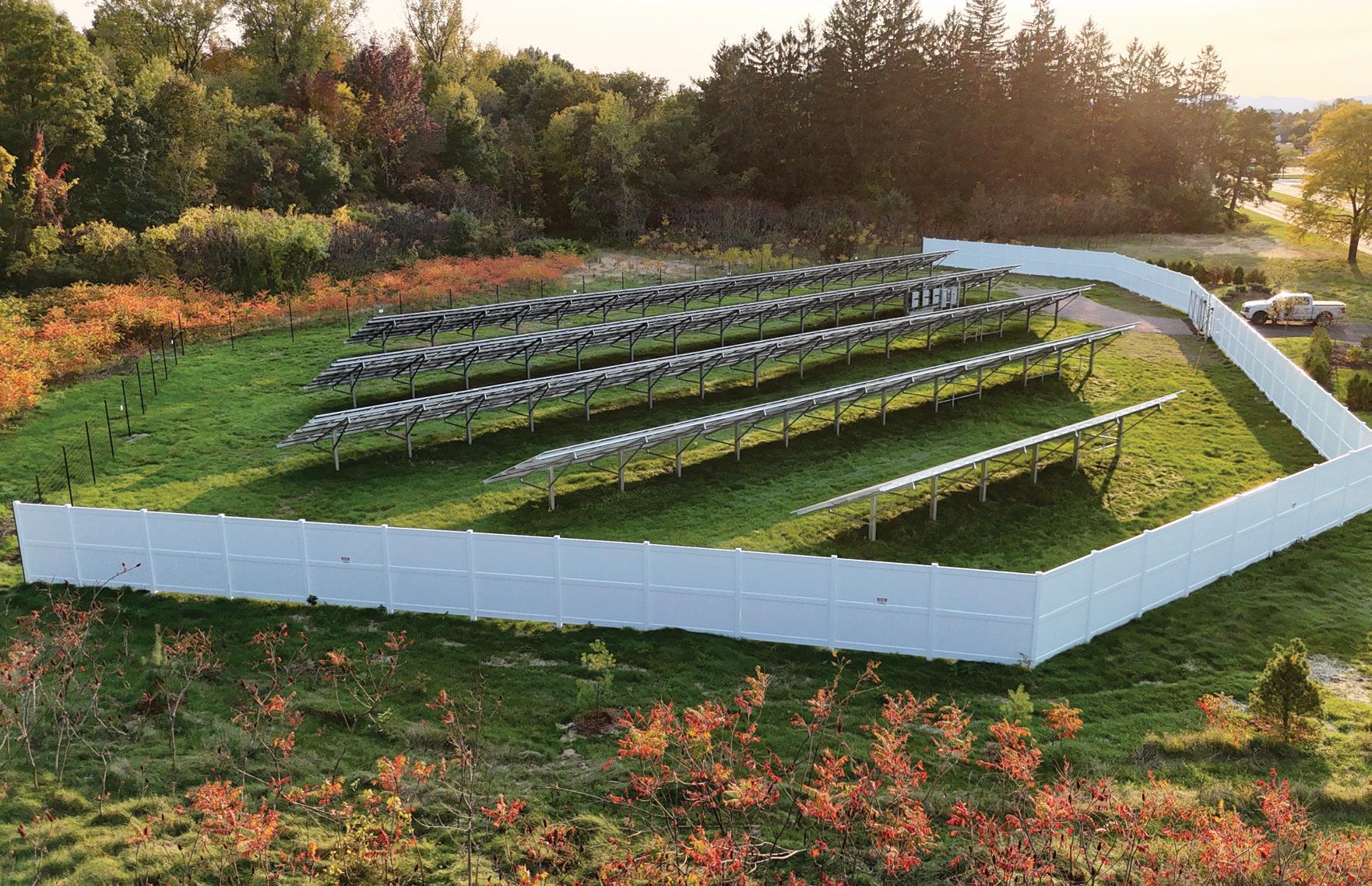

In this special section, we tell some of the impactful stories behind the kilowatts. From an installer who lost a full warehouse to Hurricane Helene and built back up again, to a contractor that spearheaded the first canal solar project in the country with the help of a Tribal community, these feature stories highlight the resilient and inventive nature of the solar industry.

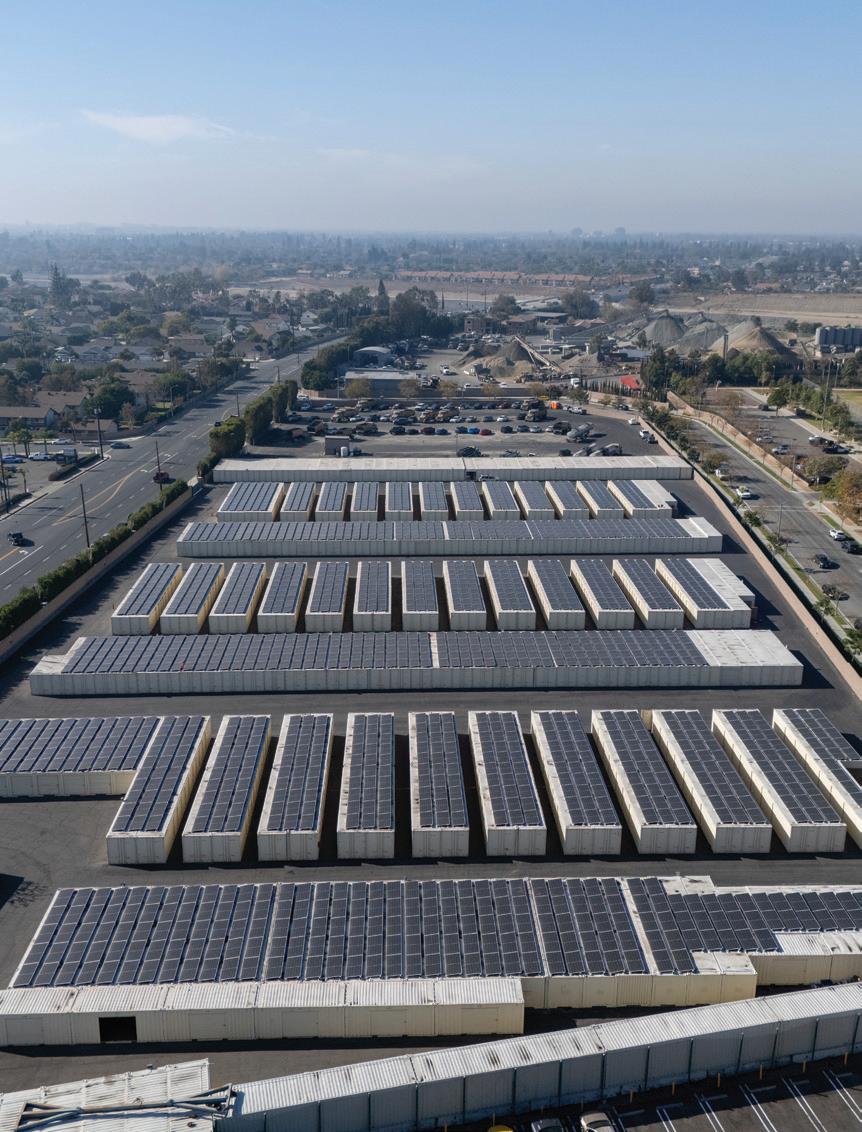
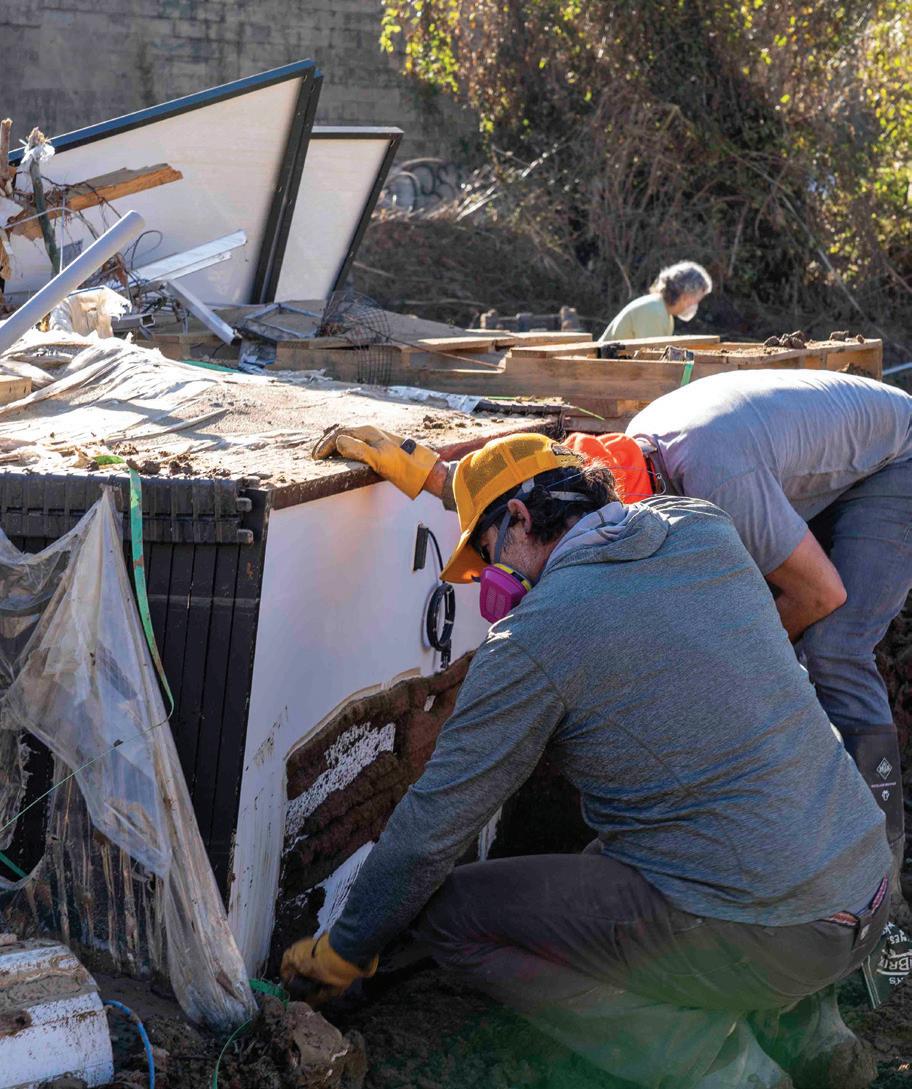
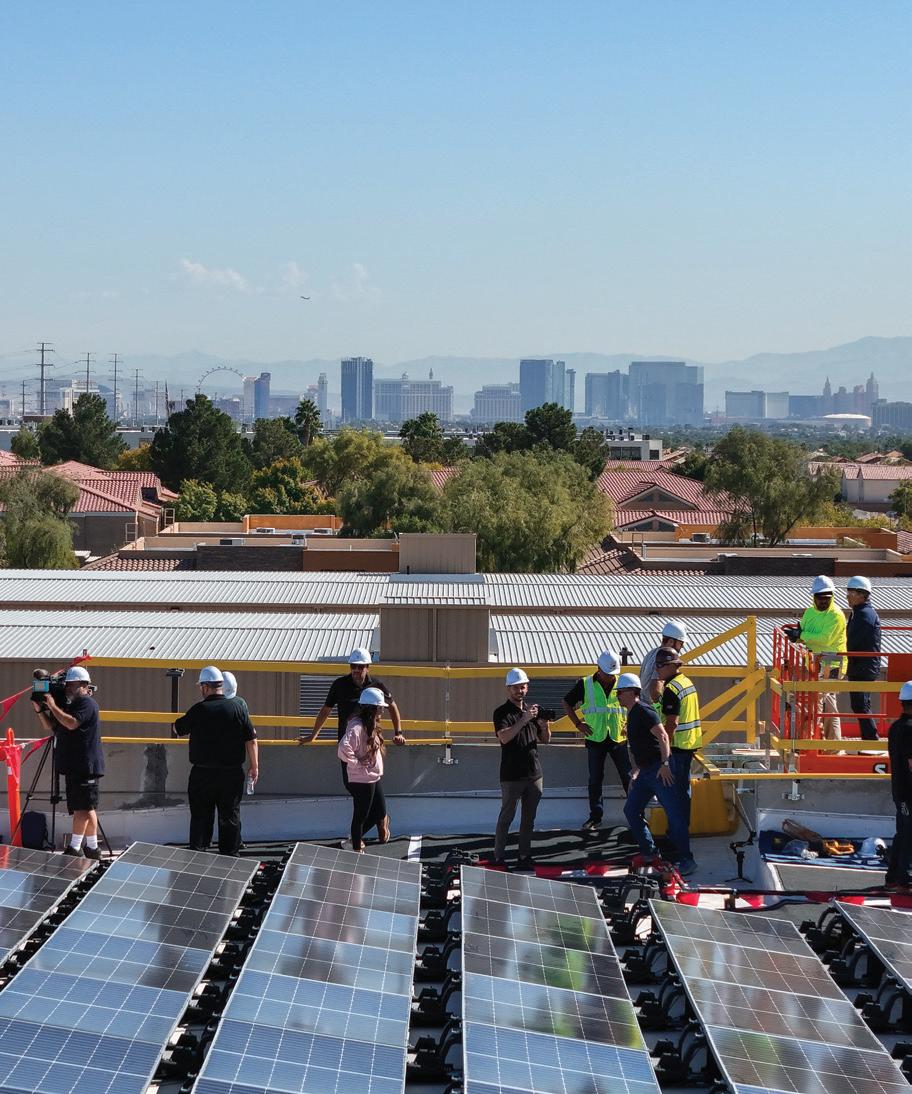
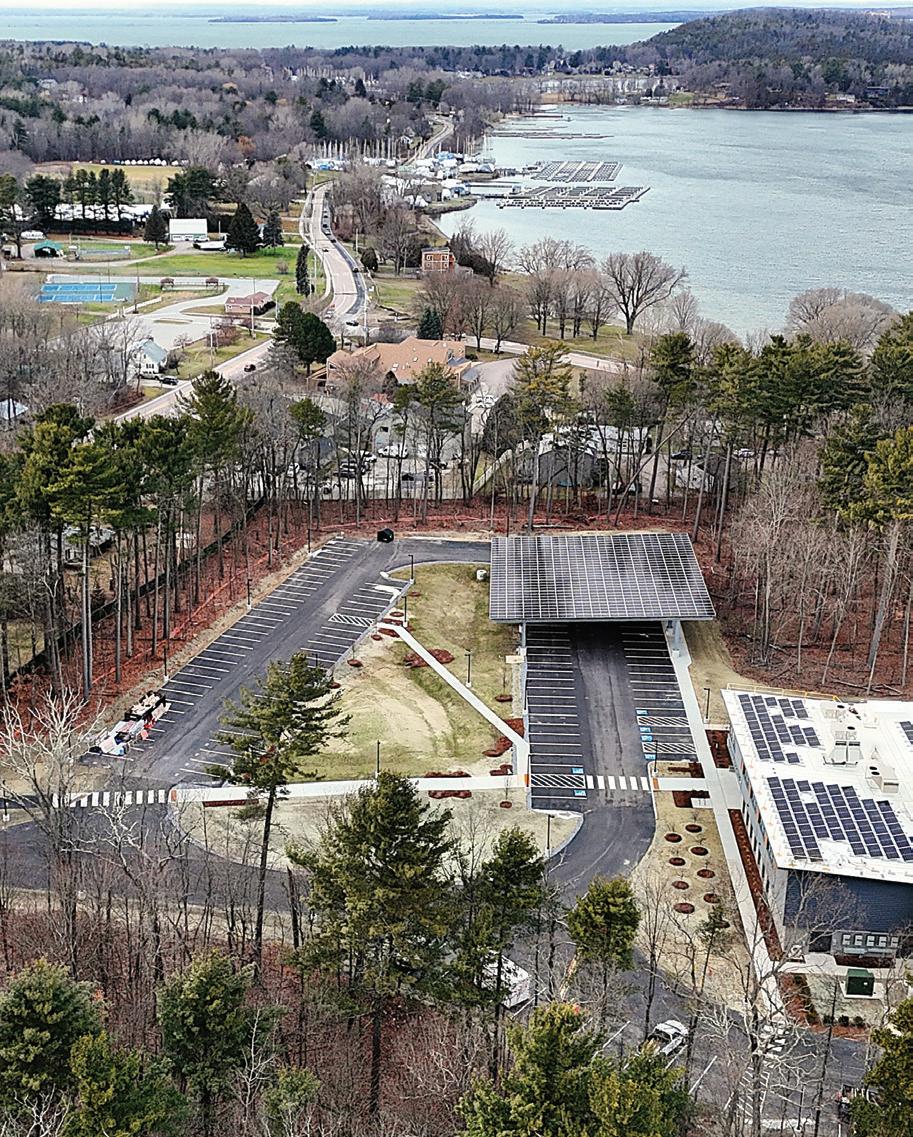

BY KELLY PICKEREL
It’s the family dream for each generation to surpass the last — to set a path on which your children can succeed. When Barry Moore was ready to retire from the Pennsylvania solar installation company he founded 10 years earlier, his sons Tyler and Matt stepped in to continue on the path. But even though it stayed in the family, the brothers wanted to take Moore Energy (No. 149) in their own direction.
“Since [we] came on board, we’ve been really focusing on growing and expanding the business,” said Tyler Moore, the new company co-owner alongside his brother. “We branched out into the developing space and started taking on building these small utility-scale solar farms in central Pennsylvania.”
Moore Energy, which started in 2008 as a residential and small-scale commercial contractor in the greater-Philadelphia area, averaged fewer than 500 kW of annual installations in the early years. In 2024, the company completed over 200 residential projects, 20 commercial rooftop projects and its first utility-scale solar farm, finishing the year at nearly 12 MW of installs. Moore said that entry into bigger projects was a matter of capitalizing on a moment.
In 2021, the Supreme Court of Pennsylvania made a ruling in Hommrich vs. PUC that allowed for net-metering compensation. This finally gave commercial properties the chance to profit off exported solar power and also paved the way for utility-scale solar in the state.
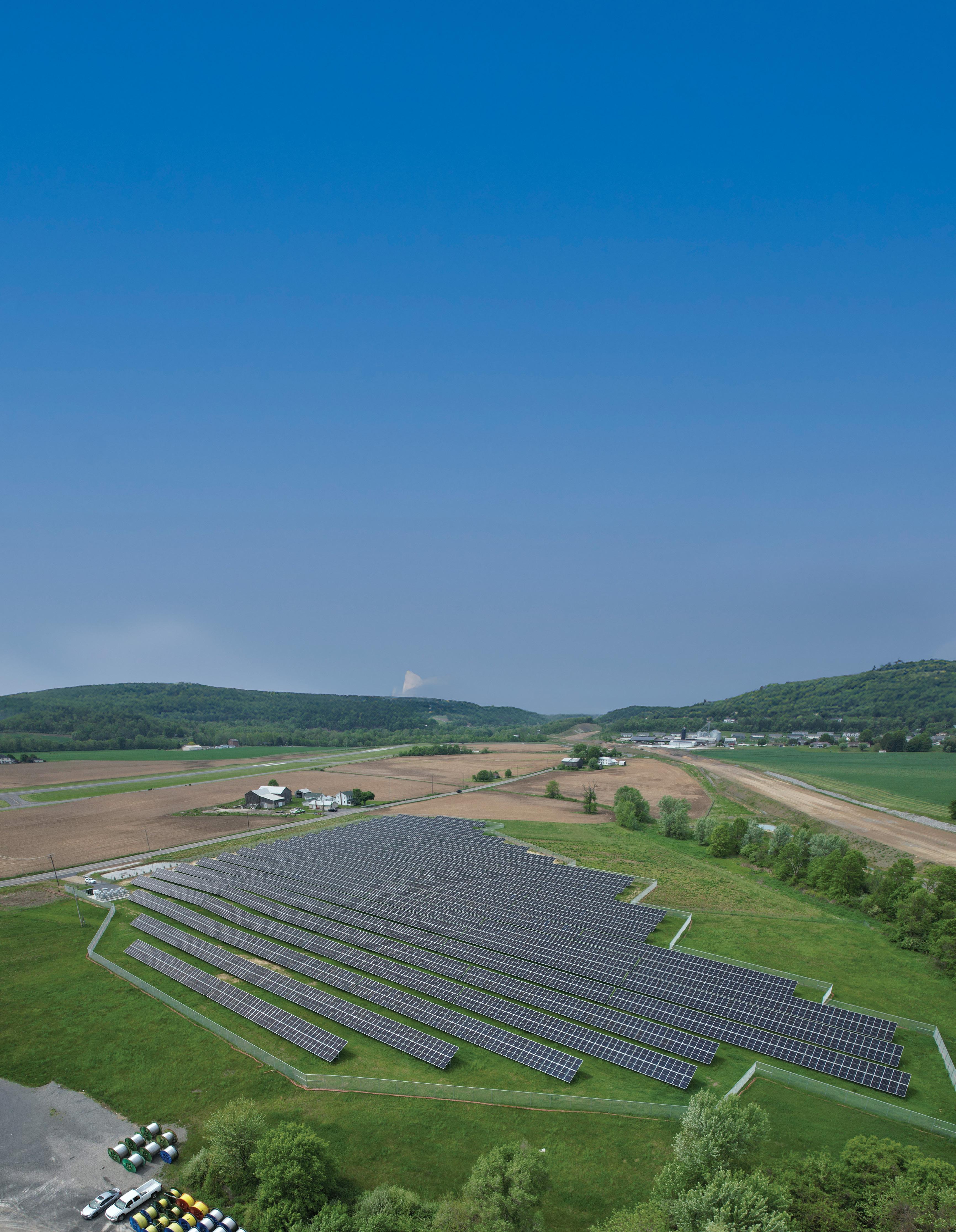
“When the Hommrich case occurred in 2021, Matt and I as business owners decided to look in central Pennsylvania because we realized that opportunity: I can take a piece of land, throw a solar system on it, and all the energy produced is sent back to the utility and the utility is going to pay for it. I don’t need an underlying business. I don’t need a customer,” Moore said. “We ended up creating this business model around finding land, getting all the interconnection and approvals, building a solar farm that has great economics, and then we sell it to someone who wants to own the system for 30 years.”
While a common practice in other states, this new business line for Moore Energy felt very novel. Moore said his accounting
background and his brother Matt’s expertise in the solar installation space made the jump to larger projects easy.
“We’ve been in the commercial space for 15 years and have a very experienced installer base. We’ve done ground-mounts in our commercial realm of work, so doing that at a larger scale [hasn’t changed],” he said. “The real learning curve has come in working with land development, working with townships, having an 18-month process to go through.”
While the door to utility-scale development in Pennsylvania is now wide open, Moore said the Hommrich decision has kept the company busy in the commercial rooftop market too.
“You have business owners who are entrepreneurs, and they’re looking for ways to make money and save money. Now all of sudden you have the opportunity to turn your roof into a revenue stream. It’s been able to change the way we’re having conversations with business owners,” he said. “It is a very large factor in why we’ve

experienced such growth in the commercial side of the business in the past four years.”
And continued growth is the plan for Moore Energy.
“We’re hoping to continue to grow in what we call the small-scale utility space. A lot of that is currently hinged on the legislation that’s batted around by Congress, so we’re hoping for a friendly outcome,” Moore said. “We’re going to continue on the same trajectory of offering [solar in all markets]. Anything solar that you need, we can provide it.” SPW
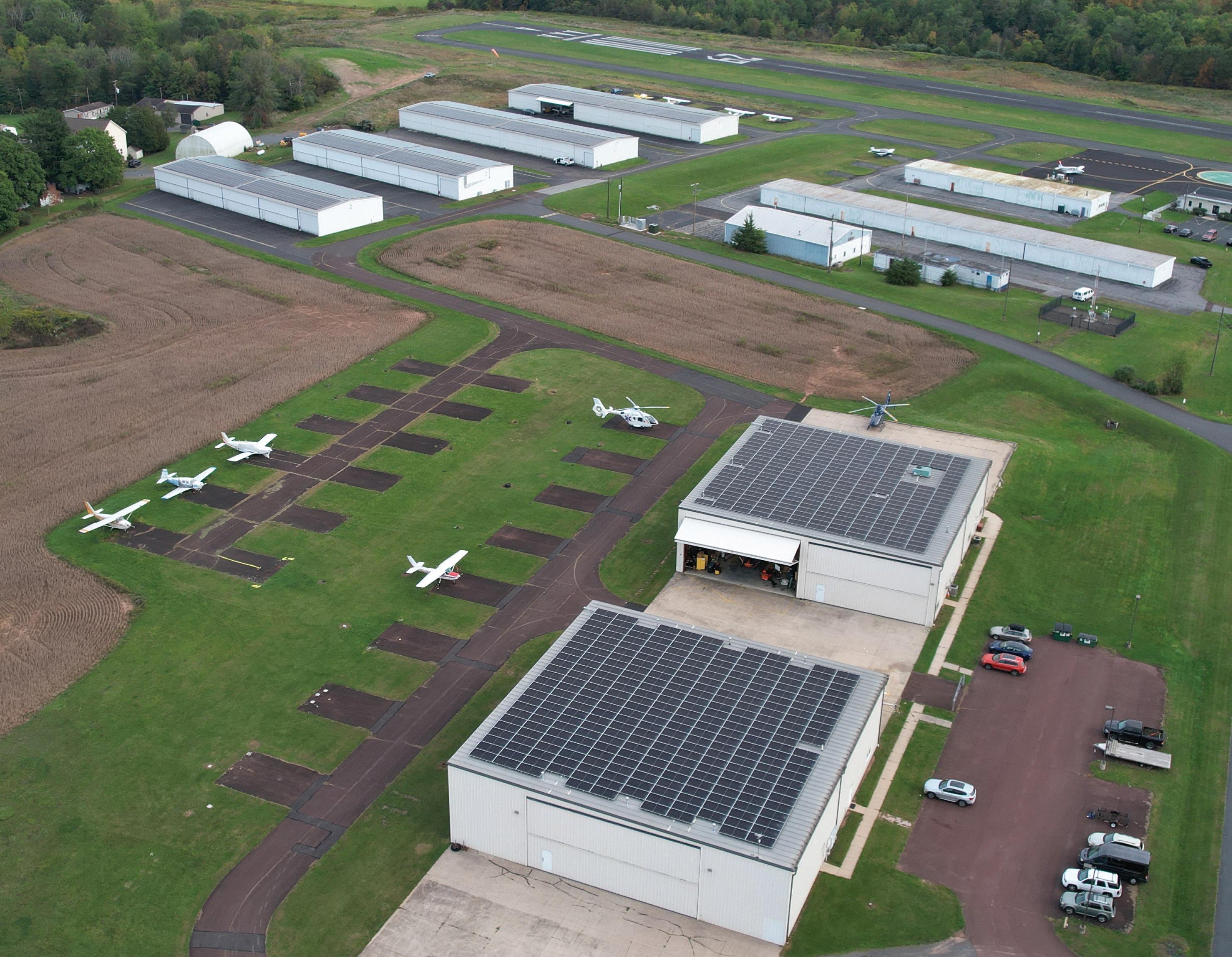

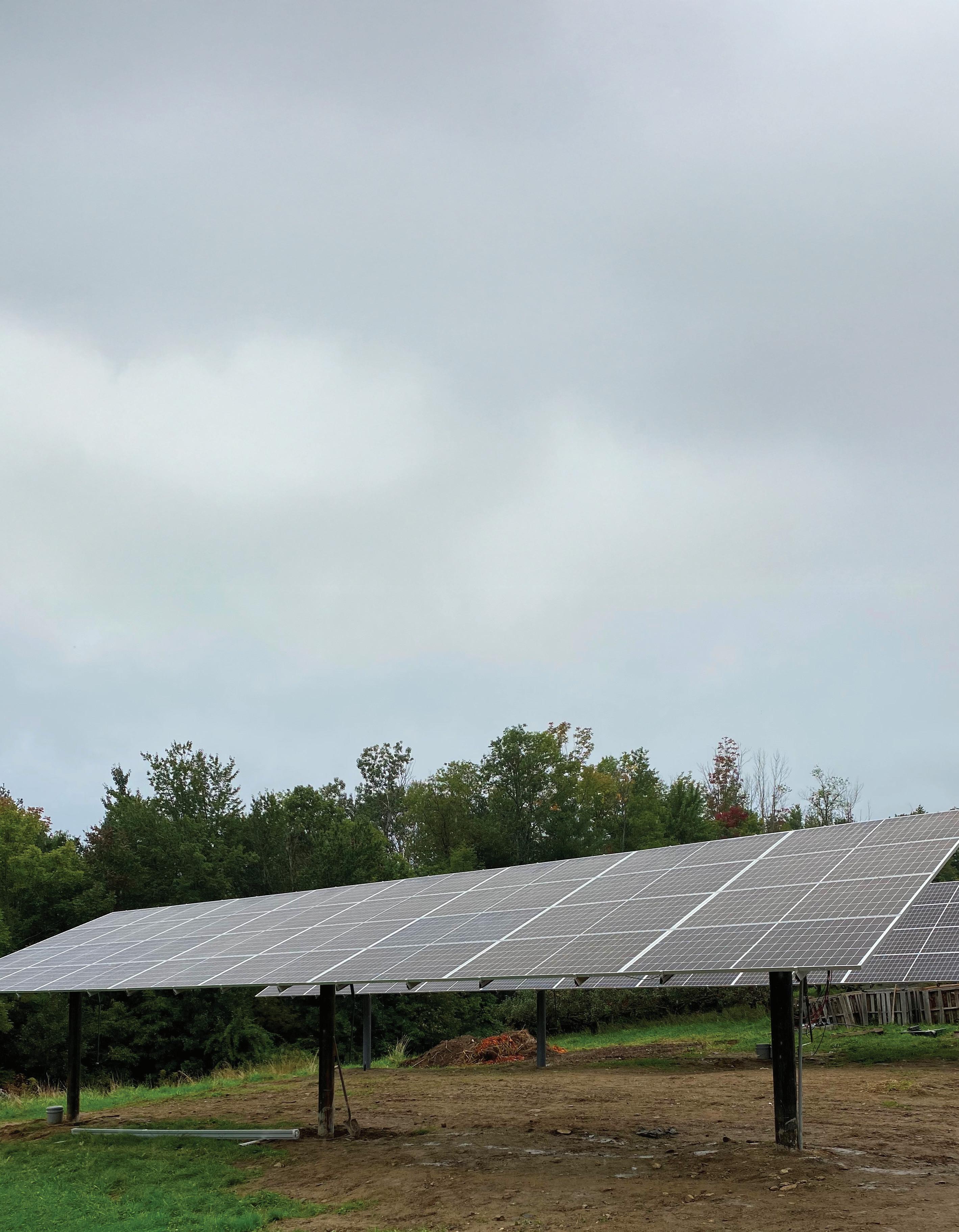
BY BILLY LUDT
The path to a career in the solar industry is open to the people interested enough in the field. George Horrocks had a successful career working at technology startups in the aughts, but then came the Great Recession of 2008.
“I flew out to California, went to the Solar Living Institute with my knapsack, my tent and my sleeping bag,” Horrocks said. “It was a full week of intense training, and I came back and I started Harmony Energy Works (No. 386).”
He was no longer developing databases for companies in computer design, software and hardware, but standing on rooftops in New Hampshire building solar arrays in the elements. Then in December 2009, Horrocks received a call from LightWave Solar with an offer to build solar in Tennessee.
It was there that he learned about the USDA Rural Energy for America Program (REAP), which provides loans and grants for energy projects serving businesses in rural areas. Farms that receive 50% of their income from agricultural sources, as well as small businesses, cooperatives, electric utilities and Tribal corporations, can qualify for this funding.
When Horrocks returned to New Hampshire after a year working with LightWave, he restarted and refocused Harmony Energy Works to help rural businesses qualify for REAP grants.
“The nice thing is it directly benefits a small, individual business,” Horrocks said. “It’s not about money for a big group of financiers or something. It’s about somebody who’s trying to improve their bottom line.”
In their first form, REAP grants provided 25% of a qualifying solar project’s costs. Last year, that was increased to 50% with $145 million in additional funding from the Inflation Reduction Act.
Harmony Energy Works has made applying for REAP grants a core part of its business, training three employees to write these hundred-page documents. Deb Leafe, grant and incentives manager at Harmony, has led the company’s grantwriting efforts in recent years, securing REAP grants for nearly every project the company has applied for.
“[REAP] took what might be a sevenyear payback period down to three years,” Horrocks said. “In effect, if you had a tax appetite, we could guarantee if you got the USDA grant and the state rebate and
the 30% tax credit, that you’re going to be cash-positive within three years. Last year, when the USDA grant doubled, we were looking at a one-year payback period.”
Harmony installs solar in New Hampshire, Maine and Massachusetts. While Massachusetts is more urban, much of New Hampshire and Maine is considered rural. The company builds residential and small commercial arrays, keeping its crews busy with home projects while applying for REAP grants for rural businesses.
Horrocks estimated that about 80% of Harmony’s commercial work qualifies for REAP grants — work that otherwise wouldn’t pencil out financially. Under the
current presidential administration, REAP has slowed issuing grants, but Harmony has already prepared six more projects that it plans to submit when applications open in July.
Horrocks said rising energy costs are impacting many business owners in his region, especially rural farms and businesses with small margins to start. Installing a solar project can offset those costs, and grants like REAP can make more projects possible.
“That’s really what the USDA REAP grant does — it gives people a chance to be able to afford it, and the people who I think need it the most, the small business who’s just trying to survive,” he said. SPW

“[REAP] took what might be a sevenyear payback period down to three years. Last year, when the USDA grant doubled, we were looking at a one-year payback period.”


BY KELSEY MISBRENER
It's no secret the solar industry can attract some snakes in sun-soaked desert states like Nevada. The high solar potential and expensive electricity drums up plenty of business for all kinds of installers — some worthy rivals, but also some bad actors. Las Vegas-based installer Sol-Up (No. 140) started looking into solutions a few years ago.
"Back in '21, we were really upset at what was occurring in the industry: A lot of bad actors with regards to consumer fraud, I'll call it ‘misrepresentation’ to homeowners, overloading the Nevada State Contractors Board," said Steve Hamile, COO of Sol-Up. "We found it really challenging to compete in a market where we would go to a homeowner and the homeowner had been completely taken advantage of."
Hamile and his colleagues decided to reach out to their federal legislators, who told them it's a state-level issue. They kept ringing the alarm to various state leaders
until they reached Democratic Sen. Fabian Doñate in 2023.
"Doñate had called me and said, 'Look, my family member had really been taken advantage of by door-to-door [solar sales]. Now I see what you're talking about,’" Hamile said.
Sol-Up worked with Doñate and the state attorney general to draft a bill for solar consumer protection, SB 293, that required solar salespeople going door-todoor to be affiliated with a C-2 Electrical Contractor, along with other safeguards. The bill cut down on homeowner complaints to the attorney general's office, but it didn't solve the problem of solar companies skipping town after installations and leaving homeowners with broken, orphaned systems. The state fund set up to help homeowners recoup such losses was still seeing major demand.
"The Nevada Contractors Board Recovery Fund was almost tapped
clean entirely by the solar industry," Hamile said.
At the same time, Sol-Up was running into problems with restrictive HOAs denying or stalling customer solar projects. The company decided to take another crack at reforming solar business practices as well as streamlining HOA solar installations in the 2025 legislative session.
"In the first session, I was really the outsider looking in. I co-presented the bill, I helped co-write the bill, but I really didn't have a lot of say, because much of it was mitigated. A lot of what I wanted in there, we had to acquiesce to some louder voices," Hamile said. "But then I said, 'You know what? I'm not going to stop next session. We're going to start writing bills now.’"
While Sol-Up was largely alone in pressing for change in 2023, the company had plenty of help this time around. Hamile and his colleagues formed the

Team Sol-Up at a project ribboncutting with Sin City as the backdrop.

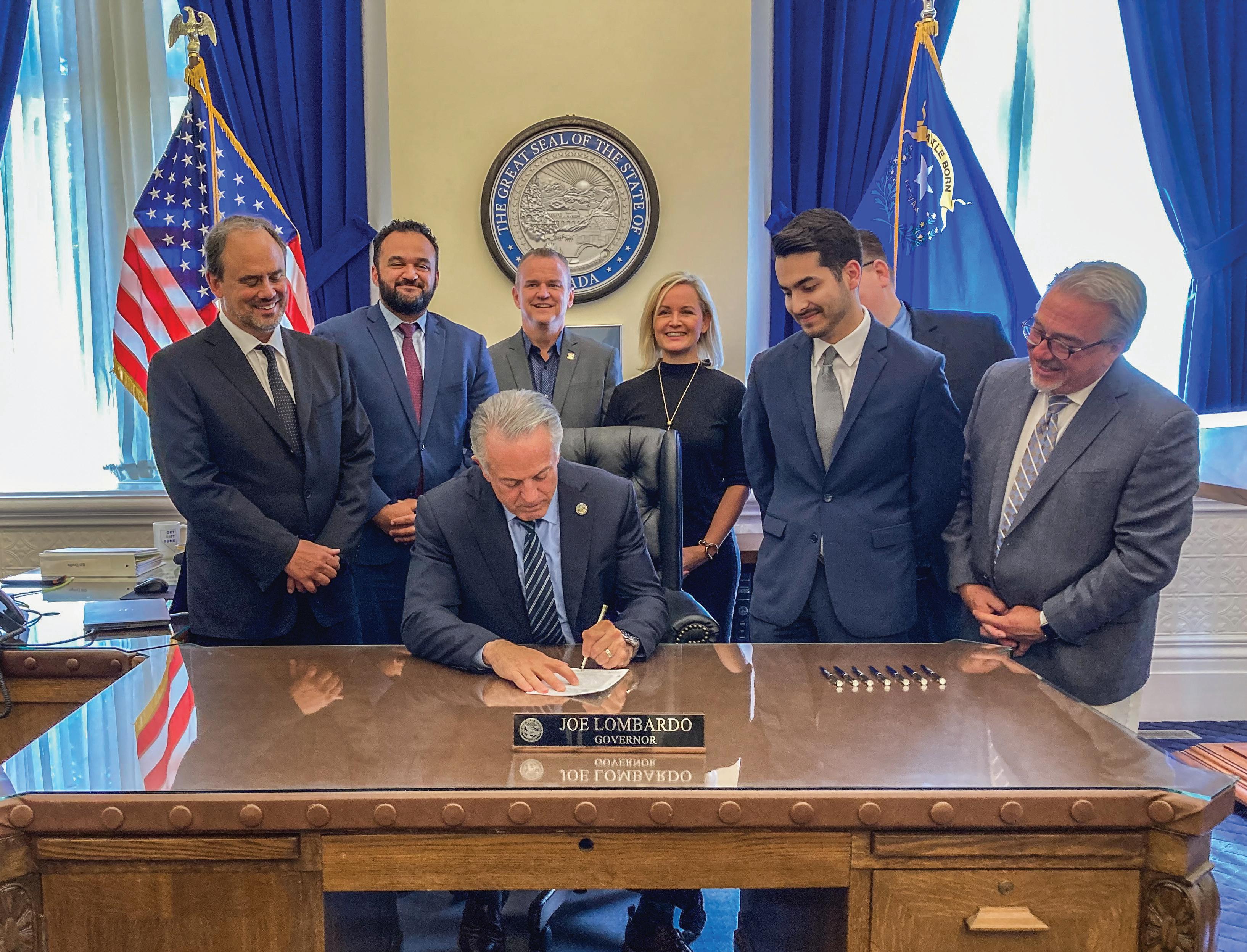
Nevada Solar Association, a hub for like-minded solar advocates currently with 10 installer members and more associate members, such as SEIA and Recheck. The group hired a lobbyist and began working with a diverse group that included financial institutions and HOA leaders on the next proposed legislation.
"The doors started to open, and [legislators] recognized that we weren't just putting a bill up for our own selfsatisfaction. To the contrary, it actually makes our life a little bit more difficult. We complied with 99% of what we ascribe to in this bill, but we still have to modify too," Hamile said.
The culmination of that work, SB 379, adds financial oversight to ensure proper solar installer licensing, strengthens customer disclosures for solar loans, leases and PPAs, expands project cancellation windows and restricts premature payment collection. A separate bill, SB 440, requires HOAs to process
rooftop solar requests within 15 to 35 days, clarifies contract rights and limits unnecessary restrictions.
Both bills were signed into law by Gov. Joe Lombardo in June.
"We think it's a model bill for American consumer protection, which is good for the consumer, but most importantly, it's good for the industry. Many, many consumers are confused because a lie always sounds better than the truth," Hamile said.
Sol-Up's advocacy work is a big reason solar transactions will be safer in the state of Nevada.
"What I found is that legislators really want to be informed. They want to be educated. If not, they're going to look to [who] they consider the smartest person in the room to make that decision for them," Hamile said. SPW

BY KELLY PICKEREL
Vermont is known as the Green Mountain State for good reason — yes, the Green Mountains run through its center, but the state features lush forests from border to border, and naturalists flock to the area to watch foliage change colors each season. That dedication to protecting the uninterrupted view of greenery can sometimes make a Vermont solar installer’s job difficult, especially when a town wants to go 100% solar.
Aegis Renewable Energy (No. 275) solved that puzzle this past year for the town of Colchester, bringing online four unconventionally sited projects. After working with the third-most-populated municipality in Vermont in 2018 on a 150kW ground-mount project along a small stretch of Roosevelt Highway and another 150-kW ground-mount at a pumpkin patch, Aegis completed projects at a local cemetery and the town’s new recreation
center in 2024. The town had a goal to install 720 kW, and Aegis made it happen.
“They’ve been trying to get to 720 kW, because that is how much the town uses for their power, so they wanted to offset that,” said Sonia Behn, Aegis VP. “Every year, we try to find a new site to get them to reach this goal. And finally, this year, they’re making enough solar power to offset the town’s electrical needs.”
While siting the two 2018 projects was straightforward, finding room for that last 420 kW was not. Behn said Colchester lacks land that can support solar without either significant shading issues or requiring forest clearing. To avoid that, Aegis suggested rooftop and carport arrays for the under-construction rec center, along with another ground-mount on an unused parcel at the Fort Ethan Allen Cemetery.
“We’d been struggling to find a site that would be productive,” Behn said. “That’s why we brought up the carport idea. It’s a creative way to get them to the number they needed.”
The rec center — 20 years in the making — opened to the public in February 2025. The facility features an indoor track, basketball court, gym, a 120kW rooftop array and a 150-kW carport that spans the parking lot.
Aegis’ design, permitting and project manager Aaron Lavallee said the rec center has a butterfly-style 5° inwardsloping roof that required a racking system that could be tilt at both 5° and 15°, giving the array a final 10° tilt. The company picked Sun Ballast, an Italian concrete racking with U.S. distribution.
“The Sun Ballast product was a price-competitive, all-in-one solution for us. The racking is the ballast, and
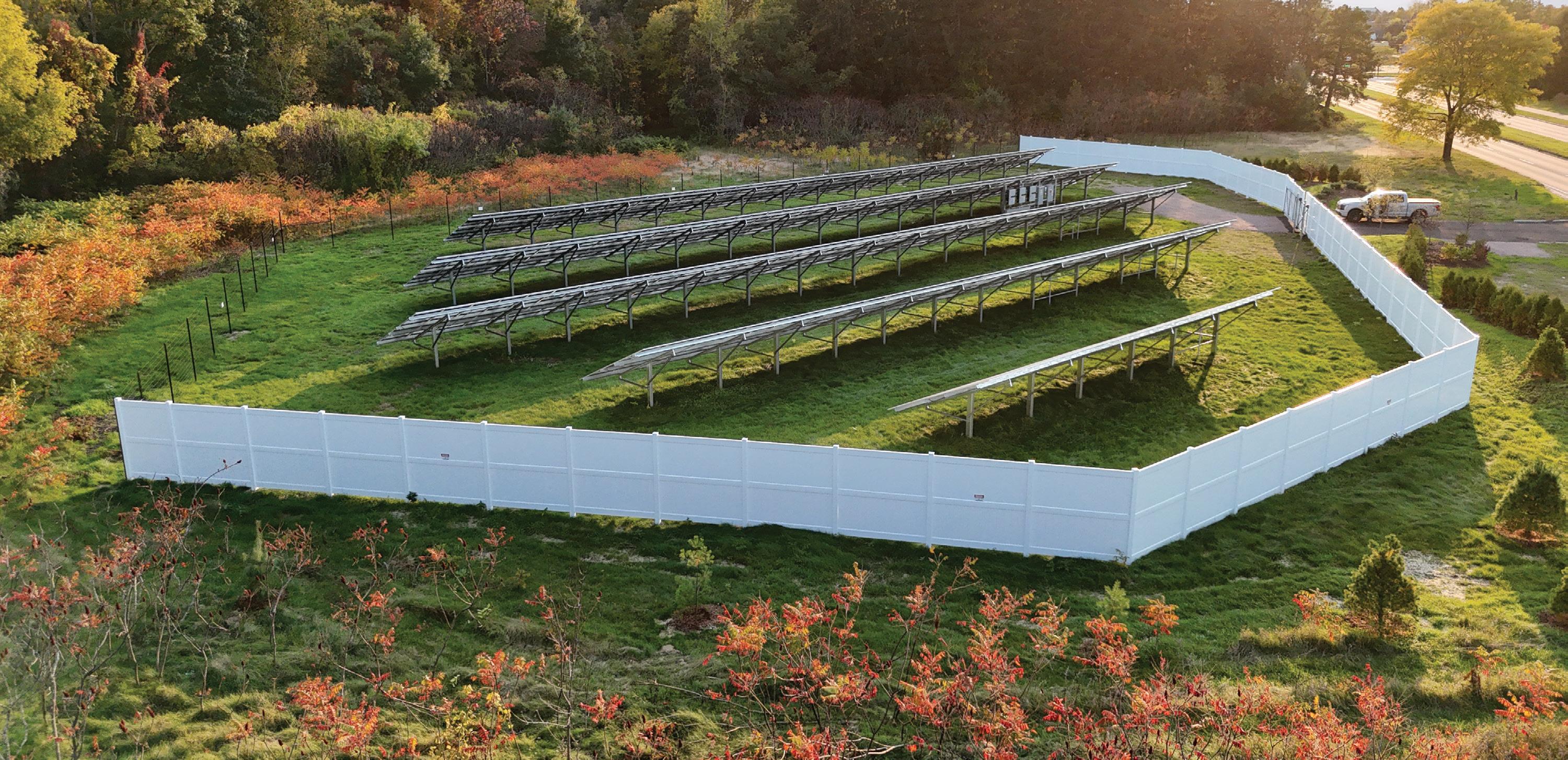
it's also designed to ground the array,” he said. “They have a U.S. distributor in New Hampshire, which greatly reduced production and shipping times, and as a bonus, it qualifies for domestic content.”
For the carport, Aegis used Terrasmart’s long-span canopy product with a few tweaks. The town wanted a minimum clearance of 14 ft under the drive lane to accommodate fire and other safety vehicles and snowplows.
“[Fourteen feet] was our starting point on the low end, and it reaches 18.5 ft on the high end,” Lavallee said. “We also had to span the entire paved area of 67 ft, which required some additional engineering to achieve.”
On the other side of town sits Fort Ethan Allen, a U.S. Army post established in 1894 and closed in 1944 that is now home to the Vermont National Guard and various businesses. The fort, named after Vermont founder Ethan Allen, supported a small cemetery to the southeast for military personnel. Half of the cemetery property was unused, making it a perfect spot for a 150-kW solar ground-mount.
An archeological investigation was completed at the site to ensure historical preservation. No issues were found, so Aegis completed a bifacial fixed-tilt project adjacent to a busy, four-lane road. Since it is a well-trafficked area, the town requested aesthetic improvements, and Aegis worked with local landscapers and fencing providers to obstruct the view of the solar project. The result is a beautifully landscaped electricity site next to a historic 130-year-old cemetery, all surrounded by the state’s promised green mountain environment.
Behn said it was a fun challenge to meet Colchester’s solar goal, with the final two projects bridging the old with the new.
“The rec center was a brand-new building,” she said. “And we took an old [military] gravesite and revived the land into something purposeful and useful.” SPW


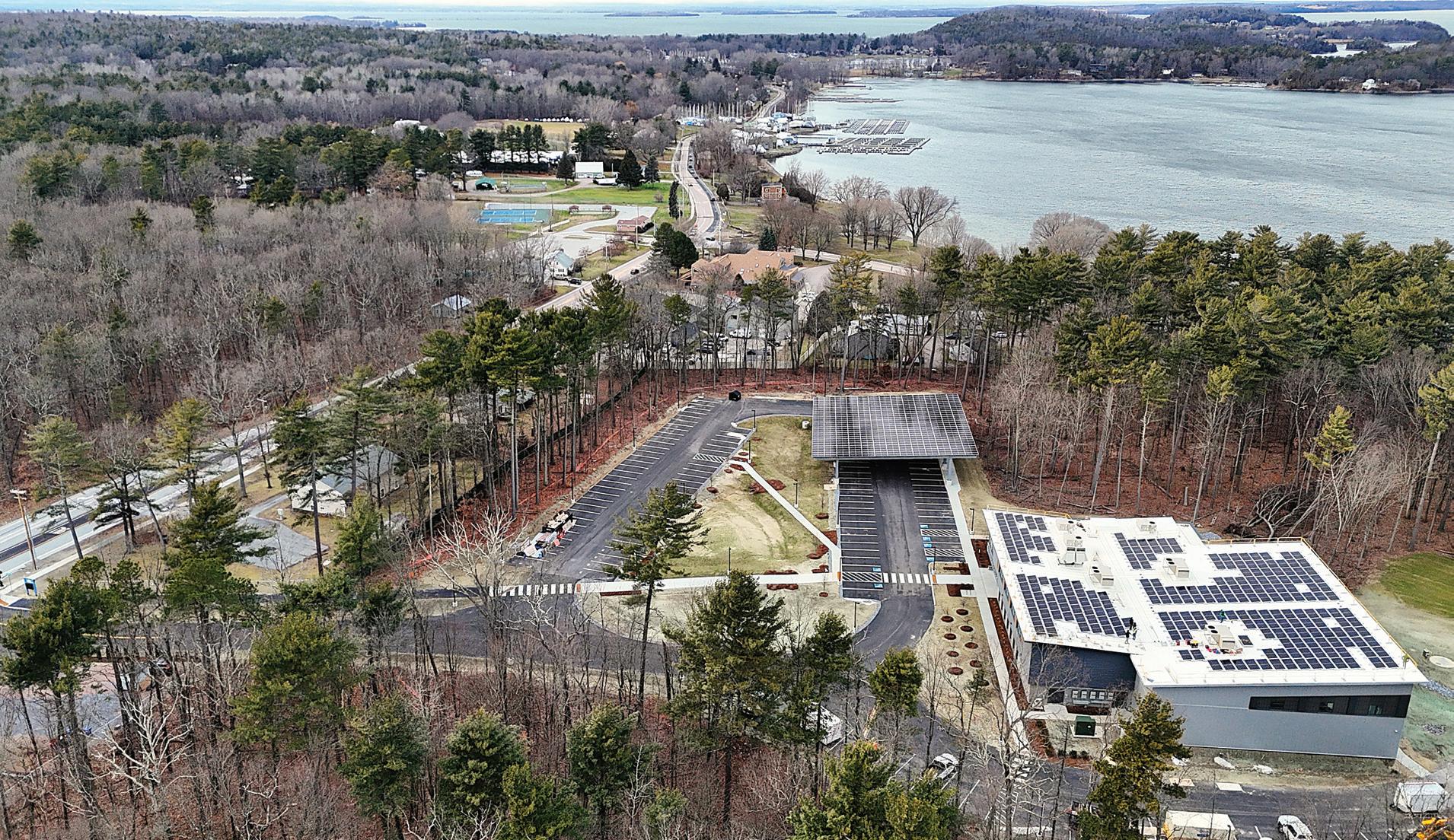

BY BILLY LUDT
A solar array built over an Arizona canal last October made history as the first project of its kind completed in the United States. This 1.3-MW solar project was erected over a 3,000-ft stretch of canalway in Casa Blanca, a community just south of Phoenix within the Gila River Indian Reservation.
Planning and construction of this project engaged indigenous labor and community groups, as well as minorityowned businesses, and the generated solar electricity is directly serving the Gila River Indian Community (GRIC). Miami Wiipica, a contractor member of the Miami Tribe of Oklahoma, assisted with the project’s construction, along with Straight Arrow Contracting of Goodyear and Industrial Solar Consulting (No. 283) of Gilbert.
Fernando Vigil, president and solar PV design systems engineer at ISC, founded the company in 2010 after focusing on offgrid setups at Kyocera Solar. ISC’s earliest projects were building solar-powered surveillance systems for the military before shifting to PV telecommunications systems and settling into rural electrification projects.
ISC has worked with Straight Arrow on many solar projects over the last six years and was hired for the GRIC canal project through its recommendation.
“We’re trying to use our knowledge in the off-grid space to help marginalized communities and Tribal nations that don’t have access to electricity,” Vigil said. “We’re working with a lot of tribal entities and trying to make sure that they have the energy sovereignty that they need and that they deserve.”
GRIC has resided on this land and tended to it for generations, relying on water flowing from nearby canals, especially for agricultural purposes. But Arizona is in the midst of a yearslong drought, and 2024 was Earth’s hottest summer on record, causing higher levels of evaporation. Canal solar projects have been proposed as solutions to reduce evaporation in these waterways that are critical to western communities.
This custom-built array spans the width of the canal, and its foundations were mounted to concrete columns placed along the waterway. For five months, the array was assembled in sections to better follow the winding path of the canal. Installers placed these sections on ballast blocks and worked underneath, pre-wiring the electrical


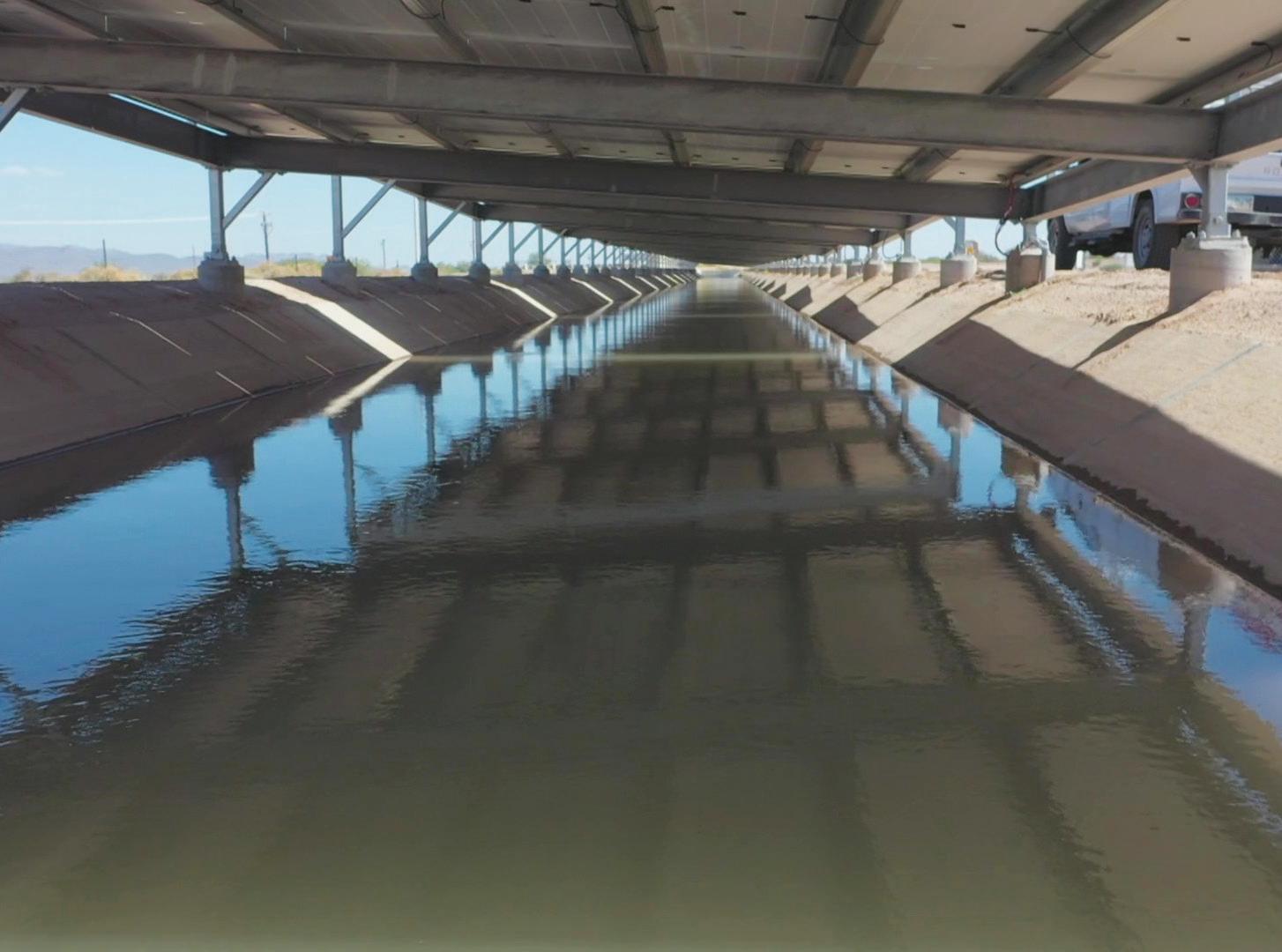
components before they were hoisted by a crane and placed on racking.
The Casa Blanca Canal project is providing power to the Pee Posh and Akimel O’otham tribes that compose GRIC, and the community intends to increase its solar output over the waterway. The impact of this canal canopy project will be studied over five years — tracking evaporation, algae growth and the water’s effects on steel — and GRIC hopes to one day cover more than 18 miles of canal with solar.
This first project received $5.65 million in funding from the Inflation Reduction Act, but similar subsidies
may soon be rescinded in budget reconciliation. Regardless, GRIC is committed to renewables and is already planning to start construction on a floating solar array this September.
Just north of Casa Blanca is the Gila River, a waterway that was once the local Tribes’ source of water for agriculture that dried as settlers developed the region. They diverted water and built canals to continue growing crops in the Sonoran Desert. In 2024, GRIC completed the first canal solar project in the Western Hemisphere with help from an indigenous workforce and minorityowned businesses, like ISC.
“We’re really fortunate to be able to do this and have this be something that’s going to be beneficial for that community,” Vigil said. “It’s really what we want to be doing as a minorityowned small business — growing up in areas that are lower-income and being able to support families that are being left behind. There’s so many people just in the Four Corners area that don’t have access to electricity. That’s what we’re really focused on, trying to fill the gap the best we can to help those to overcome these inequities that we’re seeing — these generational, systemic inequities.” SPW

BY KELSEY MISBRENER
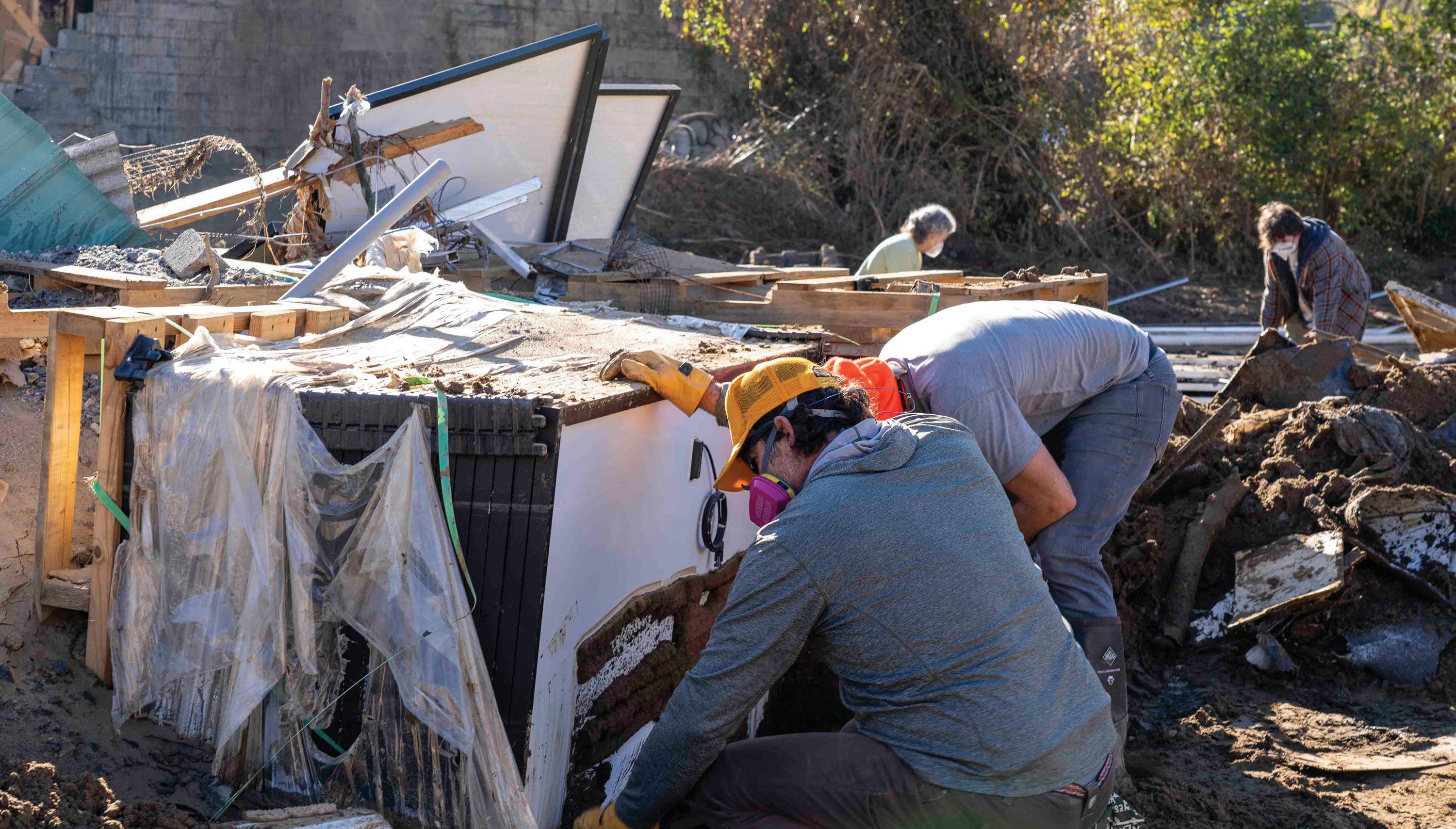
Sugar Hollow Solar has spent over a decade building a strong residential solar business in western North Carolina, based out of the eclectic, buzzing town of Asheville. With a warehouse at Biltmore Village — a town created to house employees of George Vanderbilt's enormous Biltmore Estate — the business is Asheville through and through. But the 1,000-year floodwaters of Hurricane Helene threatened to wash away all it had accomplished.
Last fall, wind and flooding from the hurricane overtook Sugar Hollow's (No. 273) Biltmore warehouse. Cell service was nonexistent for team members in
the direct area, so the first 48 hours were spent checking on neighbors, finding food and water and assessing immediate needs.
"One of our staff members lost her entire house. She swam out of 25-ft swells of water with her one-year-old child, her disabled mother, her dogs," said Johanna Hagarty, director of marketing and development for Sugar Hollow.
Hagarty lives close to downtown Asheville, on the same grid as the main hospital. That meant she got power back sooner than other residents, but it still took almost three days. That was three days the hospital had to operate on
backup generators without running water.
"Of course, it wasn't our time to be like, 'Hey, hospital, let's sell solar,' but it is the time to talk about why those things are so invaluable moving forward. Climate change is real, climate disasters are happening all over, and this is one of the ways that we protect ourselves," Hagarty said.
When Sugar Hollow employees were able to safely assess the warehouse, they found around $1 million in ruined solar products and tools. Luckily, they had already signed a lease for a new combined warehouse and office space that was on higher ground and unharmed by the

devastation, so they moved employees and trucks there. Then they planned how to rebuild.
"We were able to start reaching out to Amicus Solar Cooperative that we're part of, and we really started talking to our partners. We even had local competitors offering products, bringing things to us. So, we got a slapstick starter group of products at our warehouse, and within two weeks, we were back to installing," Hagarty said.
“Of course, it wasn't our time to be like, 'Hey, hospital, let's sell solar,' but it is the time to talk about why those things are so invaluable moving forward. Climate change is real, climate disasters are happening all over, and this is one of the ways that we protect ourselves.”
Johanna Hagarty • Sugar Hollow Solar
It took time to get the full inventory back up and running. Like many in Asheville, Sugar Hollow did not have flood insurance, so most of the losses were not covered. Instead, the company applied for FEMA money and small business grants.
"We've got tens of thousands of dollars in small business grants that were really, really valuable for us. Our finance partners were really gracious with us. Everybody had to work with us," Hagarty said.
Even as a stable business of 14 years in 2024, the hurricane tested Sugar Hollow's resolve and connections. Sugar

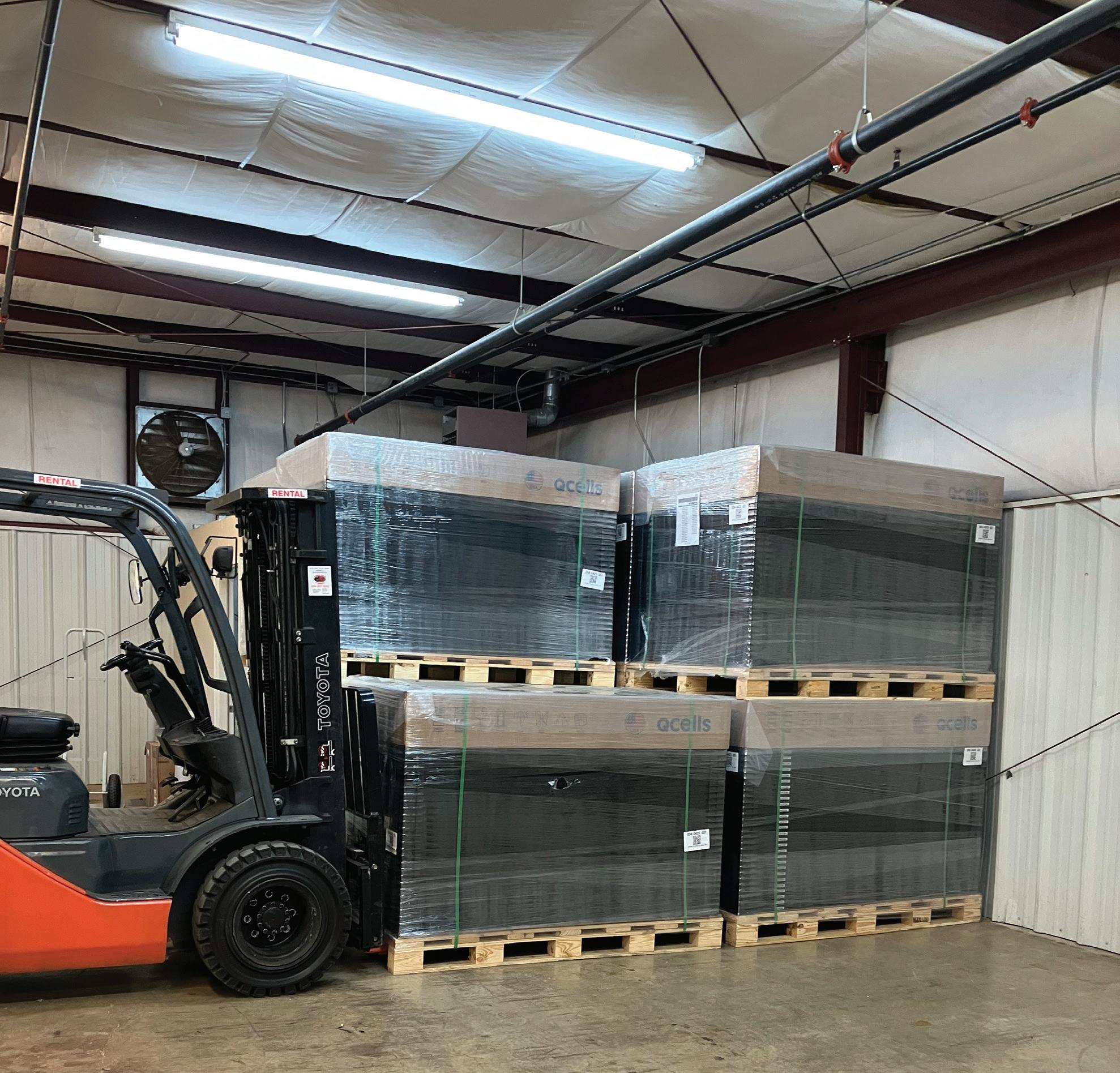

Hollow had already become a Certified B Corp in the summer before the storm. Enduring this catastrophe only sharpened the company's focus on its people and community.
"In this rebuilding process, we really wanted to figure out, where do we fit in in putting us back together and making us healthy as a community?" Hagarty said.
Sugar Hollow started the Repower WNC Fund to increase their community’s access to renewable energy. Those funds help support the Earthshine Nature Community Assistance Program, which deploys solar-powered, all-electric vehicles
for community organizations that could serve as hubs in case of future disasters. The company recently completed a 9.75kW solar + storage installation for The Worx Project, a career tech campus for youth in Western North Carolina.
As far as silver linings, residential solar + storage interest ballooned after people had to endure weeks without power. Messages from current solar customers on how they were able to help their neighbors with their backup systems came pouring in during that time, too.
"One of my favorite sweet stories was there was a neighborhood and a
solar and batteries. Then, they had a whole fish fry for the community, and everybody got to eat yummy food," Hagarty said.
Even with the potential repeal of the residential solar tax credit, Hagarty says it's clear people who have experienced devastation like the hurricane will not be deterred from investing in renewable energy.
"I cannot tell you how many people called us and were ready [to go solar], even in the midst of disaster and crisis. They said, 'OK, I have to solve this problem,'" she said. "From that longer-

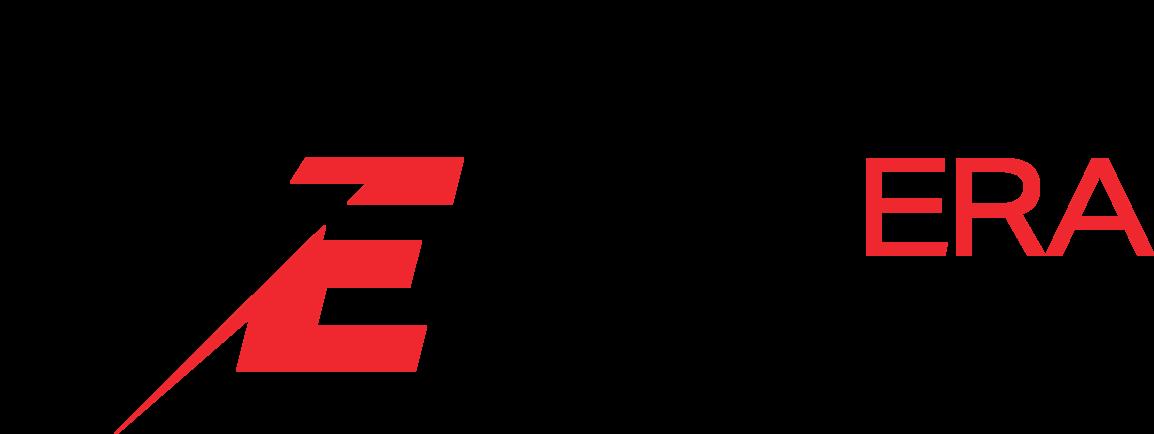
New Era Electric specializes in renewable energy and electrical contracting. From ground mounts to rooftops to battery storage to solar carport installations, New Era Electric, is your project solution.
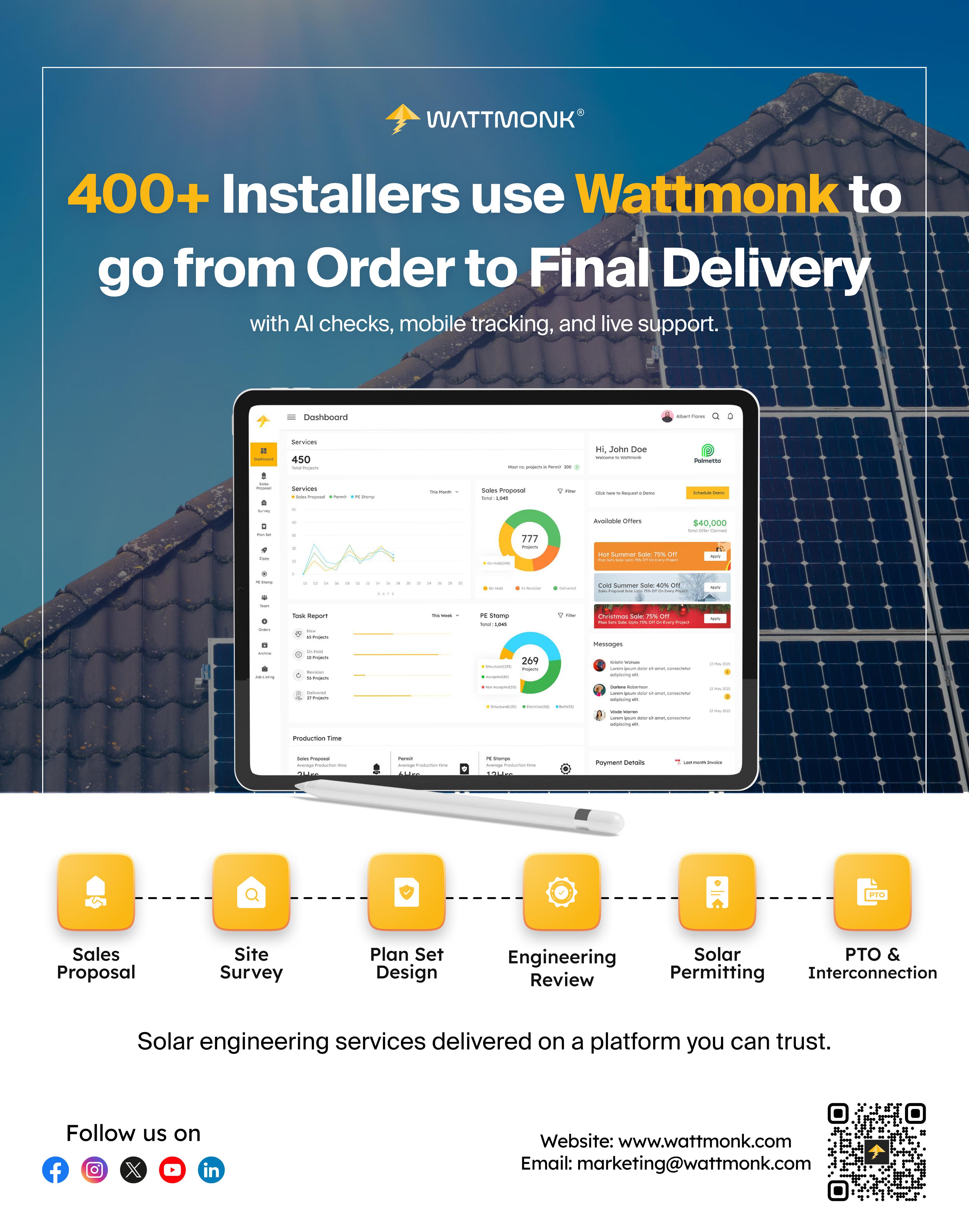

BY BILLY LUDT
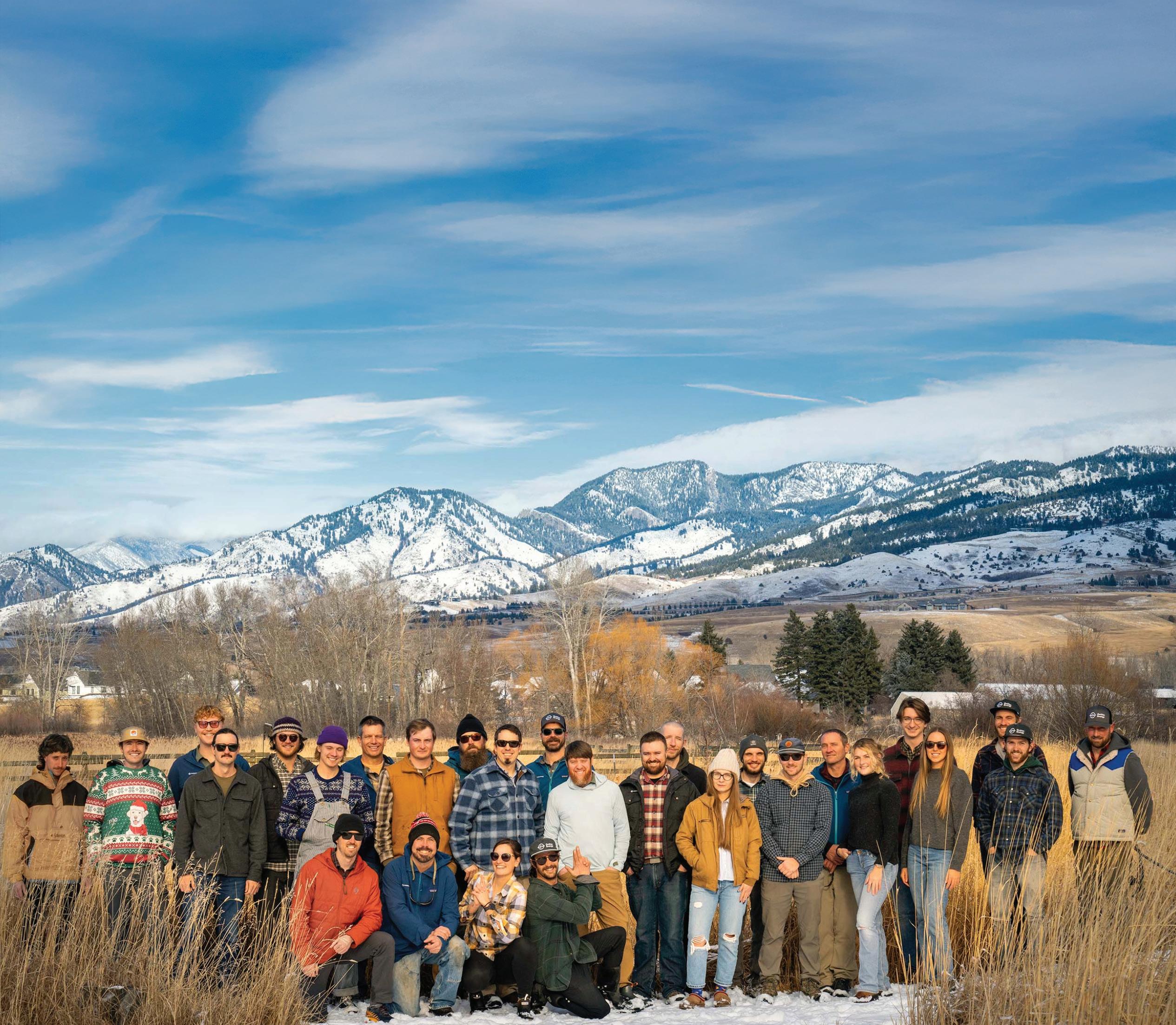
Photovoltaic solar has broken through to larger adoption thanks in part to the costsaving benefits it offers system owners. But Lexi Olson believes that most — if not all — of OnSite Energy’s (No. 319) clients are uniquely motivated to install solar for environmental reasons.
“The financial savings is just a cherry on top for them,” she said. “Our customers are very engaged in the local community. Whether they’re a business owner, on the board of a nonprofit or they volunteer. It feels like this interconnected network of people who care about sustainability.”
Olson is the marketing manager at OnSite, a residential and small commercial solar contractor based in Bozeman,
Montana, a city that’s a springboard to some of the country’s most popular natural sites, namely Yellowstone National Park. For a state that was once known for gold and silver mining, Montana’s natural features have become some of its most valuable exports. Preserving the state’s environment is paramount to both its residents and OnSite’s crew.
OnSite founders Orion Thornton and Conor Darby, avid outdoorsmen themselves, started Solar for Conservation in 2017, a program within the company that currently donates a percentage of project proceeds to 10 Montana nonprofits. These groups have missions in land conservation, public land and water access, maintaining clean air and
watersheds and wildlife protections. OnSite’s culture of conservation helped it become a certified B Corp, which recognizes organizations that operate at certain environmental and social standards.
“That’s just the norm in our company. They started it as a way to give back to the community and use solar as this vessel for furthering conservation efforts in Montana,” Olson said. “I think you could ask most Montanans, and that’s important to them and they value [conservation]; and you could ask any single one of our employees, too, and it’s something that we all really value.”
Thornton and Darby founded OnSite in 2012 to legitimize the practice of solar

construction in the region after working as solar installers at other companies. The company now works across Montana and has offices in both Bozeman and Missoula.
Olson said OnSite specializes in tailoring projects to customers with specific needs, taking its crews into the mountains and remote locations to build on steep roofs and in winter conditions. OnSite has built many solar projects for nonprofits as well, including a 36-kW system that powers all of the Yellowstone Forever Overlook Field Campus.
From companywide camping trips and mountain bike outings to volunteering time and project earnings to regional nonprofits, nature conservation is as intrinsic to OnSite as it is to many Montanans. SPW
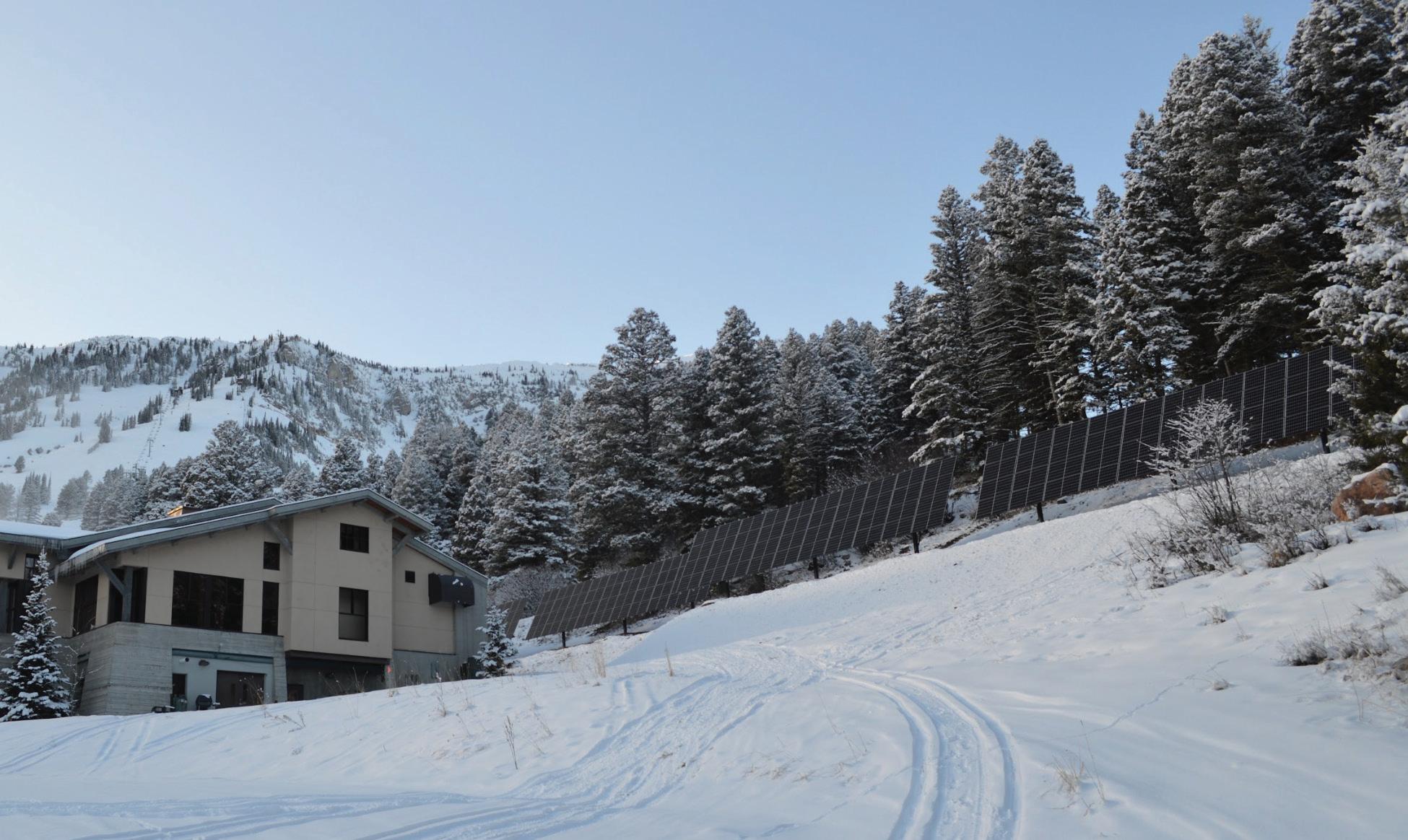
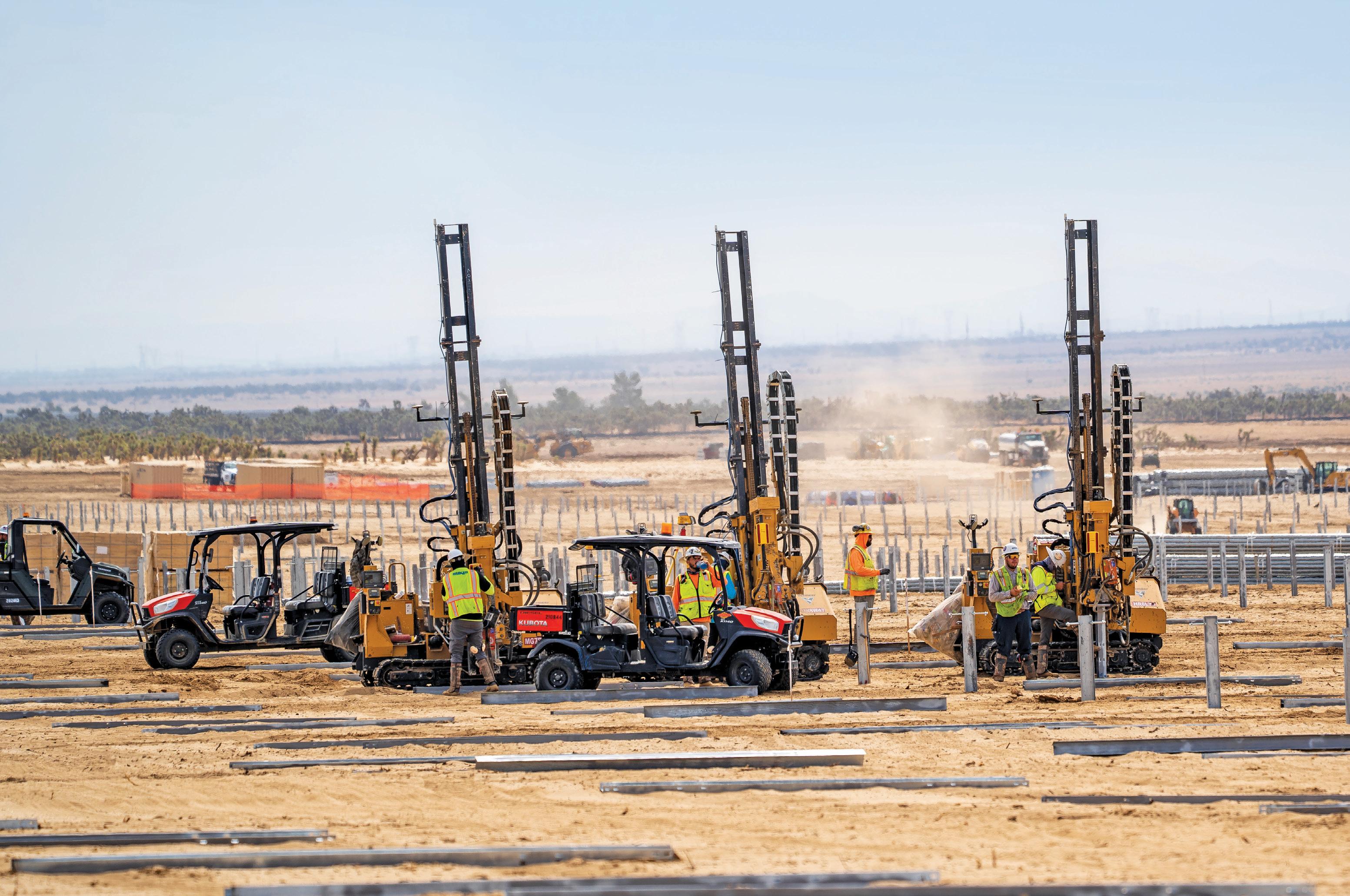


BY KELSEY MISBRENER
When a California asphalt manufacturer wanted to control its electricity bills with solar power, it wasn’t quite sure how to pull it off. The RJ Noble Company didn't have enough free space onsite to host the kind of power it was looking for. But it started a conversation with local contractor Tenco Solar (No. 216) to see if it was still somehow possible.
RJ Noble came into the project as a highly energy-educated solar customer — not necessarily the norm when it comes to commercial clients, even in California.
"They really controlled their energy very closely already. So, when we were talking to them, we started to do our typical education of an [electric] bill and how demand charges impact their rate
structure and how much they pay. And they're like, 'No, we know. We know all of that, not just some of it, but all of it,'" said Dan McIntyre, owner and president of Tenco.
As they began diving into the project, the Tenco team learned RJ Noble also owned a storage facility across the street from its manufacturing operation, with shipping containers used for customer storage units. That space was much more promising for siting solar, but it required some creative planning to use the energy off-site.
"The idea was to install the solar there and somehow figure out a way to route it to the power plant, which wasn't really possible by running conduit or sending a wire across the street," McIntyre said.
The best solution turned out to be virtual net energy metering, offered by the local utility Southern California Edison, where the power generated at the storage
site is sent to the grid, then allocated by the utility to a common meter across the street. This setup is typically used on apartment solar projects to spread solar savings across multiple units but worked well for this project too.
After figuring out the electricity logistics, the team had to solve the issue of actually installing solar on storage-container rooftops that cannot be penetrated or withstand heavy ballast loads.
"We worked on a couple of different engineering concepts — welding, doing other things — and then just kept thinking, kept ideating. We wanted the project. And I think when you have that attitude that, ‘We're going to figure out how to do this,’ you typically do," McIntyre said. "We had to brainstorm some ideas. And of course, one of the best ways to do that is to go to RE+."

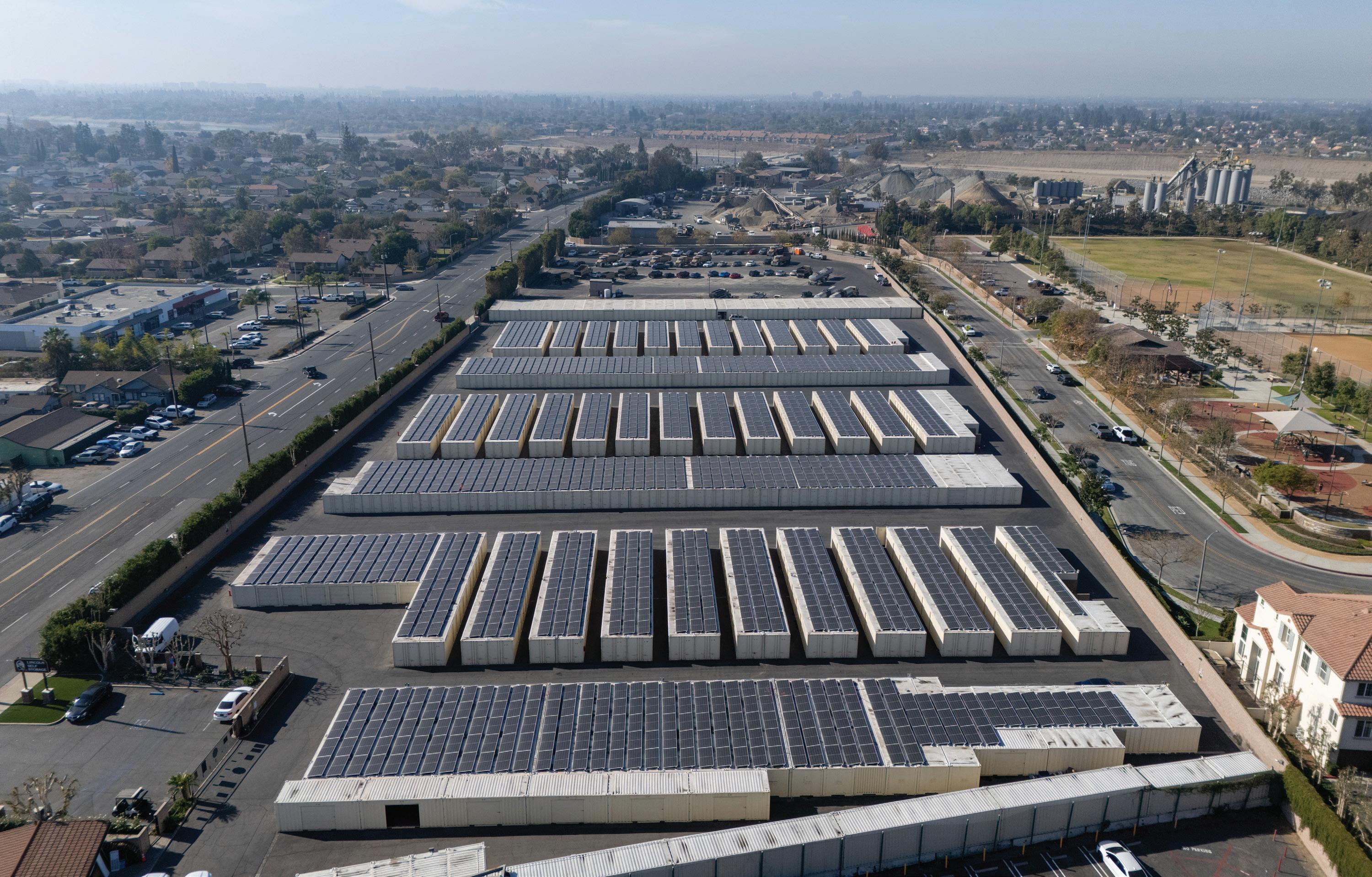
The team remembered an adhesivebased mounting manufacturer called Solar Stack from the previous year's tradeshow that promised damage-free, non-penetrative mounts. The product that uses a spray polyurethane foam adhesive for mounting proved to be the perfect solution for the metal container rooftops, even though the AHJ still needed some convincing to approve the plan.
“It did take some time and some working with [the AHJ] and getting additional engineering documentation done to show that the uplift value was going to be fine,” McIntyre said. “But it was absolutely great for a metal roof application. I would encourage anyone to try it there.”
NEM 3.0 was coming down the pike when RJ Noble started planning this project in 2022, so it was critical to get the project approved under NEM 2.0 before compensation rates were reduced. Tenco met that goal, delivering a project that would offset 40% of the manufacturer's energy usage, and learned a new method to install modules on fragile rooftops along the way. SPW


BY KELLY PICKEREL
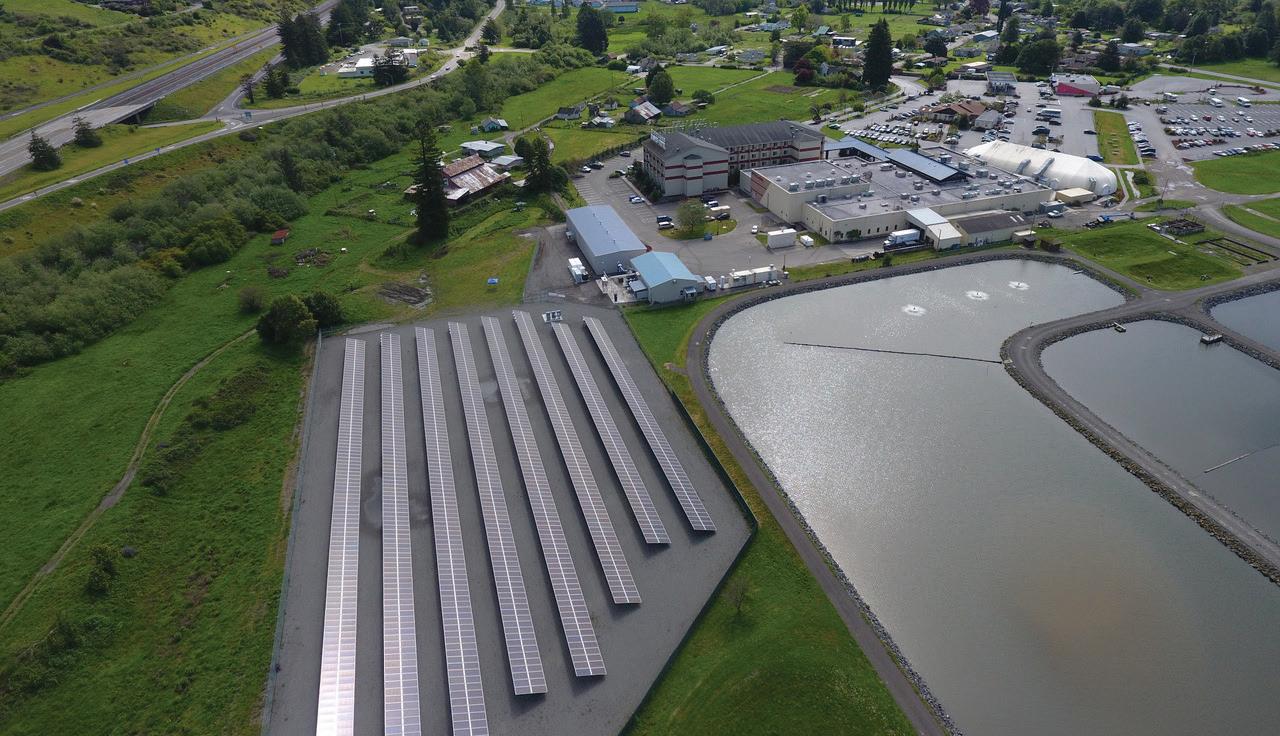
Being part of the solar industry is often described as riding the solarcoaster — there have been many ups and downs, whether it’s receiving favorable tax credits that boost installs or facing tariffs that stall supply. No company has taken the ride more often in the last 30 years than REC Solar (No. 89). The distributed generation (DG) contractor has sold portions of its business, been bought by a utility, put up for sale and now finds itself under private equity investment — and the REC Solar brand has never been stronger. The secret to success might be the dedication of its employees, especially those who stayed through all of REC Solar’s transitions.
REC Solar was founded in 1997 as a solar installation company working across
all markets. In 2014, REC Solar sold its residential division to Sunrun, choosing to focus entirely on distributed generation. At the time, many electrical utilities recognized the growing popularity of DG projects and wanted to expand their energy portfolios. Duke Energy acquired a majority interest in REC Solar in 2015, which let REC Solar offer additional financing options to customers, including leases and PPAs. In 2017, Duke Energy fully acquired REC Solar, and the solar company became a branch of the Duke Energy Renewables organization. In 2021, Duke combined its renewable businesses under a new commercial brand name: Duke Energy Sustainable Solutions.
After years with REC Solar under its umbrella, Duke wanted out of the
installation space so it could focus on its utility and grid efforts. In 2023, it sold its utility-scale line to Brookfield, and the commercial business, along with REC Solar, went to investment firm ArcLight Capital Partners.
Matthew Thomas has been with REC Solar through every major event of the last decade-plus. Thomas started at REC Solar in 2009 in residential operations before ultimately landing in finance. Currently acting as REC Solar’s CFO, Thomas has been in the room when many of the company’s versions were taking shape.
“I consider this, for myself at least, as REC 4.0,” he said. “We’ve gone through several different iterations since I’ve been around, but I feel really good about our
ownership [today]. They want us to succeed.”
REC Solar VP of sales and marketing Ann Kroll agrees that ArcLight is providing REC Solar with the resources to succeed now as an independent power producer instead of just an EPC.
“I got to go through the sale process and talk to all the companies,” she said. “Working with an investment firm can be intimidating, but ArcLight made it clear they were the smartest and most helpful people. They’re here to help us succeed. They’re bringing in people to help us.”
Kroll came to REC Solar in 2016 during the Duke investment, even becoming a Duke Energy employee before hopping back to REC Solar today.
“I was in tech, and I liked what I did but I did not connect with the product,” she said about her career before REC Solar. “To move into solar and actually care about what I did was a lovely thing. That’s the culture, and when I came into REC, I noticed that as a difference. They were kind and smart people who were there for the long-term. It wasn’t a culture of ‘me,’ which I saw in the tech world. It was [about working] collaboratively. That cultural DNA really does help us take whatever chapter we need to support customers and evolve.”
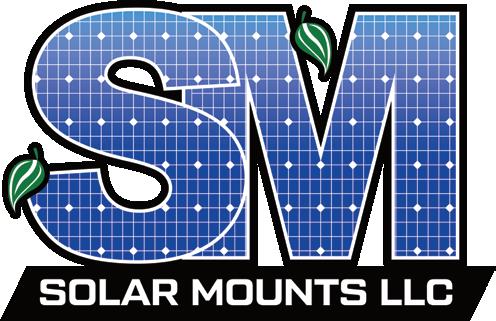
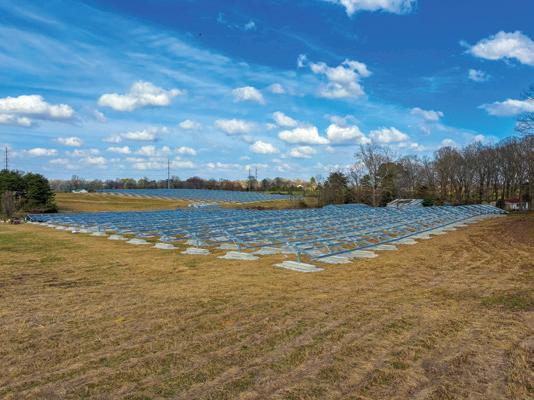
The Duke-REC Solar relationship was mutually beneficial. Duke Energy wanted influence in the DG world, and REC Solar wanted the financial backing to offer customers better options to go solar. Even though they’ve gone their separate ways, Kroll said Duke was necessary for setting REC Solar on its path to success today.
“It provided differentiation that we had a really firm and solid foundation to back and provide PPAs with,” she said. “From a branding standpoint, we’re not just a mom-and-pop shop. We have real backing to finance and own systems for the long-term. Duke enabled us to have financing, and now we have ArcLight, which is super respected and they have that firm foundation.”
Thomas said that outside support and respect for REC Solar as a brand has resonated internally too.
“There are not a lot of solar companies out there still doing what we’re doing, 10 or 20 years later,” he said. “I don’t think we’re complacent at all. It took a lot of work to make it 20 years. It’s going to take a lot of work to keep doing it. We’re seeing many employees coming back [to REC] that left at one time. I think that speaks to people working in the industry [recognizing] that REC has something special.”

One new hire who recognized REC Solar’s magic and wanted in is CEO Robb Jetty. Having an already lengthy career in solar, Jetty joined REC Solar in 2024.
“Not only has REC Solar been a respected industry leader for decades, but it also remains one of the most recognized brands in the industry,” he said. “I was drawn to the opportunity of helping to grow another company in the distributed generation space and working with such a talented, respected and purpose-driven team.
“Solar is a constantly evolving industry driven by new technologies, markets and incentives. You have to choose a team that you know will be here for the long term,” Jetty continued.
Through whatever the next three decades bring, REC Solar will adapt, and dedicated employees will continue on the ride.
“We’ve got a lot of wind to our back, especially with the uncertainty in the market right now. If feels like we’re still going in a positive direction. It’s the solarcoaster, right?” Thomas said. “Maybe it’s because I’ve seen everything [in 16 years at REC], but I feel like right now we’re in the best place that we have been, and we’re setting up the company for success.” SPW

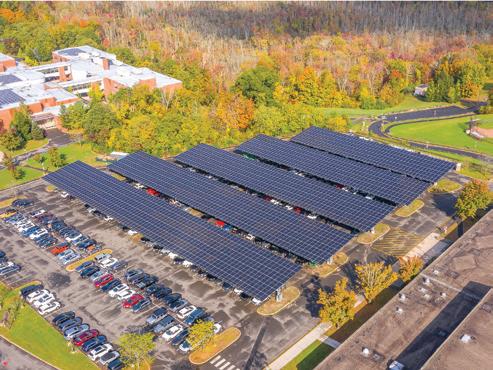
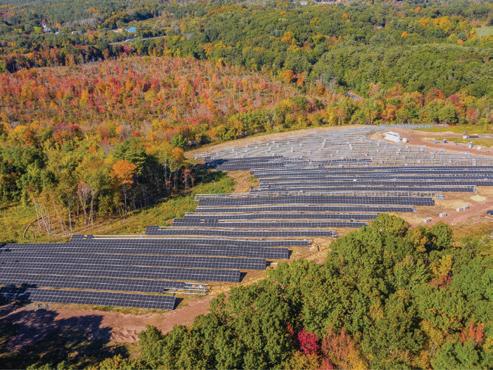
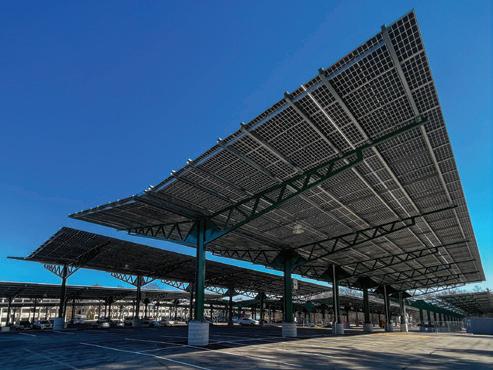



SOLAR POWER WORLD does not pass judgment on subjects of controversy nor enter into disputes with or between any individuals or organizations.
SOLAR POWER WORLD is also an independent forum for the expression of opinions relevant to industry issues. Letters to the editor and by-lined articles express the views of the author and not necessarily of the publisher or publication. Every effort is made to provide accurate information. However, the publisher assumes no responsibility for accuracy of submitted advertising and editorial information. Non-commissioned articles and news releases cannot be acknowledged. Unsolicited materials cannot be returned nor will this organization assume responsibility for their care.
SOLAR POWER WORLD does not endorse any products, programs, or services of advertisers or editorial contributors. Copyright © 2025 by WTWH Media, LLC. No part of this publication may be reproduced in any form or by any means, electronic or mechanical, or by recording, or by any information storage or retrieval systems, without written permission from the publisher.
SUBSCRIPTION RATES: Free and controlled circulation to qualified subscribers. Non-qualified persons may subscribe at the following rates: U.S. and possessions, 1 year: $125; 2 years: $200; 3 years $275; Canadian and foreign, 1 year: $195; only U.S. funds are accepted. Single copies $15. Subscriptions are prepaid by check or money orders only.
SUBSCRIBER SERVICES: To order a subscription or change your address, please visit our web site at www.solarpowerworldonline.com
SOLAR POWER WORLD (ISSN 2164-7135) USPS PUBLICATION # 22130, Copyright © 2025 by WTWH Media, LLC is published 6 times per year: January, March, May, July, September and November by WTWH Media, LLC, 1111 Superior Avenue, Suite 1120, Cleveland, Ohio 44114. Business and Editorial Offices: WTWH Media, LLC, 1111 Superior Avenue, Suite 1120, Cleveland, Ohio 44114. Accounting and Circulation Offices: WTWH Media, LLC, 1111 Superior Avenue, Suite 1120, Cleveland, Ohio 44114. Periodicals postage is paid at Cleveland, Ohio and additional mailing
SEPTEMBER 8-11, 2025
LAS VEGAS, NV
Join conversations with industry buyers, suppliers, distributors, consultants, and more to explore solutions, exchange ideas, and discover new technologies .






